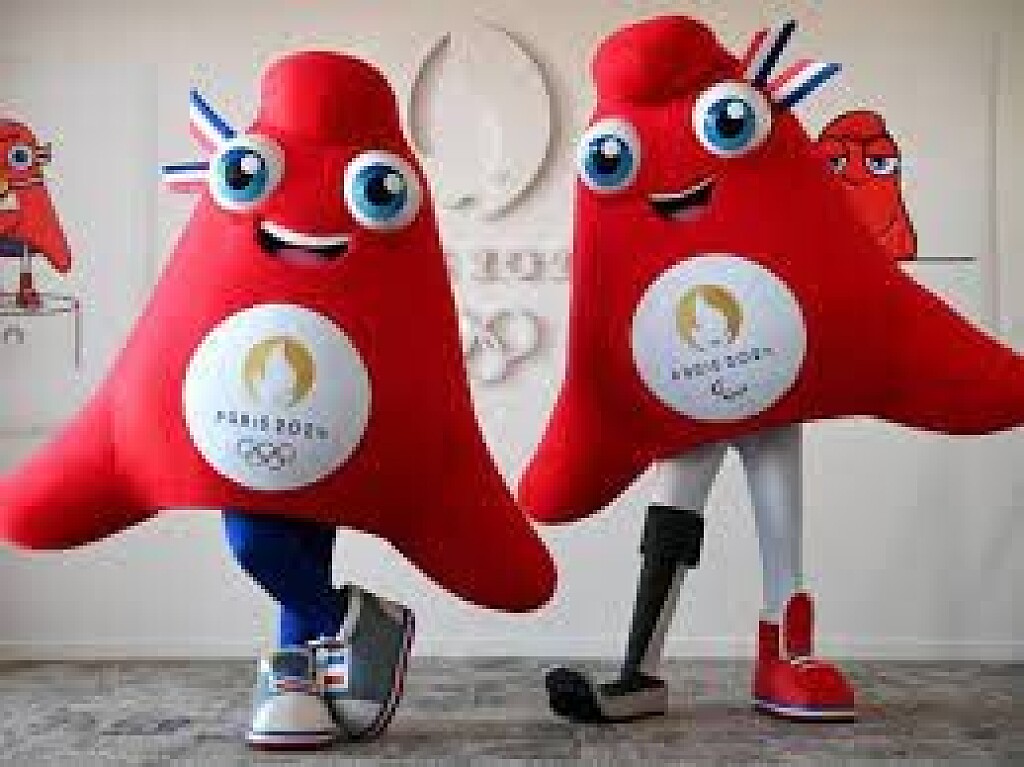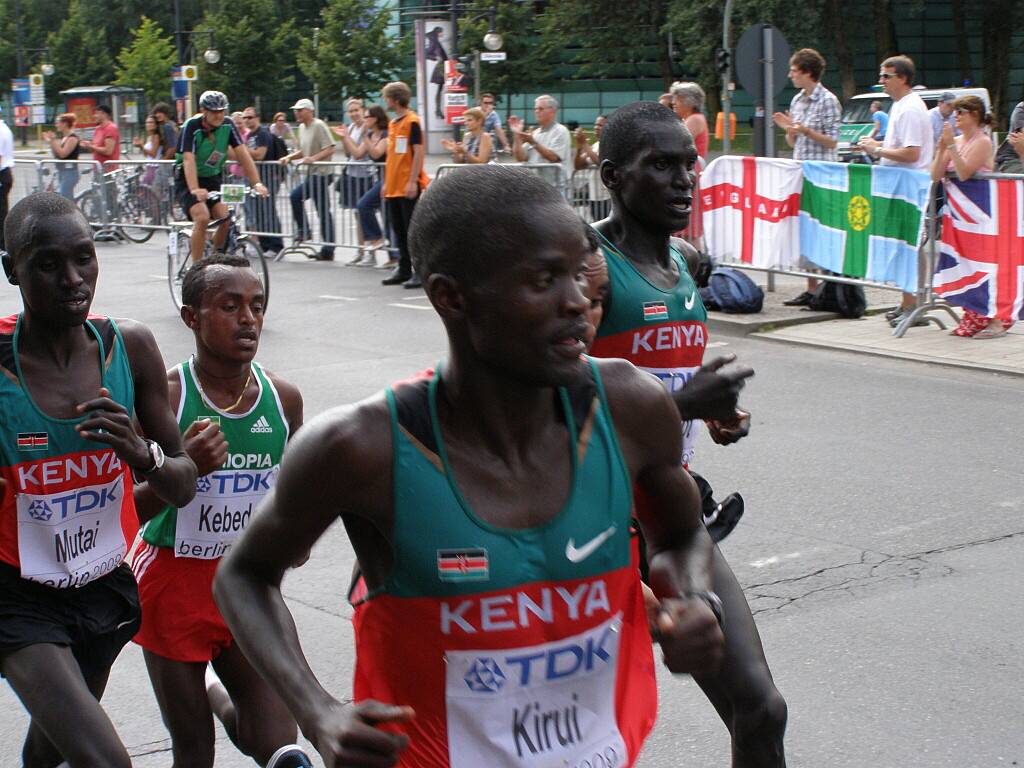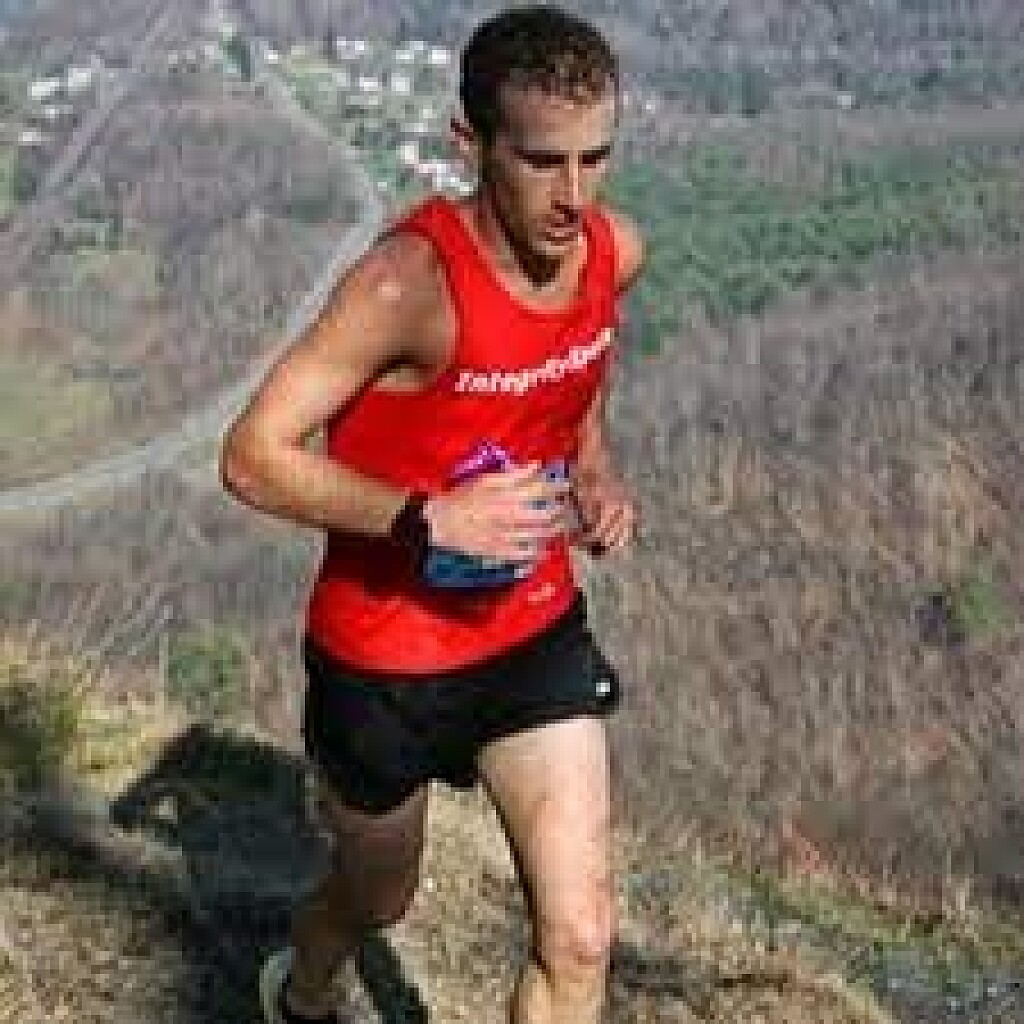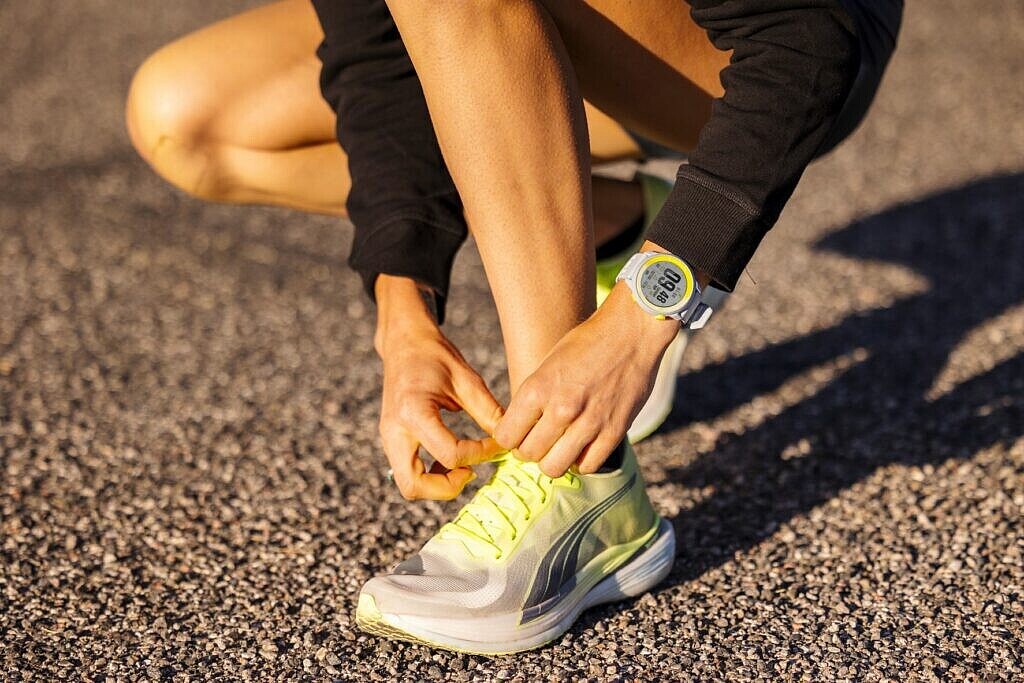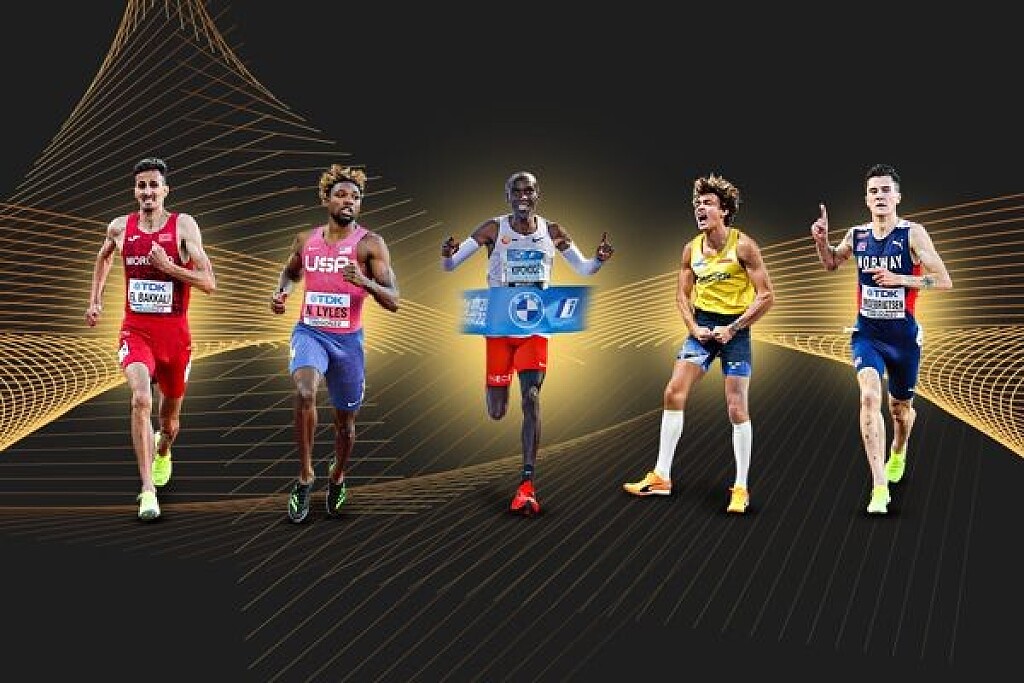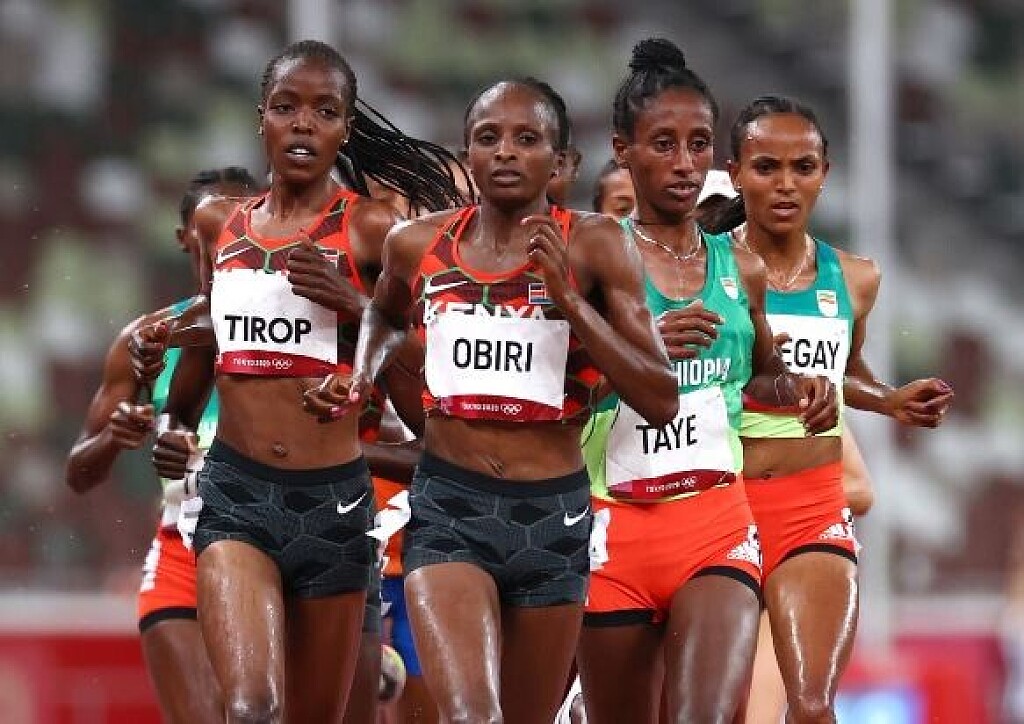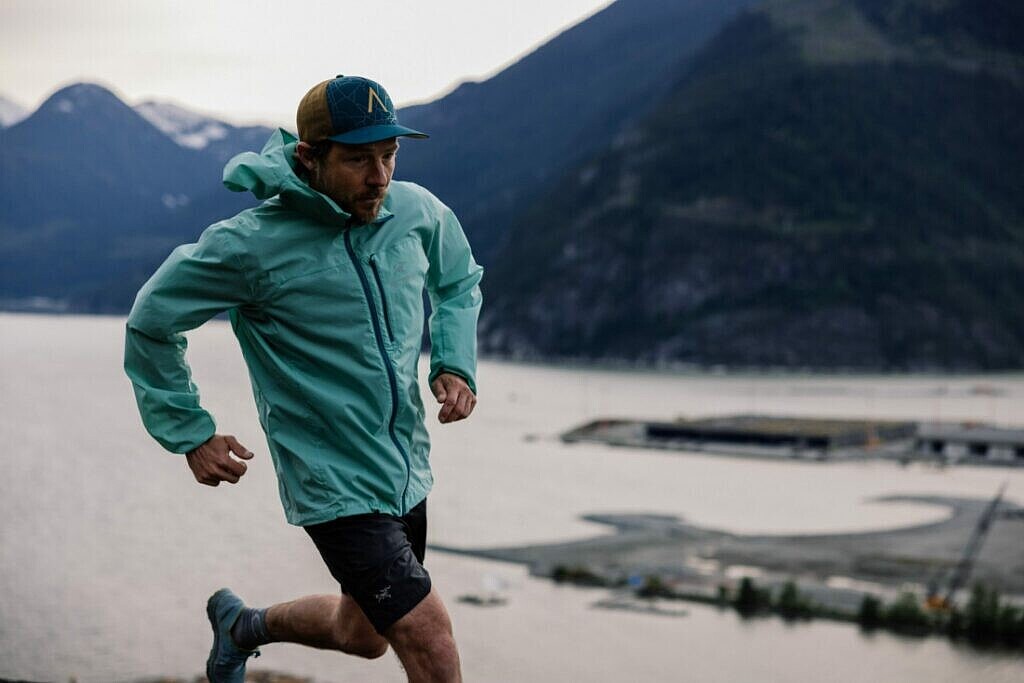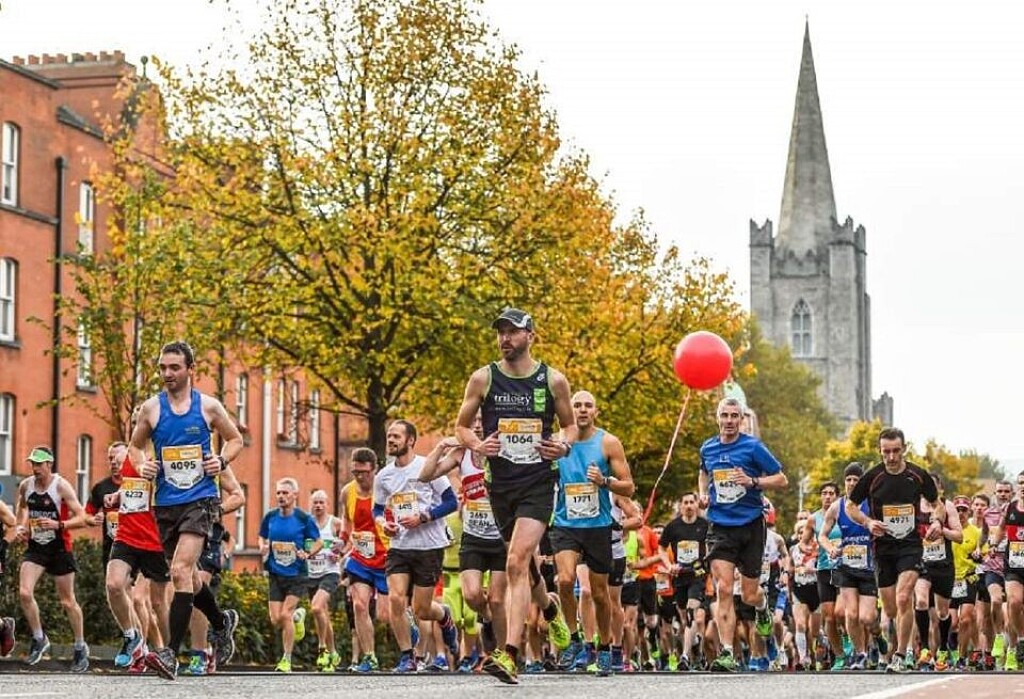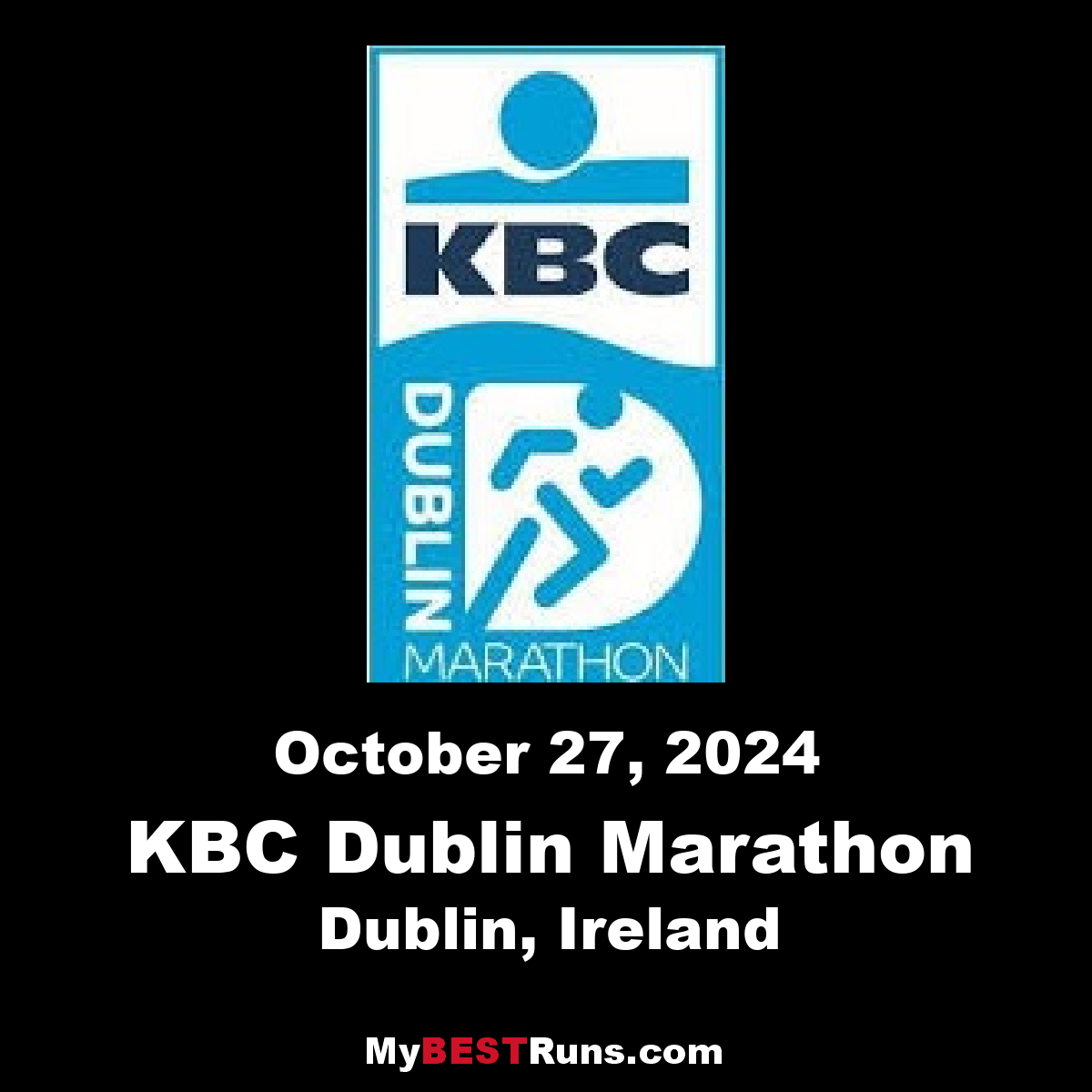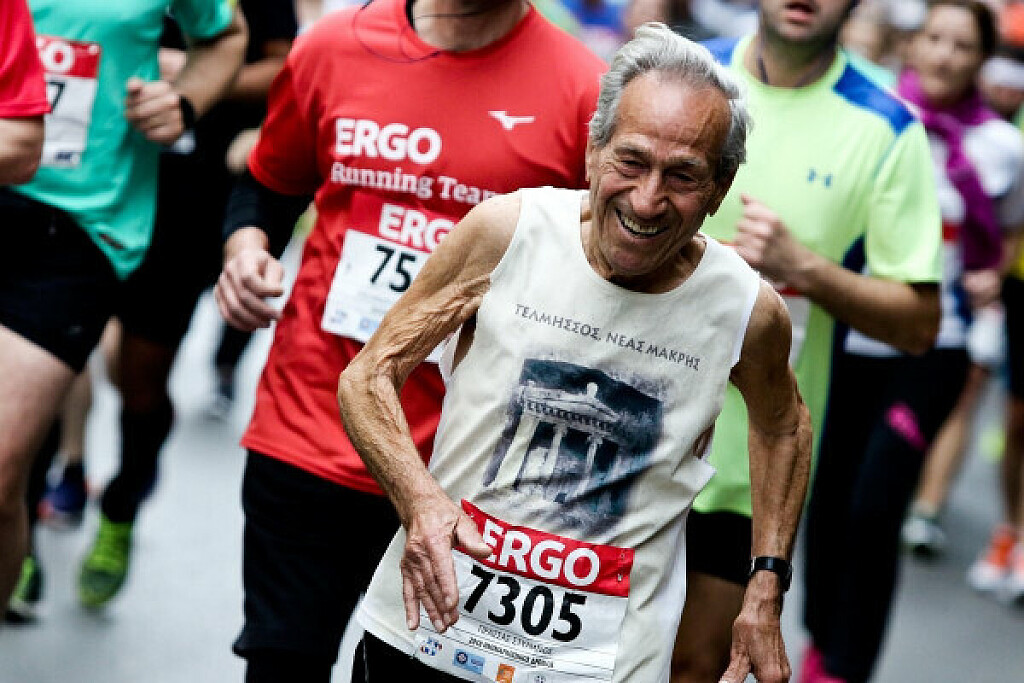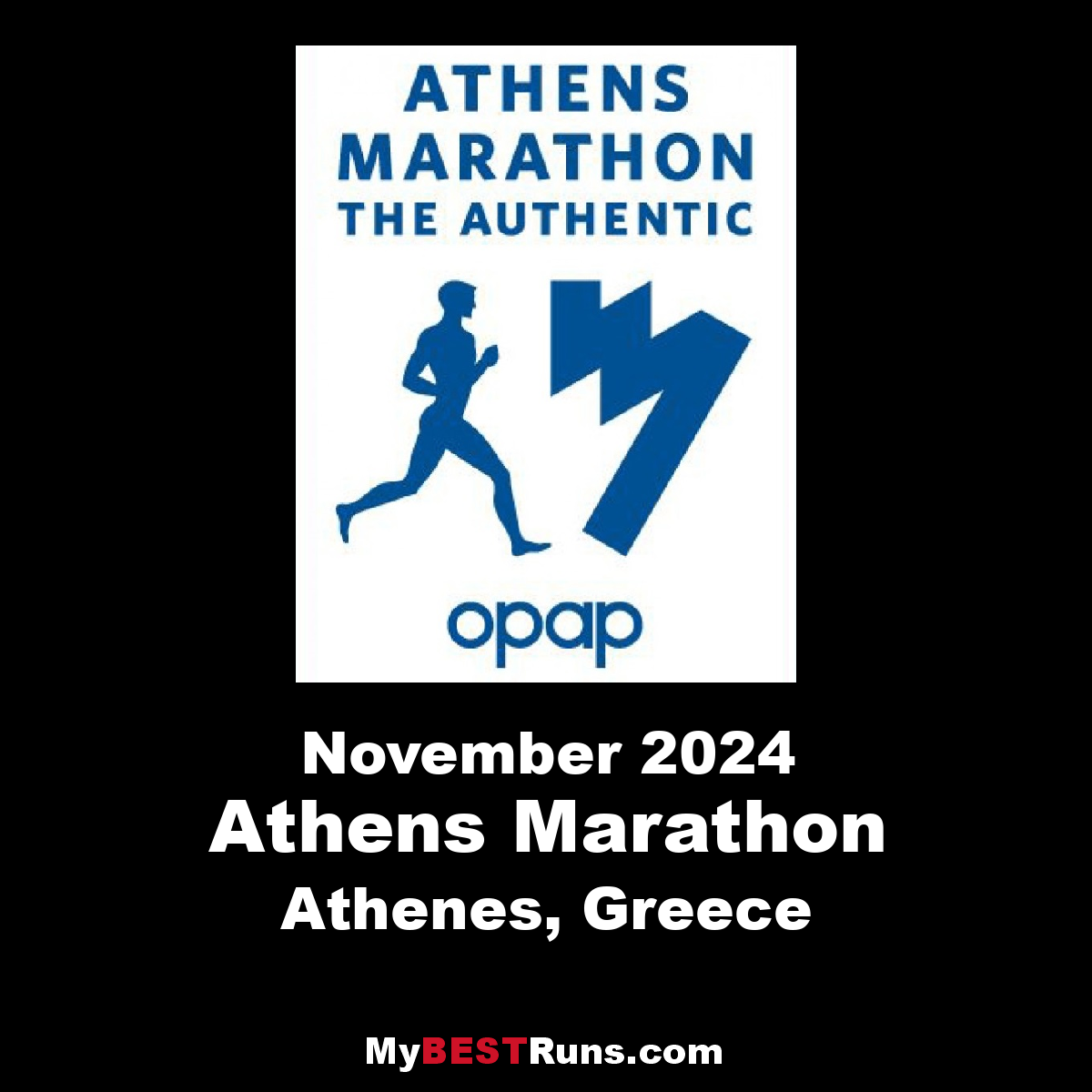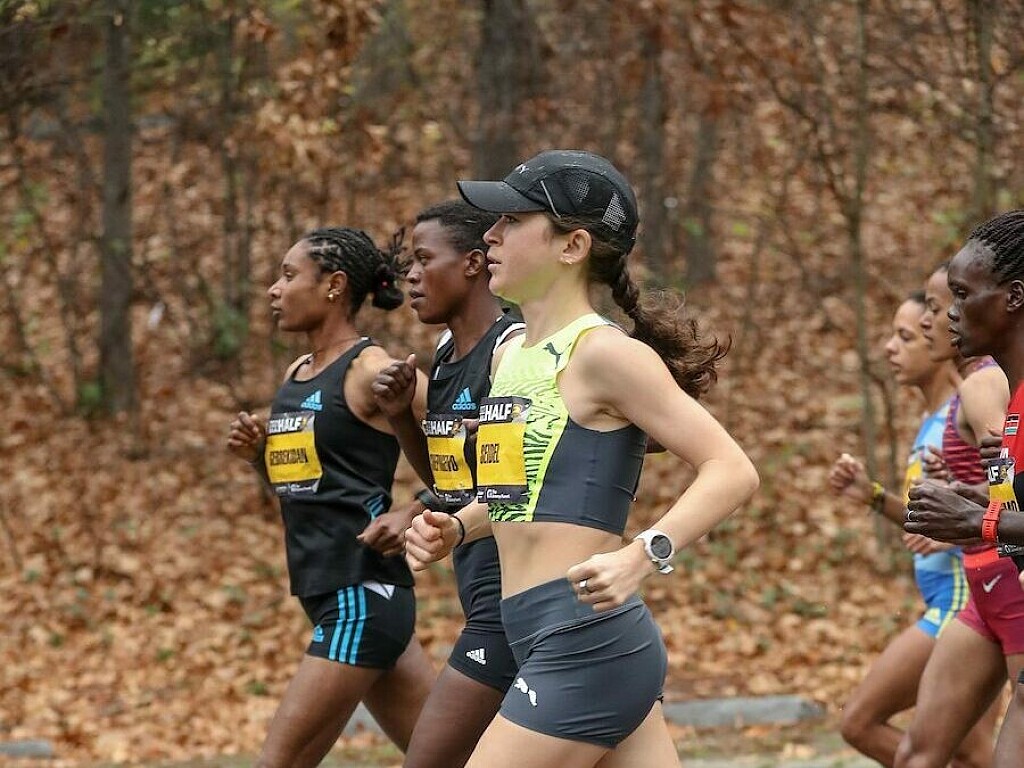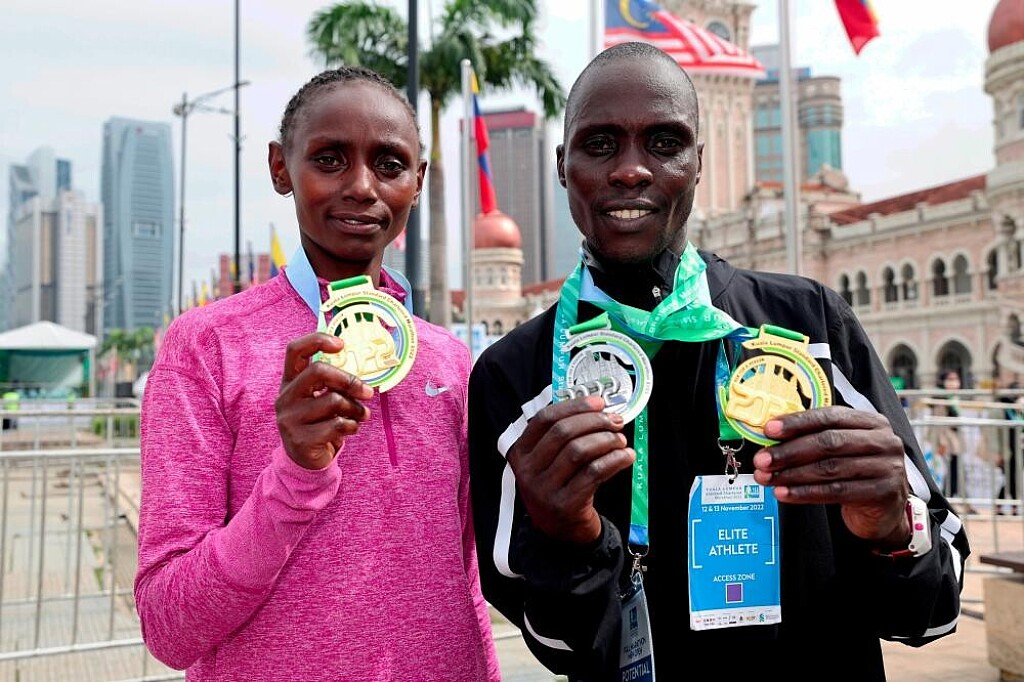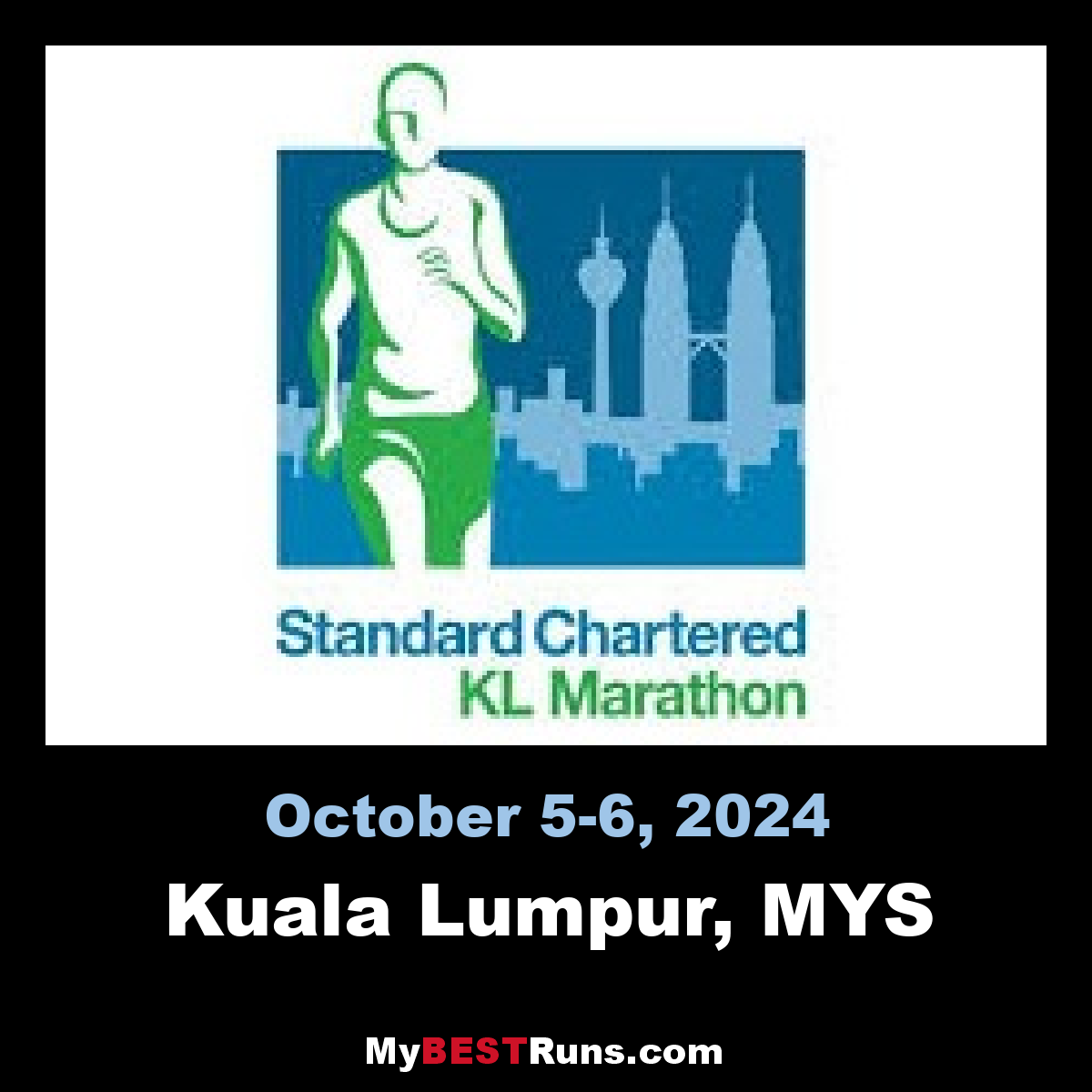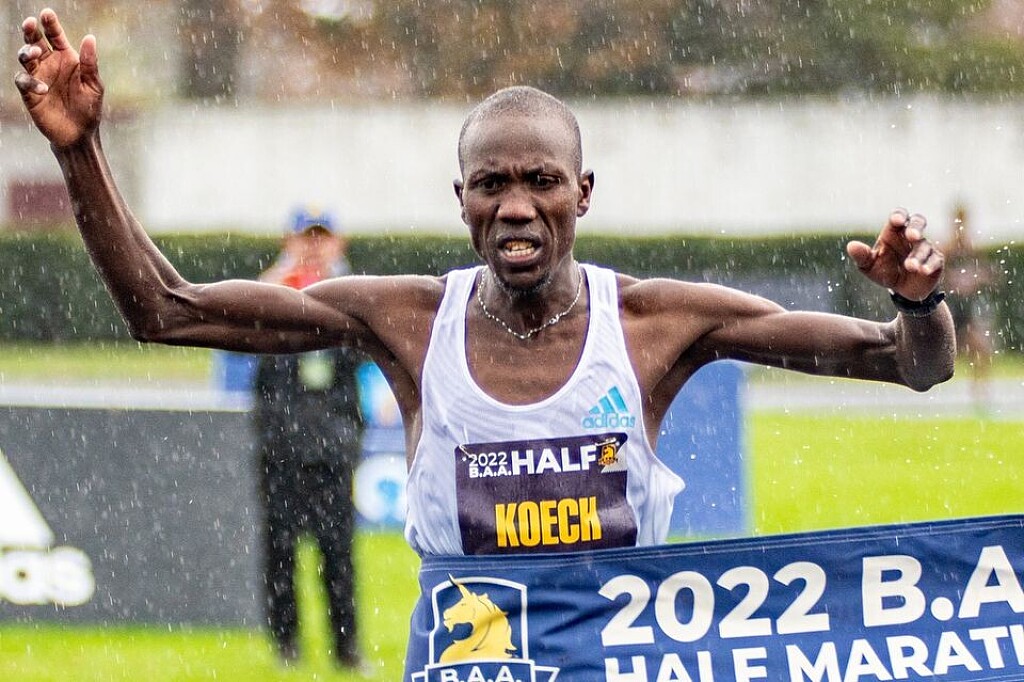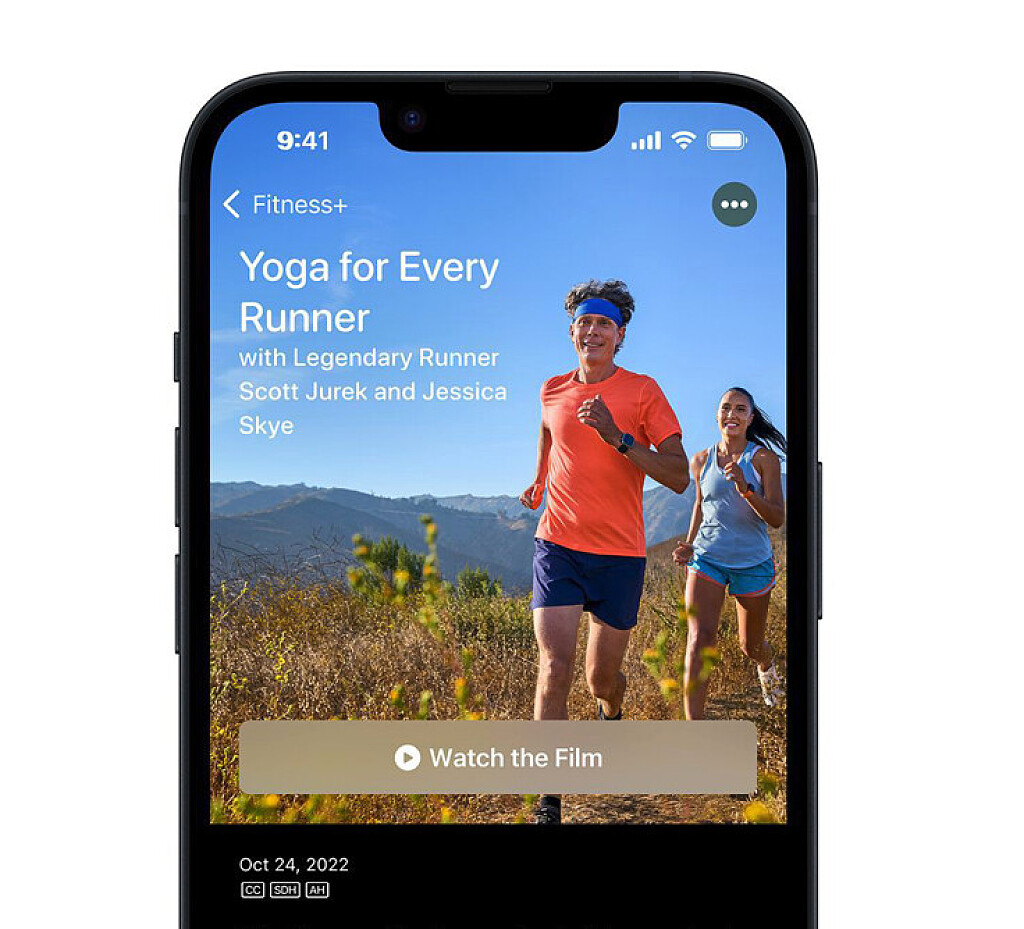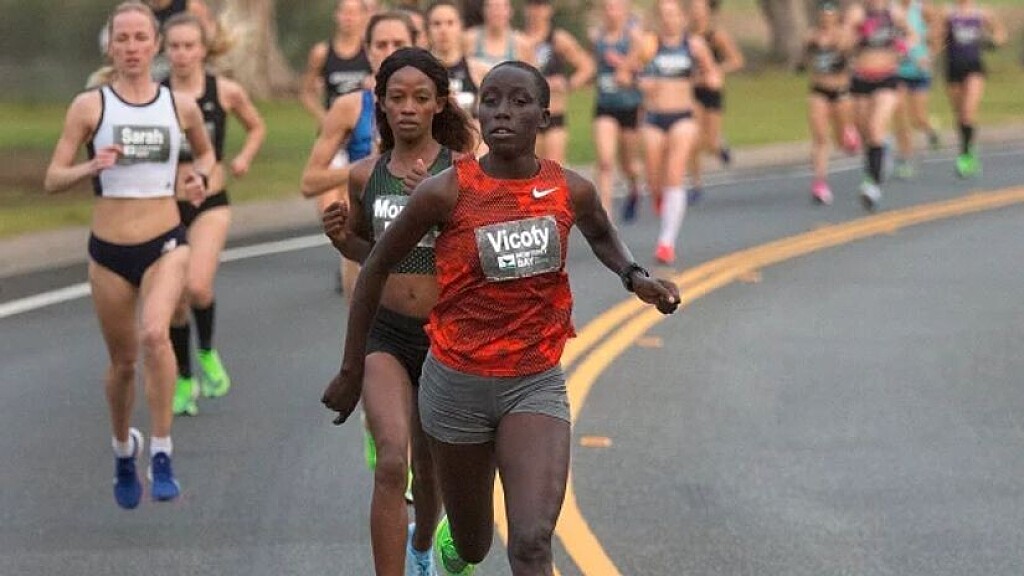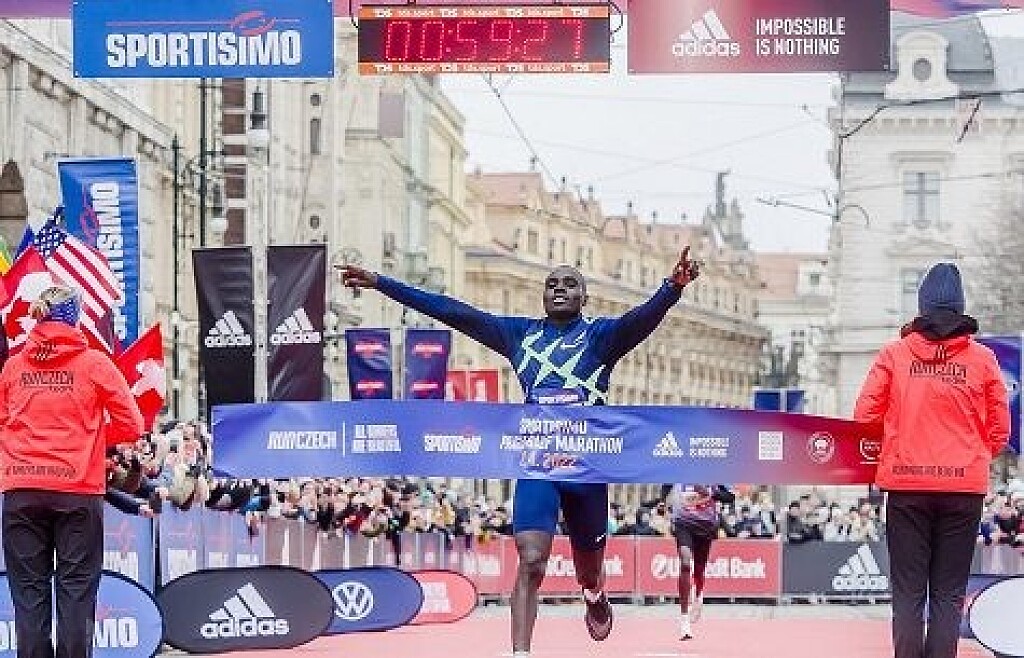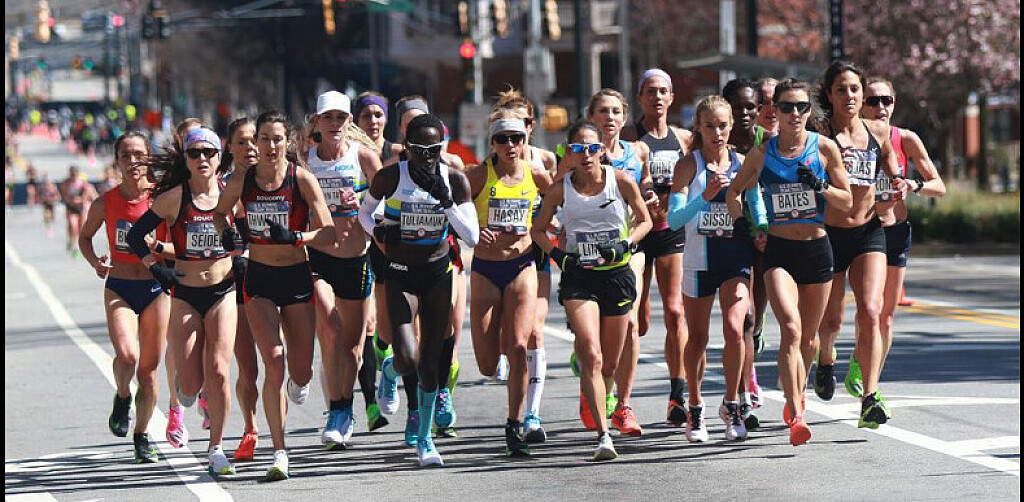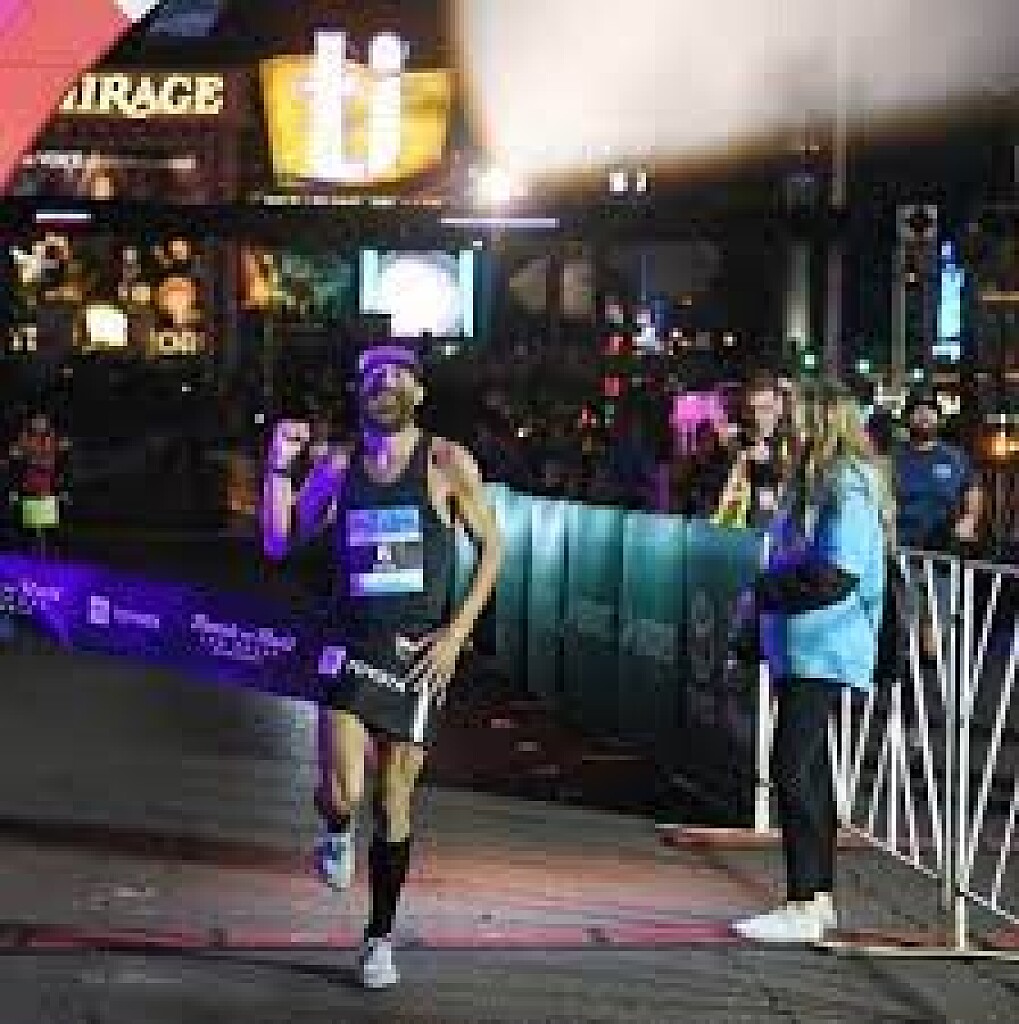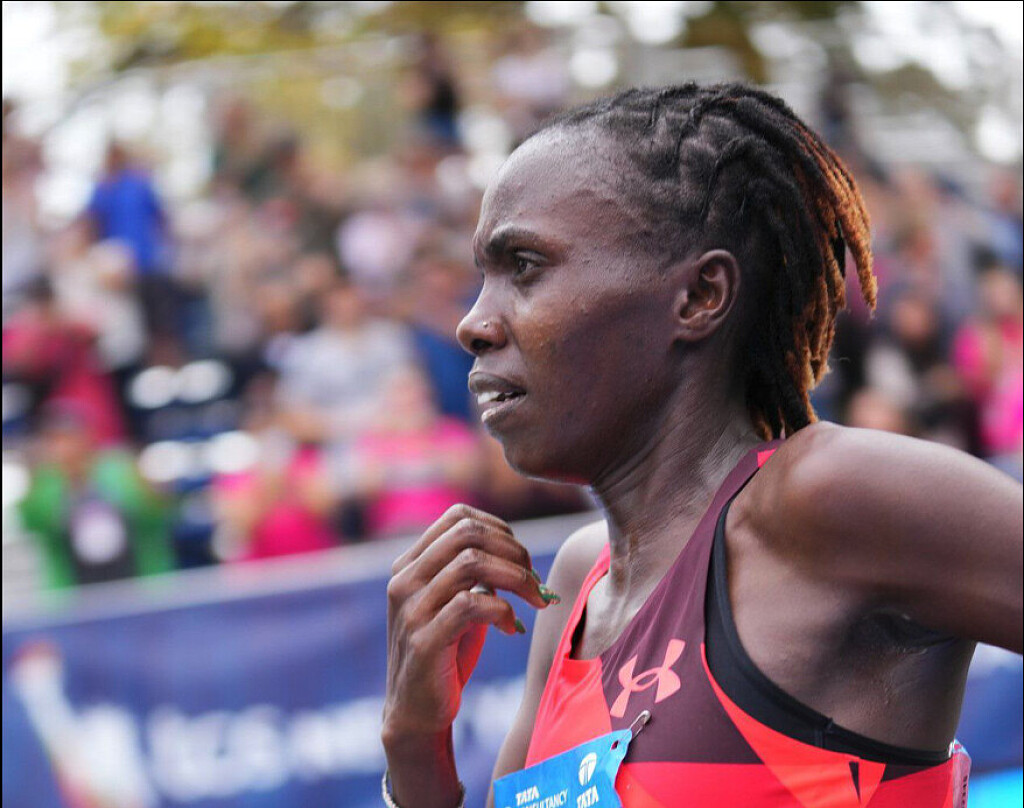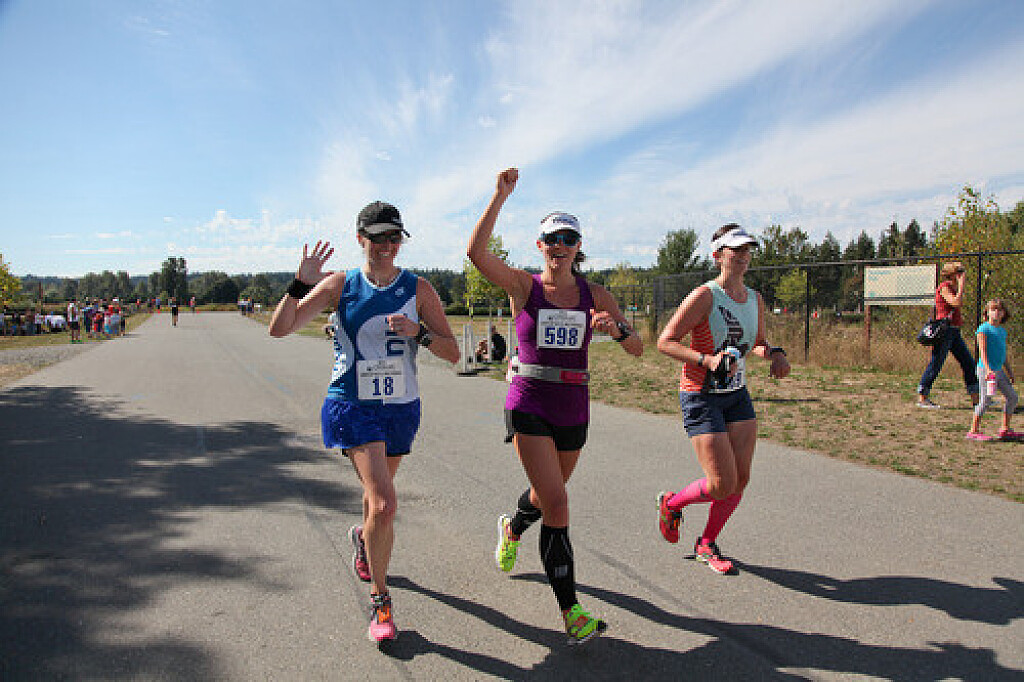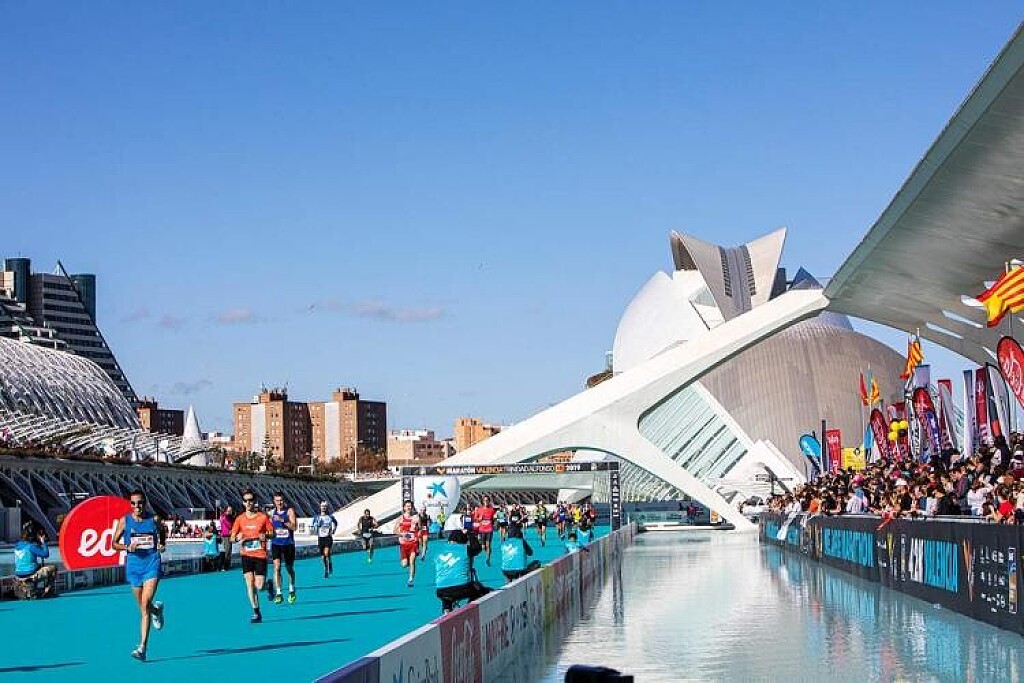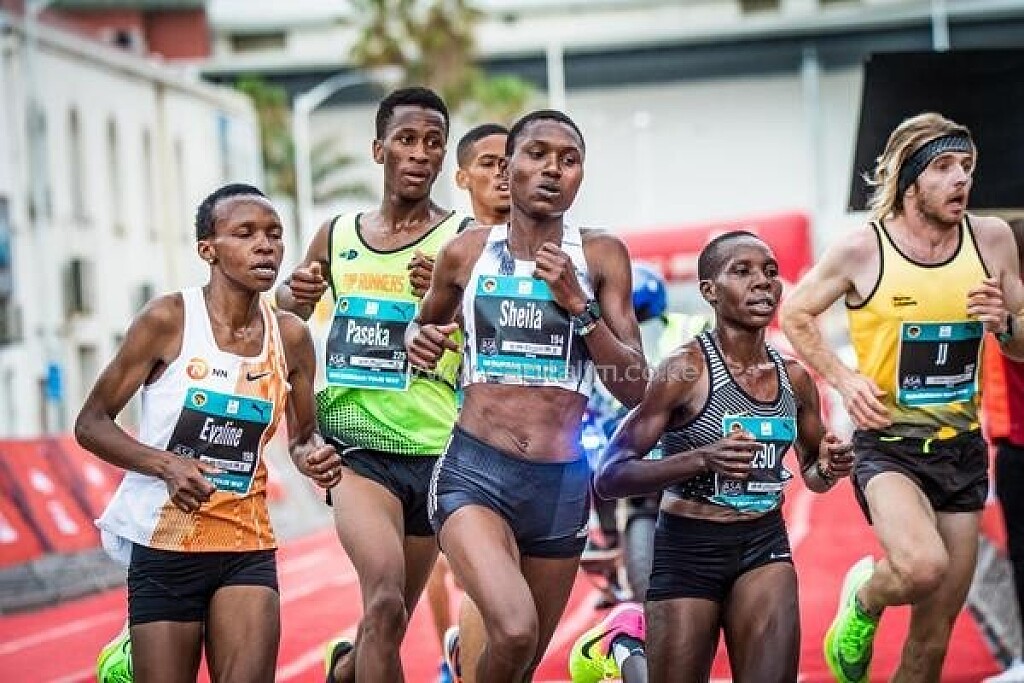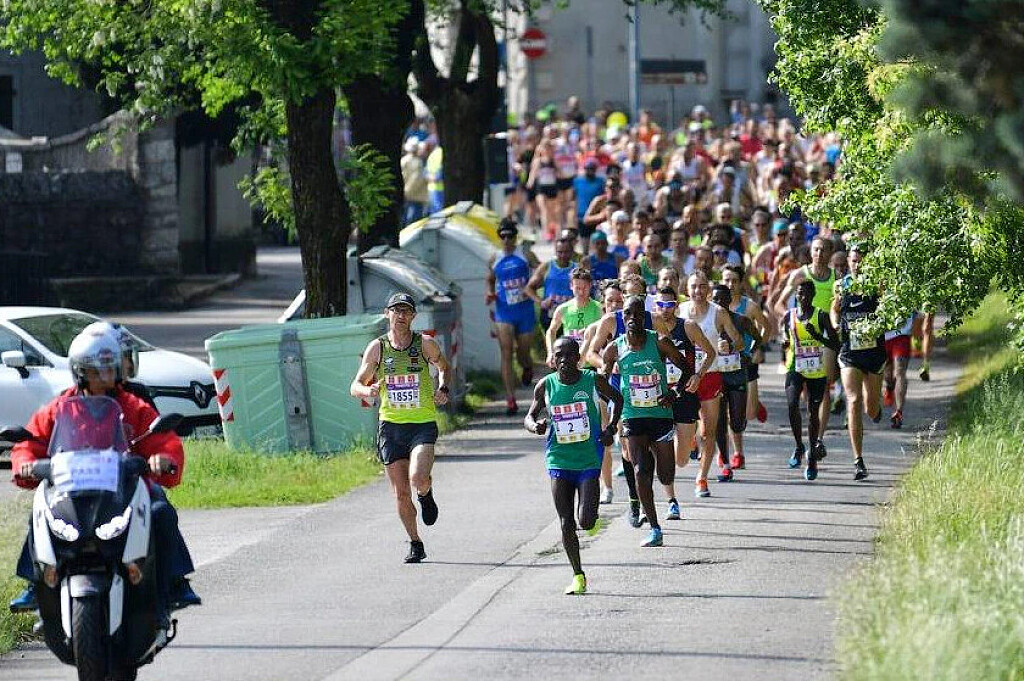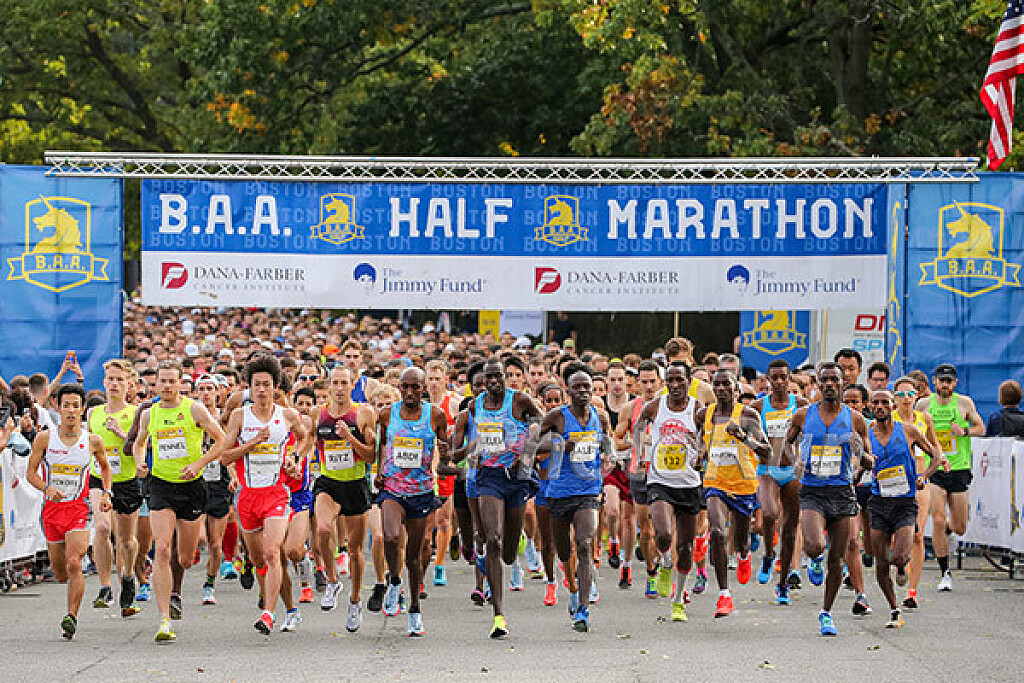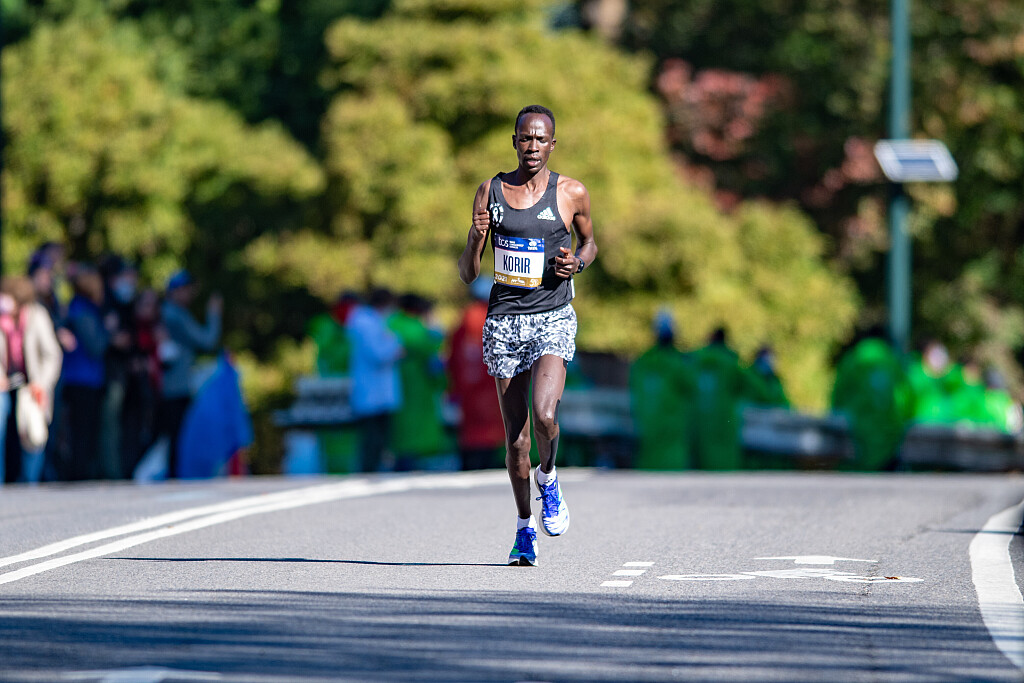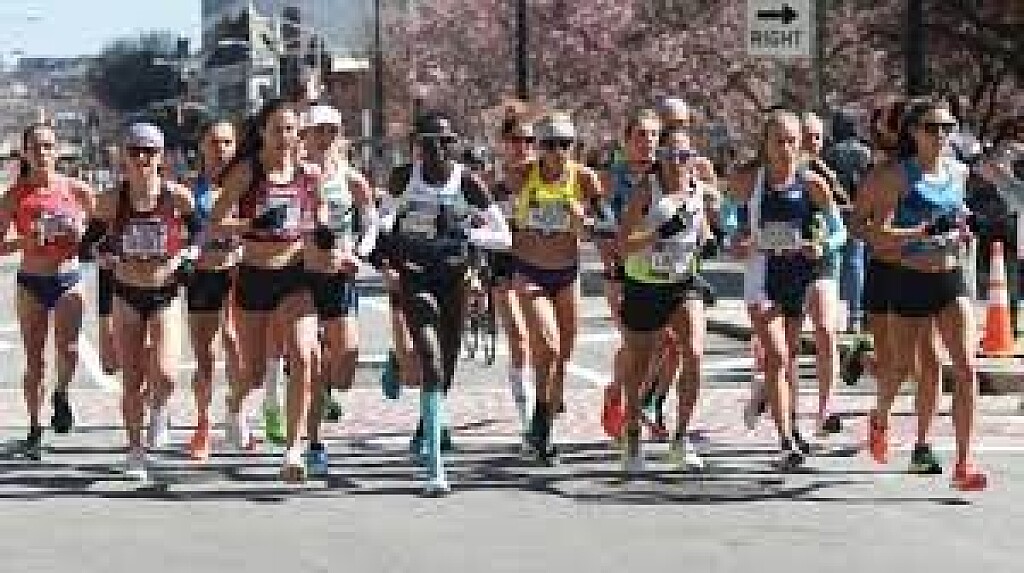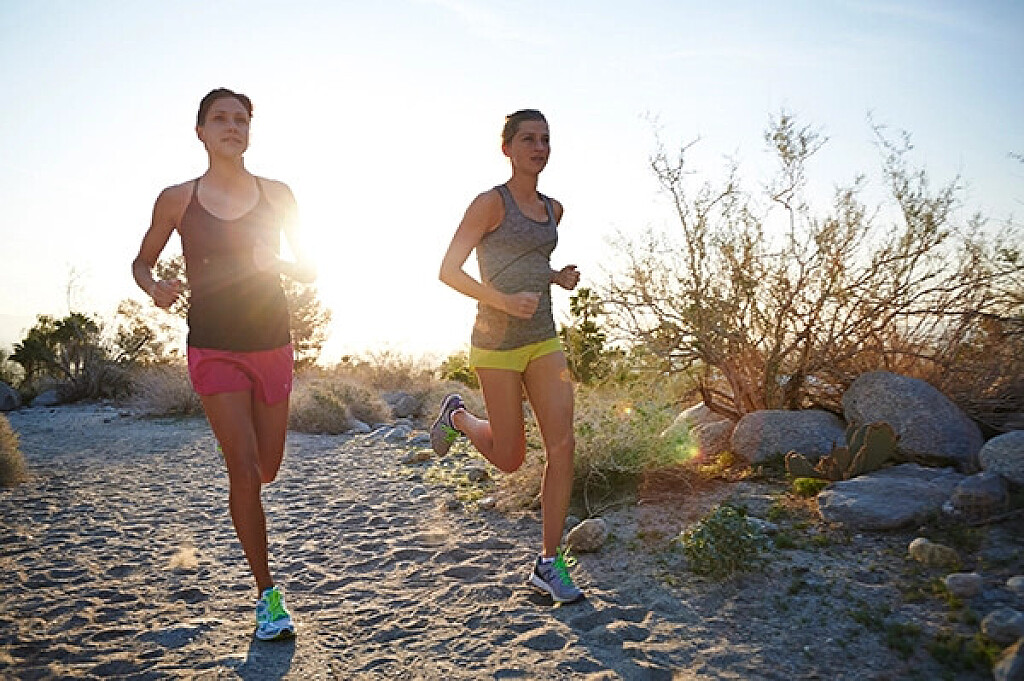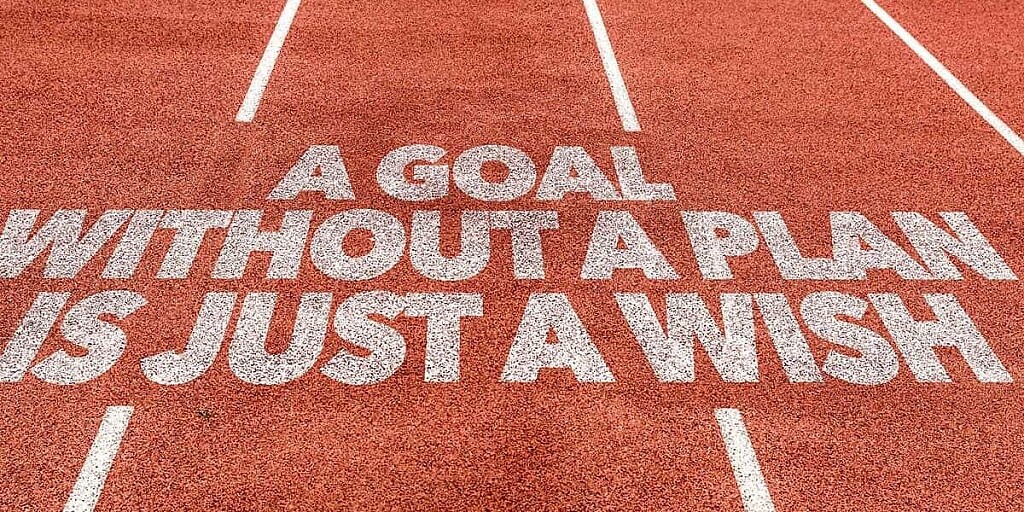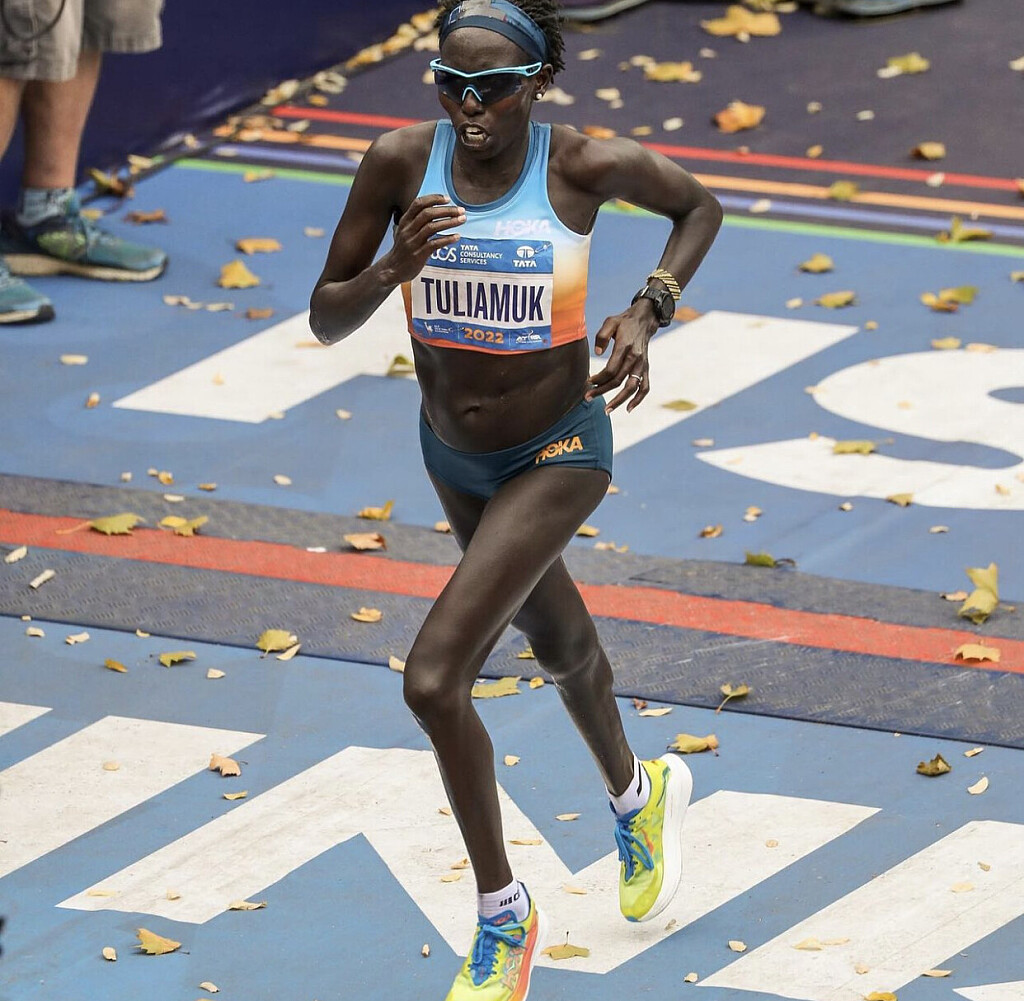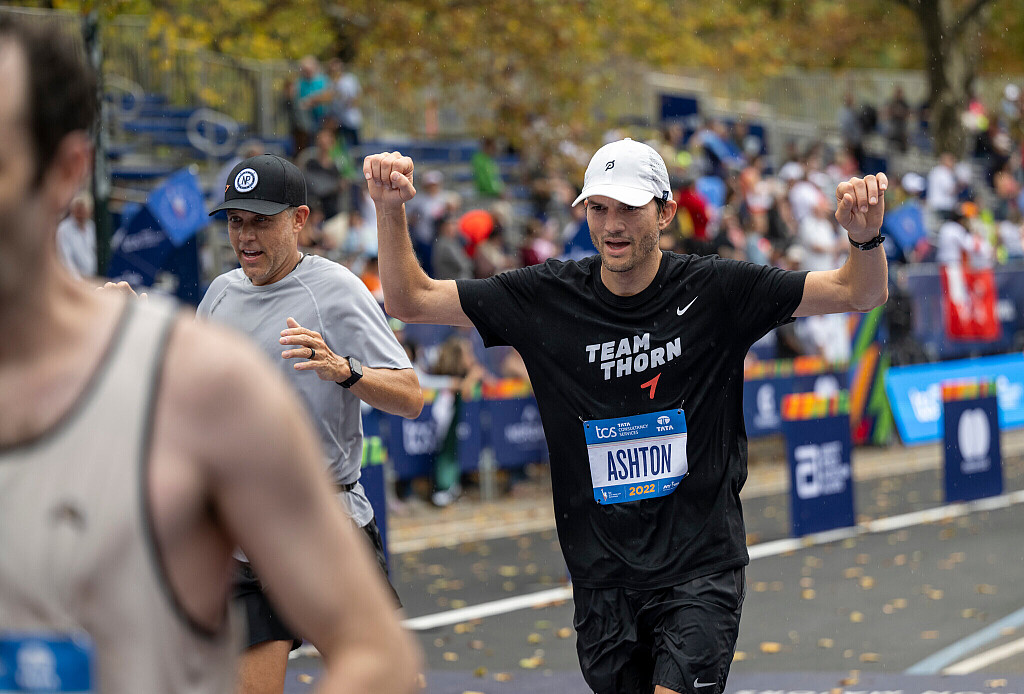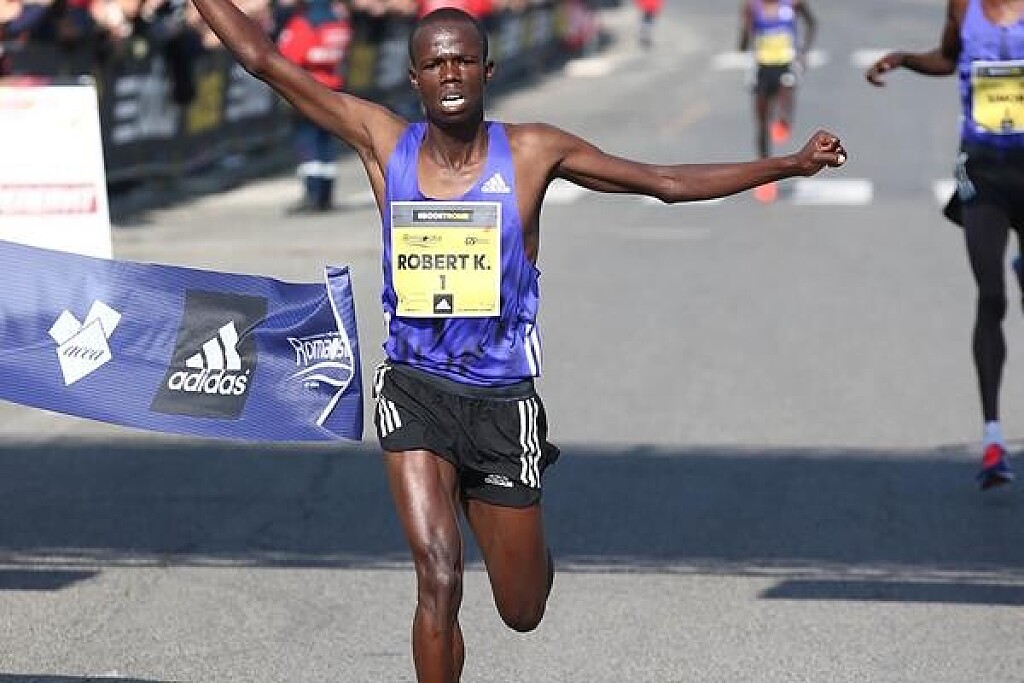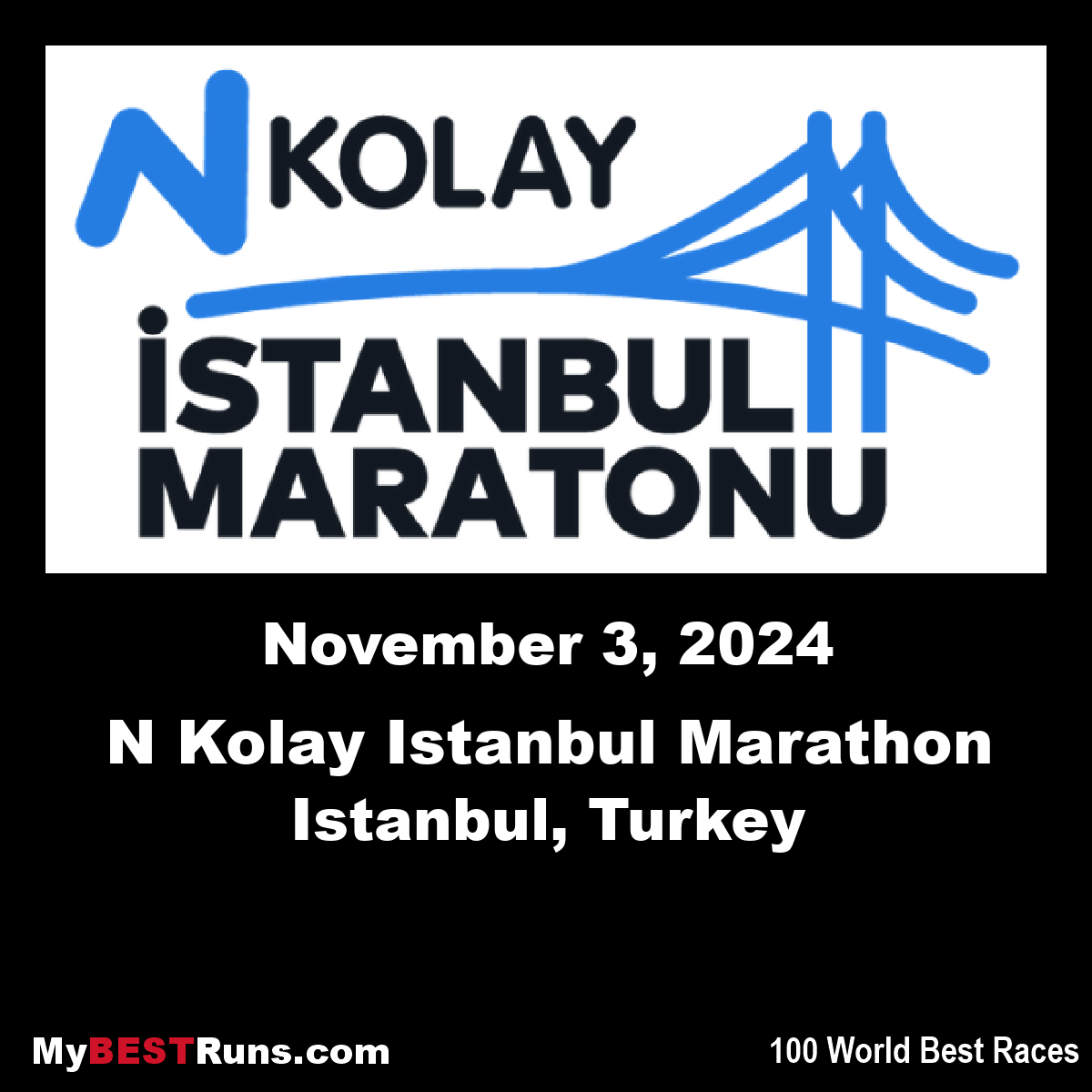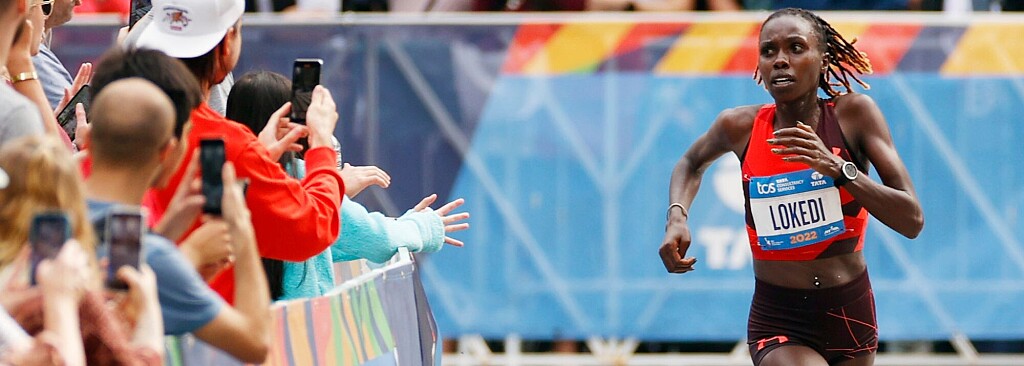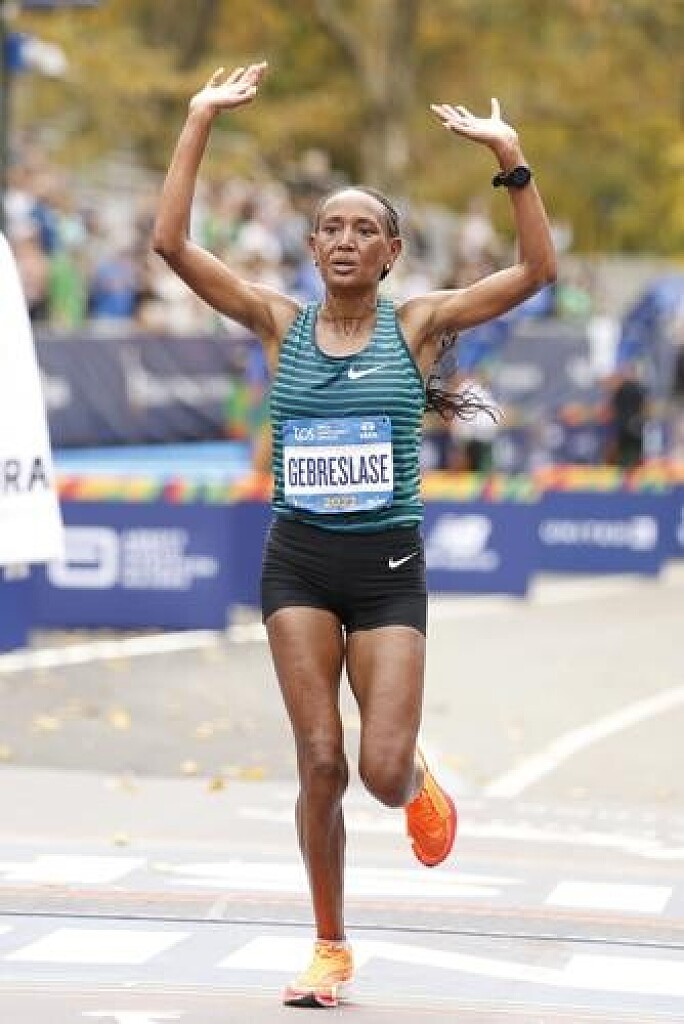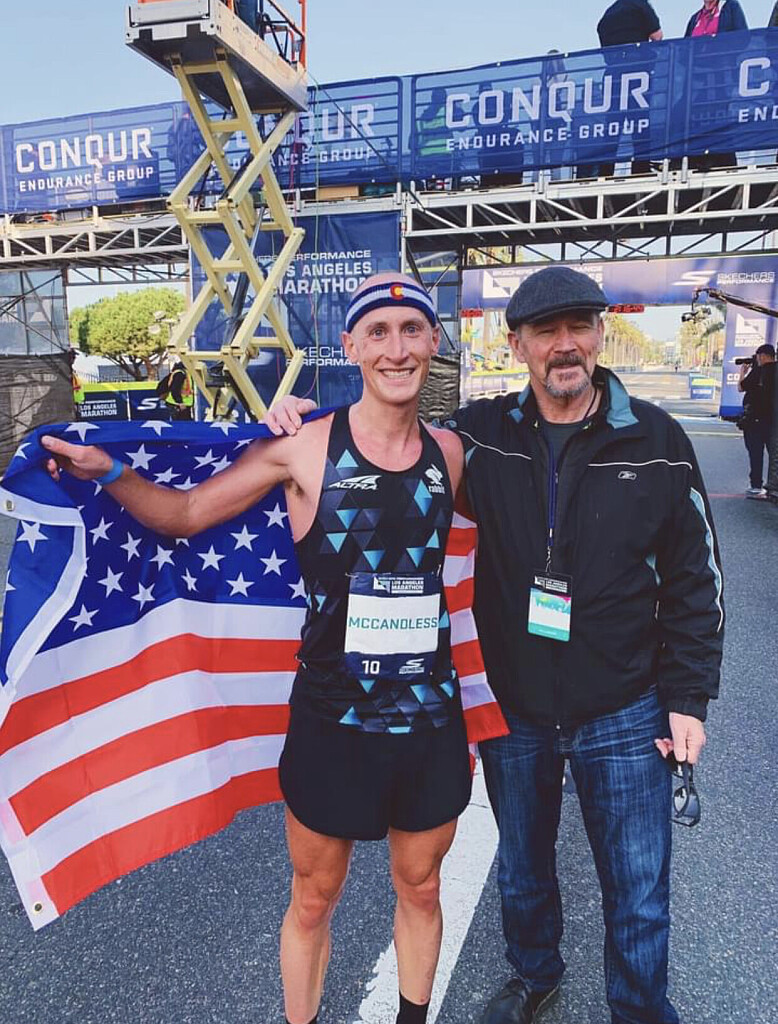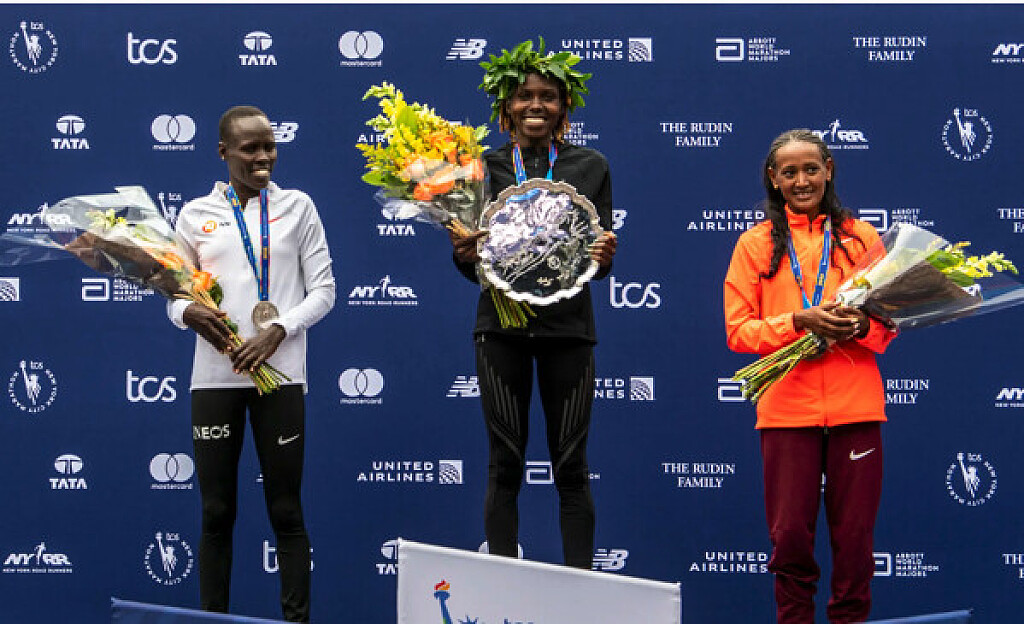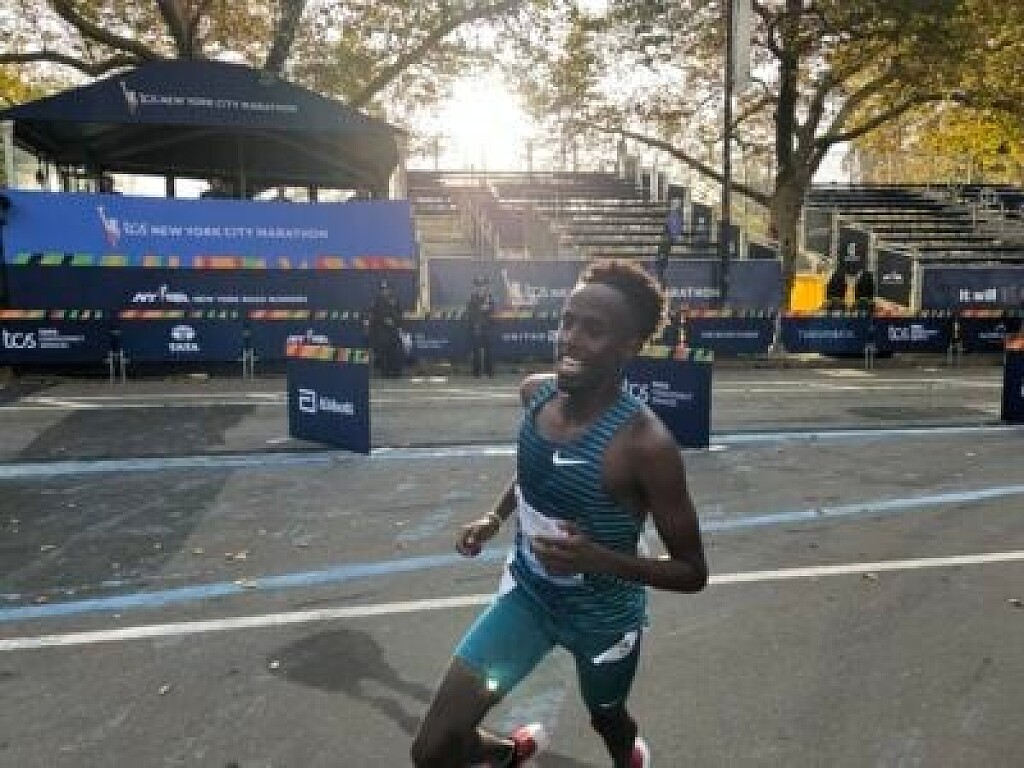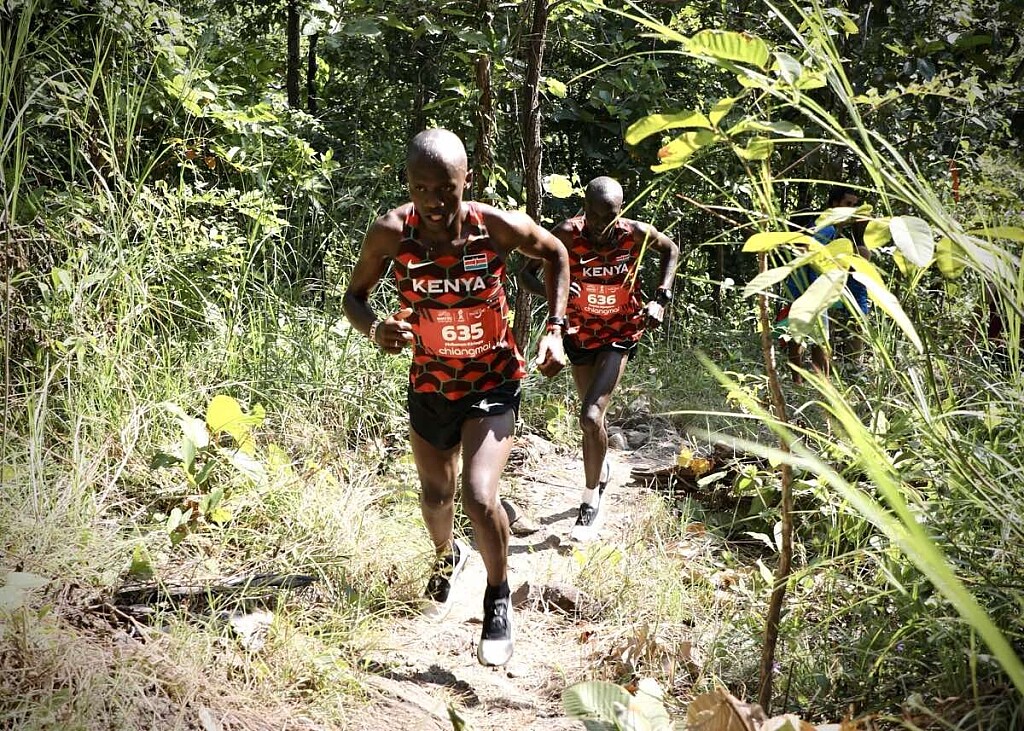Running News Daily
Running News Daily is edited by Bob Anderson. Send your news items to bob@mybestruns.com Advertising opportunities available. Train the Kenyan Way at KATA Kenya and Portugal owned and operated by Bob Anderson. Be sure to catch our movie A Long Run the movie KATA Running Camps and KATA Potato Farms - 31 now open in Kenya! https://kata.ke/
Index to Daily Posts · Sign Up For Updates · Run The World Feed
How to prevent dehydration at your next race
It’s no secret you need to be well hydrated to perform your best, but did you know that being hydrated for a run should start far before the gun fires on race day and continue long after you cross the finish line?
According to Runner’s World Magazine, in warm or humid environments, being more than two percent dehydrated can cause a decline in your running performance. Dehydration causes your blood flow to drop, decreasing your body’s ability to transfer heat, and forces your heart to beat faster. This is when your body starts to shut down and your ability to cross the finish line becomes much more difficult.

In addition to your training schedule, incorporate these hydration tips before, during and after your run. And always remember to listen to your body because proper hydration will depend on the heat, soreness and distance.
Before you hit the pavement

In the days leading up to your run or race, drink plenty of water and nonalcoholic drinks. Alcohol dehydrates you and can prevent you from getting a good night’s sleep, a critical aspect of a pre-race routine.
An hour or more before your race begins, drink about 16 ounces, or two cups, of water. Be sure to stop drinking at this point so you don’t have to go to stop to use the restrooms along the race!
Right before the start of the race, you can drink a half to a full cup of water to ensure you’re still properly hydrated, if desired.
During the race
Hydration while out running is simple: drink if thirsty. Research has shown this approach helps to prevent under hydrating, which leads to dehydration, as well as over hydrating. However, a general “rule of thumb” during your run is:
For every 20 minutes of running, drink 4-6 ounces (roughly one cup) of water.
If you run faster than an 8-minute mile, it is recommended to drink 6-8 ounces (more than one cup) of water every 20 minutes.
When you are running for 90 minutes or more, adding a sports drink to replace the lost sodium and electrolytes will help you absorb water faster and stay hydrated longer.
After you’ve crossed the finish line
Most experts believe you should drink at least three cups of water after you have finished a run or race. However, flavored or protein drinks such as iced green tea, coconut water, chocolate milk or a low-fat smoothie are also excellent options post-run.
(11/17/2022) ⚡AMPby A Healthier Michigan
Internet reacts to Paris 2024 Olympic mascots
The Paris 2024 Olympics and Paralympics organizing committee unveiled the new mascots for the 2024 Games, and the Internet is skeptical. It’s difficult to know what they are meant to represent–both mascots display the French colours of blue, white and red, and they are vaguely triangular.
The organizing committee revealed that they are meant to represent Phrygian caps, which originated in Eastern Europe and came to represent the freedom won during the French Revolution, but the Internet has other ideas.
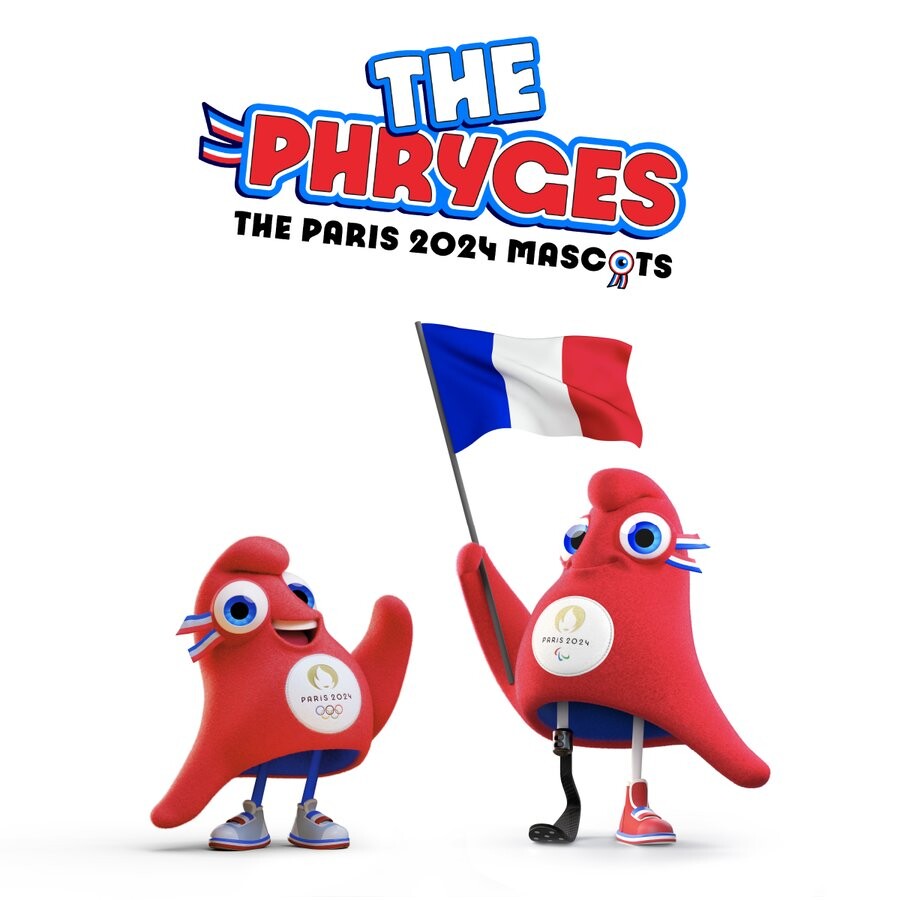
“They look like one of those hats Papa Smurf used to rock,” wrote one Twitter user.
“What’s it supposed to be? A bird with sneakers?” wrote another.

Several others expressed the peculiar triangular-shaped figure looks like a cartoon of a female body part brought to life.
According to the Olympic organizing committee, the mascot, who goes by the nickname Les Phryges, was designed to represent the Phrygian cap, a red bonnet famously worn by Marianne, the personification of freedom and democracy against all forms of oppression during the French Revolution.
This is the third connection the 2024 Games has made to the French Revolution (1789-1799). The route for the Olympic marathon follows the same course as the women’s march on Versailles, which was one of the earliest and most significant events of the French Revolution. The logo for the Paris Olympics also pays tribute to the French Republic, combining three symbols–a gold medal, a flame and Marianne.
Although we are 600 days away from the start of the 2024 Olympics and Paralympic Games, the mascots are already on sale online. The goal of the mascots is to connect with kids, fans and French culture.
(11/17/2022) ⚡AMPby Marley Dickinson
Paris 2024 Olympic Games
For this historic event, the City of Light is thinking big! Visitors will be able to watch events at top sporting venues in Paris and the Paris region, as well as at emblematic monuments in the capital visited by several millions of tourists each year. The promise of exceptional moments to experience in an exceptional setting! A great way to...
more...Kenyan Abel Kirui set to run next month's Fukuoka Marathon
Two-time former world champion Abel Kirui leads a strong contingent of Kenyan elite runners to next month's Fukuoka Marathon.
Kirui, 40, with a personal best of 2:05:05, faces stiff opposition to win the event set for December 4.

This will be Kirui's first marathon of the year having last participated in the 2021 Milan Marathon, where he finished 11th in 2:06:52.
Kirui said he has what it takes to win the race despite the competition. "Marathon running is never easy but I have had good preparations and I am looking forward to having a good outing,” added Kirui.
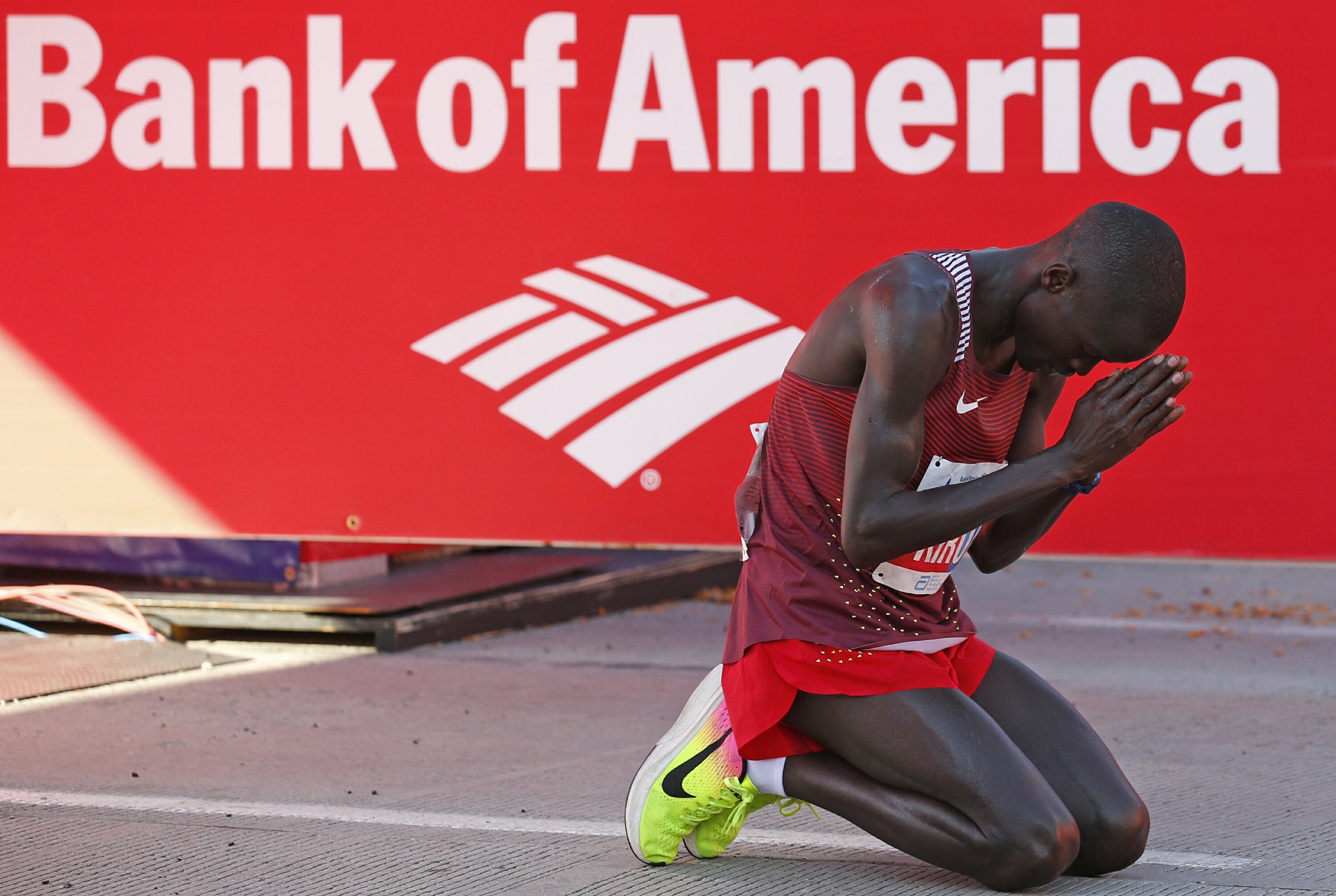
Kirui will have fellow Kenyans Kenneth Keter and Silas Too for the company. Keter has a personal best of 2:06:05 set at the 2021 Amsterdam Marathon, where he finished eighth while Too has a PB of 2:06:32 posted in the Eindhoven Marathon last year.
James Gitahi, who finished third last year in a time of 2:08:25, will be aiming to go two places better this time around. Last year's winner Michael Githae will be aiming to defend the crown he won last year when he clocked 2:07:51.
Githae is upbeat about his prospects despite placing 11th at the Tokyo Marathon in March this year at 2:07:55. Githae also won silver at the Commonwealth Games in Birmingham last August.
“I did not do well in Tokyo but I have trained hard for Fukuoka for the past three months. It's a very good field, especially the Kenyans and Ethiopians but I'm up to the task and ready to defend my title,” he said.
Vincent Raimoi will be making his debut in the full marathon at the event having clocked 59:51 at the 2020 Ras El Khaimah Marathon in UAE, where he finished fifth. The Ethiopian athletes in the event will be led by Teshager Yegzaw and Yemane Tsegaye.
(11/16/2022) ⚡AMPby William Njuguna
Fukuoka Marathon
The Fukuoka International Open Marathon Championship is one of the longest running races in Japan, it is alsoan international men’s marathon race established in 1947. The course record is held by Tsegaye Kebede of Ethiopia, running 2:05:18 in 2009. Frank Shorter won first straight years from 1971 to 1974. Derek Clayton set the World Record here in 1967 running 2:09:37. ...
more...Finalists announced for Women's World Athlete of the Year 2022
The names of the five finalists for Women’s World Athlete of the Year have been confirmed, as the countdown to the World Athletics Awards 2022 continues.
The five athletes, who represent five countries from three area associations, have achieved sensational performances across a range of athletics disciplines in 2022, at the World Athletics Championships Oregon22, World Athletics Indoor Championships Belgrade 22, one-day meeting circuits and other events around the world.
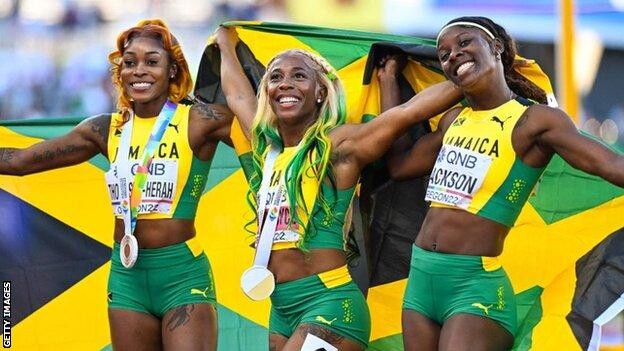
The finalists are (in alphabetical order):
Tobi Amusan, NGR- World 100m hurdles champion- Diamond League, Commonwealth and African 100m hurdles champion- Set a world 100m hurdles record of 12.12
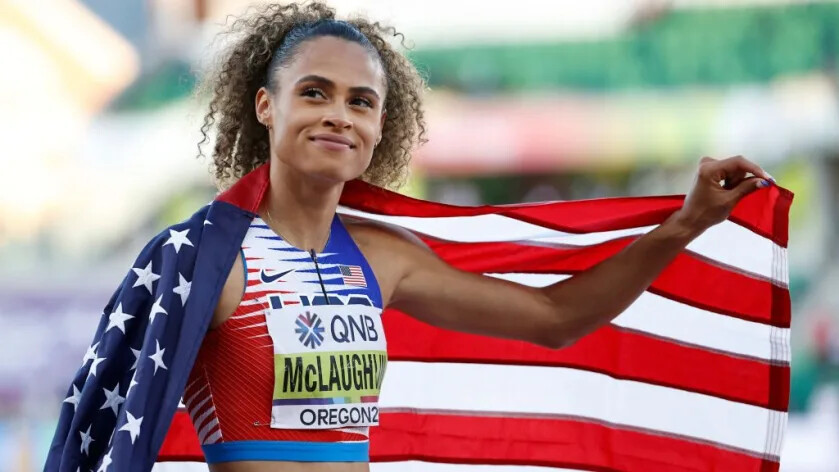
Shelly-Ann Fraser-Pryce, JAM- World 100m champion, claiming a fifth gold medal in the event- Diamond League 100m champion- Ran a world-leading 10.62 among her record seven sub-10.70 100m races of the season
Kimberly Garcia, PER- World 20km race walk champion, winning Peru’s first ever World Athletics Championships medal- World 35km race walk champion in a South American record to complete a race walk double- World Athletics Race Walking Team Championships 20km bronze medalist
Sydney McLaughlin, USA- World 400m hurdles and 4x400m champion- Broke the world 400m hurdles record with 51.41 at the US Championships- Further improved the world record to 50.68 to win the world title
Yulimar Rojas, VEN- World indoor and outdoor triple jump champion- Diamond League triple jump champion- Improved her world record to 15.74m in Belgrade
Voting procedure for 2022 World Athletes of the Year
A three-way voting process determined the finalists.
The World Athletics Council and the World Athletics Family cast their votes by email, while fans logged their decisions online via the World Athletics social media platforms where a record 1.3 million votes were registered.
The World Athletics Council’s vote counted for 50% of the result, while the World Athletics Family’s votes and the public votes each counted for 25% of the final result.
Voting closed on 31 October.
The World Athletes of the Year will be announced on World Athletics’ social media platforms in early December, as part of the World Athletics Awards 2022.
(11/16/2022) ⚡AMPby World Athletics
Can Running help alleviate symptoms of PTSD?
Running can help alleviate symptoms of PTSD and may help a patient identify and associate negative thoughts and emotions with positive ones. PTSD is an anxiety disorder caused by very stressful, frightening or distressing events.
In fact, researchers have examined the effects of running on PTSD patients, finding that the activity can induce unwanted physiological responses and helps patients associate negative emotions with positive ones.

PTSD stats show that about 6% of the US population will develop PTSD at some point in their lives. Women are more likely to develop PTSD than men, and people who have experienced multiple traumas are also more likely to develop the disorder.
And this can, luckily, be alleviated with regular exercise.
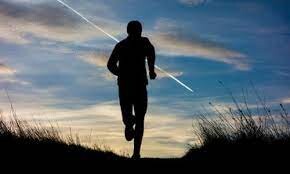
PTSD and Exercise
Exercise can, indeed, help alleviate PTSD symptoms.
There is a growing body of evidence that physical exercise can help individuals recover from trauma. Physical activity reduces anxiety and stress levels and is known to increase cognitive function.
It can also improve coordination and focus. It also helps with breathing. The benefits of exercise for PTSD go beyond mental health.
Running helps the body release mood-boosting neurochemicals. It also improves self-efficacy. This is important because it counters the feelings of helplessness associated with PTSD.
Runners are also more likely to be able to focus better. In addition, running can help people associate negative emotions with positive ones.
Several studies have shown that aerobic exercise can alleviate the symptoms of PTSD. However, these studies use retrospective self-report measures, which can be prone to bias and inaccuracy.
Also, several of the studies did not report the duration of the traumatic event in the participants. Despite these limitations, aerobic exercise is generally accessible and inexpensive, and it has been proven to improve cognitive functioning.
Deep Breathing
Researchers have shown that running and deep breathing can alleviate the symptoms of post-traumatic stress disorder (PTSD).
Running and deep breathing stimulate the ANS, causing physiological responses that help PTSD patients associate negative emotions with positive ones.
Symptoms of PTSD include a hyper-vigilant state, inability to connect with others, and recurring intrusive thoughts. These symptoms can be debilitating.
PTSD is triggered by traumatic events, which can occur over a long period of time or in a single incident. During a stressful event, the body responds by raising its heart rate, blood pressure, muscles, and reflexes.
Eventually, this response is reversed, and the body returns to a normal state. However, when the stress response continues for too long, the brain is “stuck” and can no longer function normally.
Recovery from PTSD involves unsticking this response.
People with PTSD may try to avoid unpleasant memories and feelings. However, numbing oneself can only worsen the symptoms of PTSD.
The body cannot escape the emotions it feels under stress, and avoiding these feelings can also affect their relationships and their quality of life.
How Running Helps
Running can help alleviate PTSD symptoms in several ways.
For starters, exercise is therapeutic and can help a person sleep better. It can also give a person purpose. It’s important to choose an activity you enjoy and find a way to incorporate it into your daily routine.
Running can be fun and relaxing, which can help a person relax and have more clarity. Even a short walk can help a person feel refreshed and can help them deal with their trauma.
Many people suffering from PTSD have symptoms that develop a few weeks or months after the trauma. Symptoms can include increased anxiety and depression, and trouble concentrating.
They can also have changes in their sleeping patterns, aches and pains, and a decreased appetite. It can also cause people to become dependent on alcohol and other substances to cope with the symptoms.
Although it’s best to engage in prolonged activity, even short runs can help. Moreover, running is beneficial because it can release feel-good hormones that relieve traumatic stress.
An Alternative: Art Therapy
Art therapy is a great way to process traumatic memories and help a person deal with the symptoms of PTSD.
(11/16/2022) ⚡AMPby Colorado Runner
Try this eight-minute leg routine to ramp up speed and strength
Coach and ultrarunner David Roche of Boulder, Colo. is well known for his three-minute mountain leg workout, a routine that is suitable for a wide variety of runners, from ultra-endurance athletes to those training for a 5K.
While the mountain-leg routine helps runners get strong, Roche shared in Trailrunner Mag that there was a need for a speed-focused routine for runners looking for help nailing faster paces.

Before doing this routine, note that if you aren’t struggling with speed, the mountain leg workout should be a sufficient boost for you, and you can safely increase reps as you gain strength.
Roche recommends speed legs only for athletes “who have evidence they need it, whether from health issues or imbalances or weakness at higher outputs.”

Make sure you aren’t adding any new exercises to your routine if you’re recovering from an injury, and ease into the routine, starting without weights of any kind. Roche suggests not rushing between exercises and says: “Do not go to failure. We’re looking to do some work, not get worked.”
Eight-minute speed leg routine
Warm up with a brisk walk or slow run, or do this routine following your workout (add these exercises to a hard workout day, so that your easy days stay easy).
10 x alternating rear lunges on each leg
Since rear lunges are easier than the rest of the exercises they’ll help you warm up, and Roche says to avoid going anywhere near failure. Focus on using controlled motion up and down, with your back knee getting close to the ground. Quads, glutes and hamstrings will all be engaged in these lunges, with both eccentric and concentric movements–great for descending and climbing. Alternate legs to avoid getting too tired.
10 x Bulgarian split squats on each leg
With your trailing leg on a bench or platform a few feet high, go up and down, staying in control. Roche says you’ll feel this in the butt and high hamstrings—make sure you start with no weight. Avoid this one if you have any pre-existing injuries or concerns.
10 x single-leg Romanian deadlift on each leg
Roche is firm on this one–start without weights. Firmly plant your foot and bend your knee slightly, raising the other leg parallel to the ground. Push down and pull back with the engaged leg to raise up to center, with controlled up and down motion.
10–20 x goblet squats
With legs shoulder width or a bit wider apart and feet slightly out, do a typical squat. Some people like to go to 90 degrees or beyond, but Roche says he prefers staying a bit higher. After you adapt to these exercises, it’s OK to use slightly heavier weights.
20–50 x single-leg step-ups
Runners familiar with the three-minute mountain legs will recognize the burn of the step-up portion to wrap up the speed leg routine.”Go up and down a bit more rapidly now, with the burn concentrated in your quadriceps,” says Roche. “It should feel almost exactly like climbing up a steep grade.”
Roche suggests going for a walk after the speed leg routine and making sure you have an easy running or recovery day planned to follow.
(11/16/2022) ⚡AMPby Keeley Milne
Coros introduces limited-edition Molly Seidel watch
The endurance sports watch company Coros has released a limited Molly Seidel edition of the Pace 2, which celebrates the Olympic bronze medallist’s achievements and captures her unique and fun personality.
The design of this special edition watch was a collaborative process with Seidel and her team, and features colors to represent her: two shades of green (her favorite color–a vibrant green to match her Puma race kit, and a more earthy green as a nod to the environment).

Seidel’s limited edition Pace 2 comes with two watch bands: a green silicone band and an extra nylon band with Seidel’s famous “full send” catchphrase after she won bronze in the marathon at the 2020 Tokyo Olympics.
The watch also comes with a scannable QR code to a custom 12-week marathon training plan created by COROS, Seidel and her coach, Jon Green of Verde Track Club in Flagstaff.
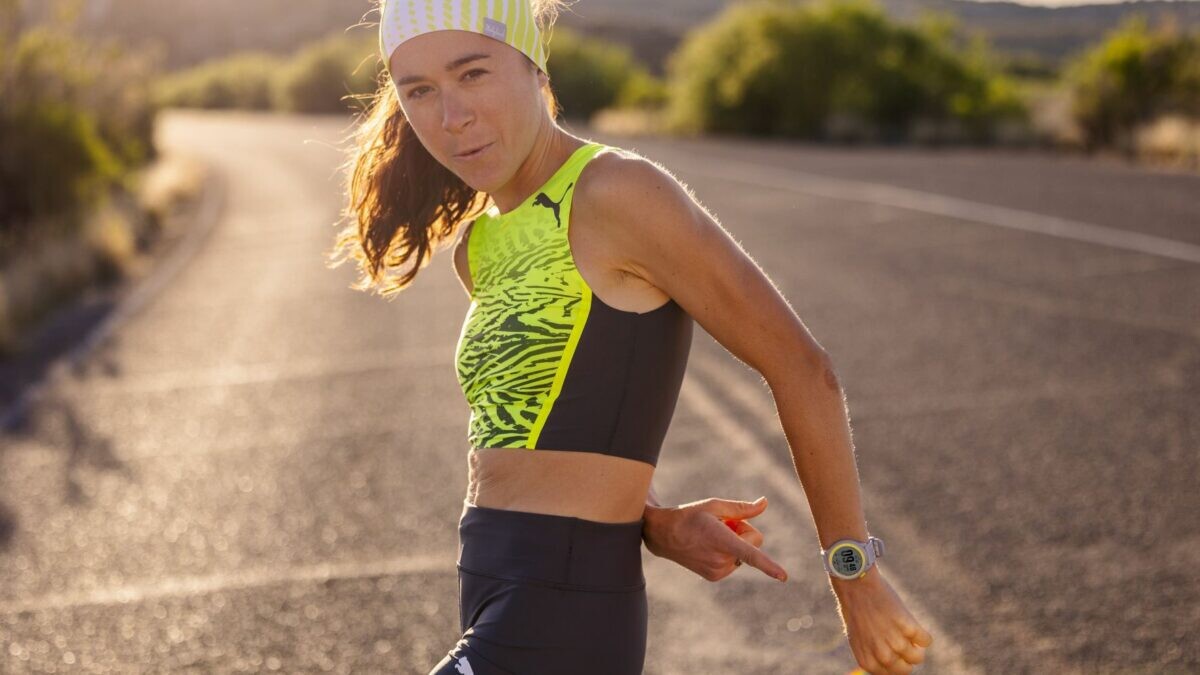
Seidel was using a Coros watch before she signed on as an official athlete for the brand. When she won her Olympic bronze, Seidel wore the Coros Apex, and made headlines as her bronze-medal-winning marathon quickly became the most kudo’d women’s activity on Strava. In November 2021, she officially signed on as a Coros athlete and was the top American at the 2021 New York City Marathon, where she wore the lighter-weight Coros Pace 2.
The Pace 2 is an excellent watch for anyone who likes to walk, run or cycle daily and wants to understand the simple statistics around their exercise. The watch also has everything you need for serious training, with stellar 30-hour GPS battery life and easy-to-understand metrics and statistics.
“This watch is Molly, and it represents all aspects of her personality, from her grit and determination to her youthful energy,” said Dan Suher, Director, Global Sales at Coros. “It is an honor to celebrate everything she has already accomplished in her career and know how much is still to come.”
The Coros Pace 2 Molly Seidel edition is available now on Coros.ca and through select running specialty retailers with a retail price of CAD $349.00.
(11/15/2022) ⚡AMPby Running Magazine
Finalists announced for Men's World Athlete of the Year 2022
The names of the five finalists for Men’s World Athlete of the Year have been confirmed, as the countdown to the World Athletics Awards 2022 continues.
The five athletes, who represent five countries from three area associations, have achieved sensational performances across a range of athletics disciplines in 2022, at the World Athletics Championships Oregon22, World Athletics Indoor Championships Belgrade 22, one-day meeting circuits and other events around the world.
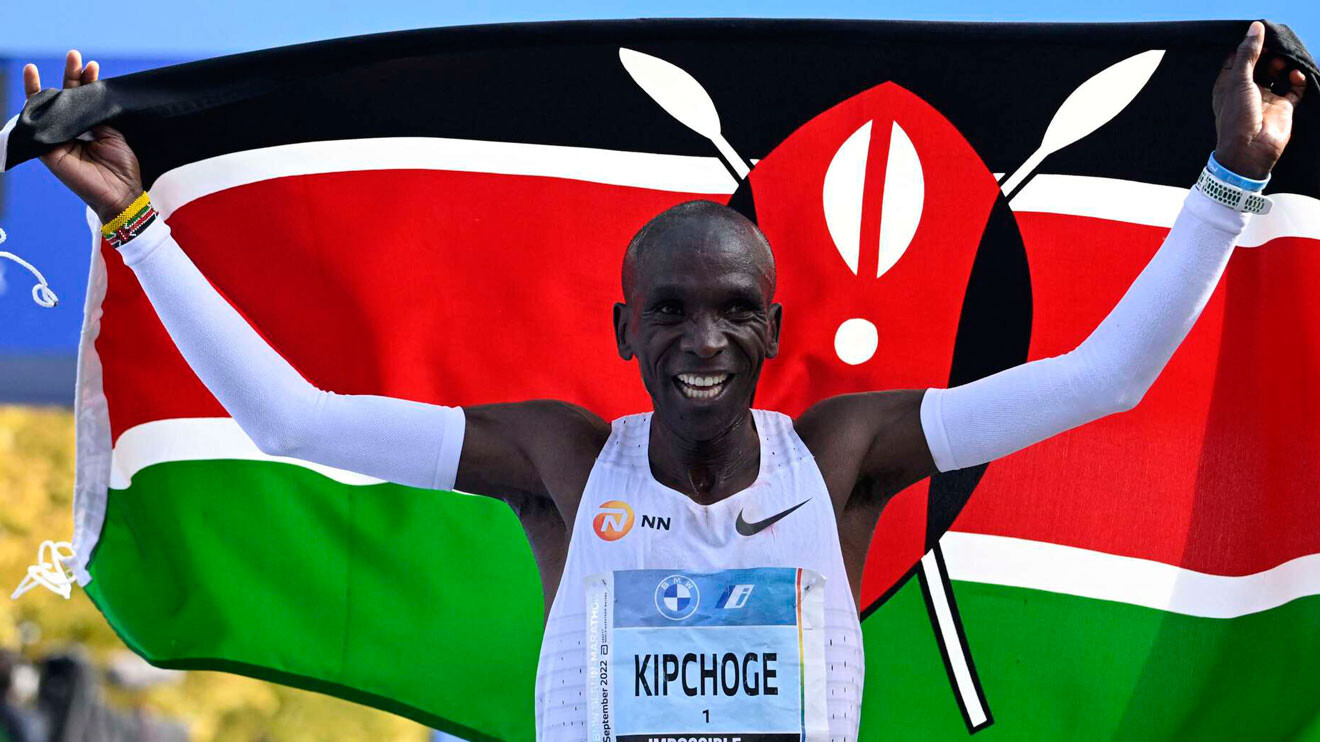
The finalists are (in alphabetical order):
Mondo Duplantis, SWE- World pole vault champion indoors and outdoors- Diamond League and European pole vault champion- Improved his world record to 6.19m and 6.20m indoors, and then 6.21m outdoors
Soufiane El Bakkali, MAR- World 3000m steeplechase champion- Diamond League 3000m steeplechase champion- Unbeaten in 2022, running a world-leading 7:58.28 in Rabat
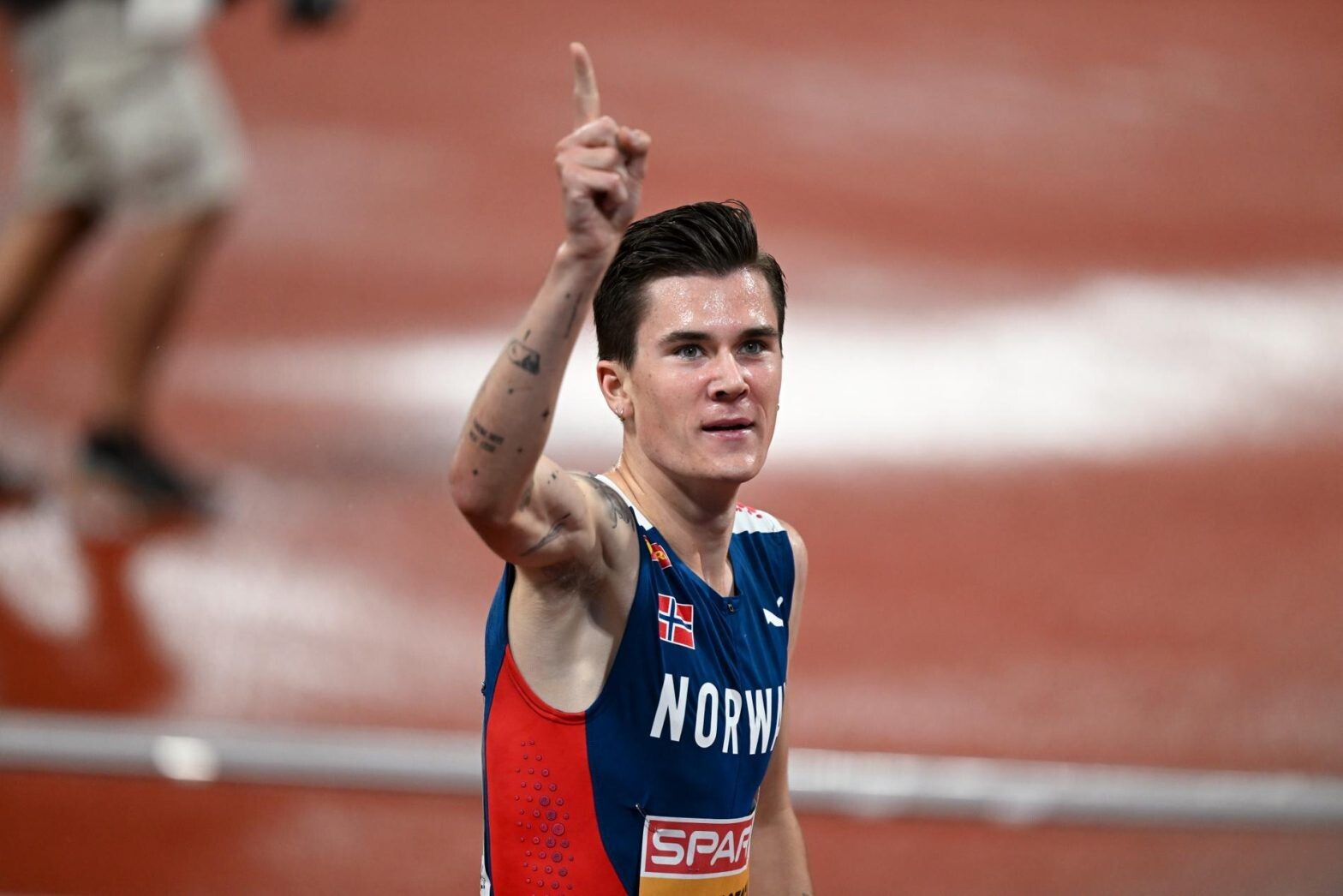
Jakob Ingebrigtsen, NOR- World 5000m champion, world 1500m silver medallist indoors and outdoors- European 1500m and 5000m champion- Ran a world indoor 1500m record of 3:30.60 and won the Diamond League title in a world-leading 3:29.02
Eliud Kipchoge, KEN- Improved his world marathon record to 2:01:09- Berlin Marathon champion- Tokyo Marathon champion
Noah Lyles, USA- World 200m champion- Diamond League 200m champion- Ran a world-leading national record of 19.31 to move to third on the world all-time list
Voting procedure for 2022 World Athletes of the Year
A three-way voting process determined the finalists.
The World Athletics Council and the World Athletics Family cast their votes by email, while fans logged their decisions online via the World Athletics social media platforms where a record 1.3 million votes were registered.
The World Athletics Council’s vote counted for 50% of the result, while the World Athletics Family’s votes and the public votes each counted for 25% of the final result.
Voting closed on 31 October.
The World Athletes of the Year will be announced on World Athletics’ social media platforms in early December, as part of the World Athletics Awards 2022.
(11/15/2022) ⚡AMPby World Athletics
Obiri and Kwizera are the favorites in Madrid
The 57th San Silvestre Vallecana, a World Athletics Elite Label Road Race and possibly the most prestigious of the myriad of New Year's Eve races around the world, will return to its usual circuit (December 31) after a change last year because of the pandemic.
The women’s race on the slightly downhill 10km point-to-point course – which starts alongside the famous Santiago Bernabeu stadium of Real Madrid and finishes on the pitch of another Spanish first division club, Rayo Vallecano, in the Madrid suburbs – has Kenya’s distance ace Hellen Obiri as the athlete to beat.
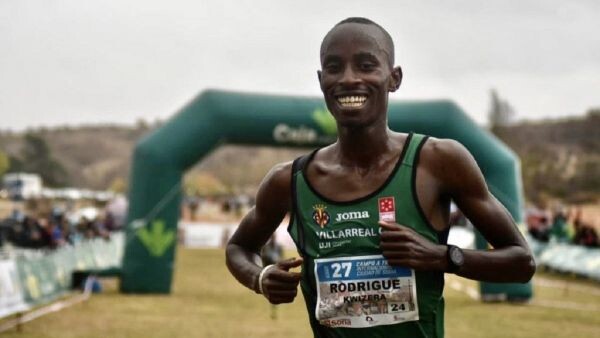
The two-time world 5000m champion and Olympic silver medalist finished second in Madrid in 2018 after a thrilling battle with her fellow Kenyan and current world marathon record-holder Brigid Kosgei. Obiri’s outstanding 29:59 time then proved not enough to take the victory, but the 32-year-old will be eager to claim victory in Madrid for the first time on her opening appearance this winter.
Yet the reigning world cross country champion Obiri will face tough opposition provided by Ethiopia’s Degitu Azimeraw, 10 years her junior. Azimeraw is an accomplished road specialist, having recorded the second quickest ever marathon debut when she won in Amsterdam in 2:19:26 in 2019 to also break the course record in the Dutch city.
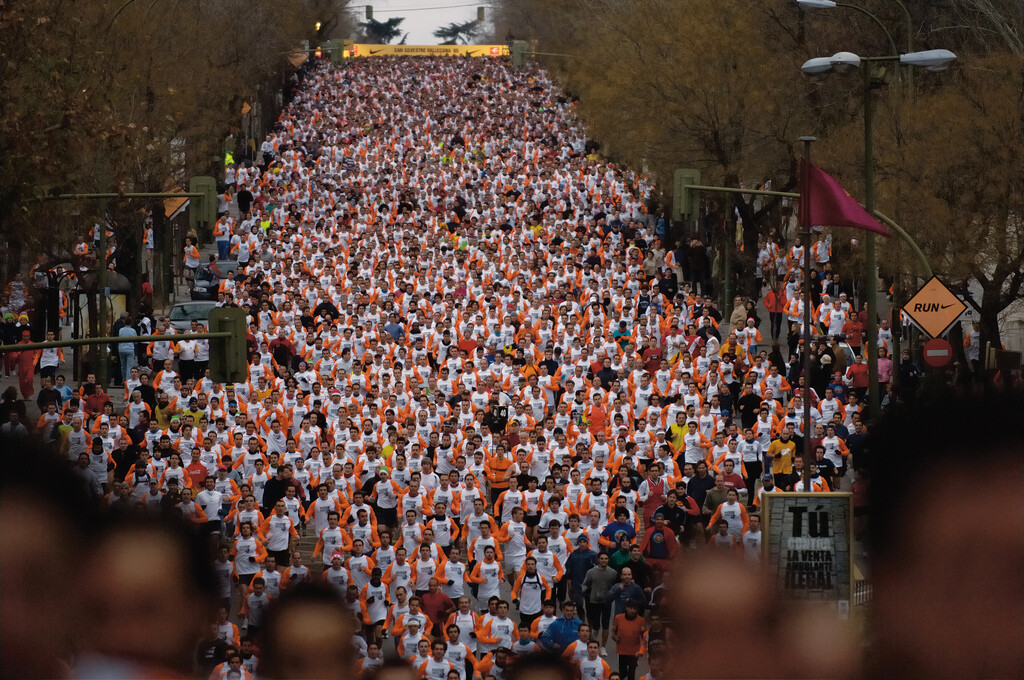
After another fine performance over the classic distance of 2:19:56 for sixth in Valencia in 2020, the Ethiopian moved to 11th on the world all-time list last October following her runner-up spot in London in a big lifetime best of 2:17:58. Azemiraw boasts a relatively modest 31:03.32 10,000m clocking set in Hengelo a couple of years ago. The NN Running Team athlete will be joined by her teammates Lonah Salpeter of Israel and Haven Hailu from Ethiopia.
The 33-year-old Salpeter holds the European 10km record with a 30:05 time to her credit set in Tilburg in 2019, one year after she won the European 10,000m title in Berlin. She attempted to land an Olympic marathon medal in Sapporo, remaining in a four-unit leading pack until the 36th kilometer, but some stomach problems ultimately hampered her aspirations. After that disappointment, Salpeter bounced back eight weeks later to place fifth at the London Marathon in her second quickest time of 2:18:54, not particularly far from her career best of 2:17:45 run in Tokyo in 2020 which makes her the eighth fastest woman in history.
Watch out too for the 23-year-old Hailu, as she was an unheralded distance runner until this year but clocked 2:20:19 for third in Amsterdam in October. She will compete in the company of her fellow Ethiopian Likina Amebaw Ayel, a 32:20 performer.
The men’s contest is also shaping up well as the classy cast includes the in-form Burundian Rodrigue Kwizera. The 22-year-old is enjoying a fantastic cross country season on Spanish soil, having taken victories at several prestigious events such as Soria, San Sebastian, Atapuerca, Italica and Venta de Banos. While the race record of 26:41 set by Jacob Kiplimo in 2018 seems unreachable, Kwizera should run well under the 28-minute barrier for the first time in his career.
Trying to deny Kwizera top spot will be Spain’s 2021 sensation Mohamed Katir, who broke three long-standing national records in the short space of 33 days. The rising Spaniard began his tally by clocking 12:50.79 for 5000m in Florence on 10 June, continued with a 3:28.76 1500m performance in Monaco on 9 July and concluded in style by taking the win over 3000m in Gateshead four days later, timed at 7:27.64.
In his first appearance at a major championships, Katir finished eighth at the Tokyo Olympics over 5000m. He more recently took the spoils at the Jean Bouin, a 10km road race held in Barcelona on 28 November, when he outsprinted Eritrea’s Merhawi Mebrahtu after a one-month stint at the altitude of Font Romeu. The 23-year-old’s next primary goal is the indoors, where he will try to excel over 3000m.
Kenya’s Shadrack Koech and Uganda’s Boniface Abel Sikowo should also be in the hunt for a podium place on Friday. The former holds a 27:21 10km lifetime best, while Sikowo is an 8:25.91 3000m steeplechase athlete who is tackling the road events and ran a 1:01:44 half marathon debut in Barcelona in October.
Not to be discounted is Kenya’s Emmanuel Kiplagat, as the 19-year-old clocked 28:28.02 for 10,000m last summer at the altitude of Nairobi.
In addition to Katir, Spanish hopes rest on Nassim Hassaous and Abdessamad Oukhelfen as they finished seventh and 12th respectively at the European Cross Country Championships in Dublin to lead Spain to team silver, while marathon runners Ayad Lamdassem (2:06:35) and Yago Rojo (2:08:56) will be aiming for a top 10 spot. The Tokyo Olympics 1500m 13th-placed Ignacio Fontes will also be in contention.
Weather forecasters predict perfect conditions for the race, with a mild and windless night, and temperatures between 12 and 14ºC by the time of the event.
(11/15/2022) ⚡AMPby World Athletics
San Silvestre Vallecana
Every year on 31st December, since 1964, Madrid stages the most multitudinous athletics event in Spain.Sport and celebration come together in a 10-kilometre race in which fancy dress and artificial snow play a part. Keep an eye out for when registration opens because places run out fast! The event consists of two different competitions: a fun run (participants must be...
more...Ultrarunner Adam Campbell’s tips to master your mid-race mindset
If you’ve ever found yourself nailing your goals in a race, you may have also experienced some panic or fear, and wondered how exactly to continue. Canadian ultrarunner and mountaineer Adam Campbell addressed this on social media recently, sharing: “The first time you move from dreaming about something to actually being in a position to see it through can be scary.
It takes a mind shift to not panic, to keep executing the way you have been, and keep flowing the way you were that got you there in the first place.”
Finding success in a race can be thrilling, but also frightening, and it can derail even the most skilled athlete. We caught up to Squamish-based Campbell to hear his tips on staying on track when you suddenly find yourself performing in a way you’ve only dreamed of.
Think ahead–imagine your emotional state in various outcomes
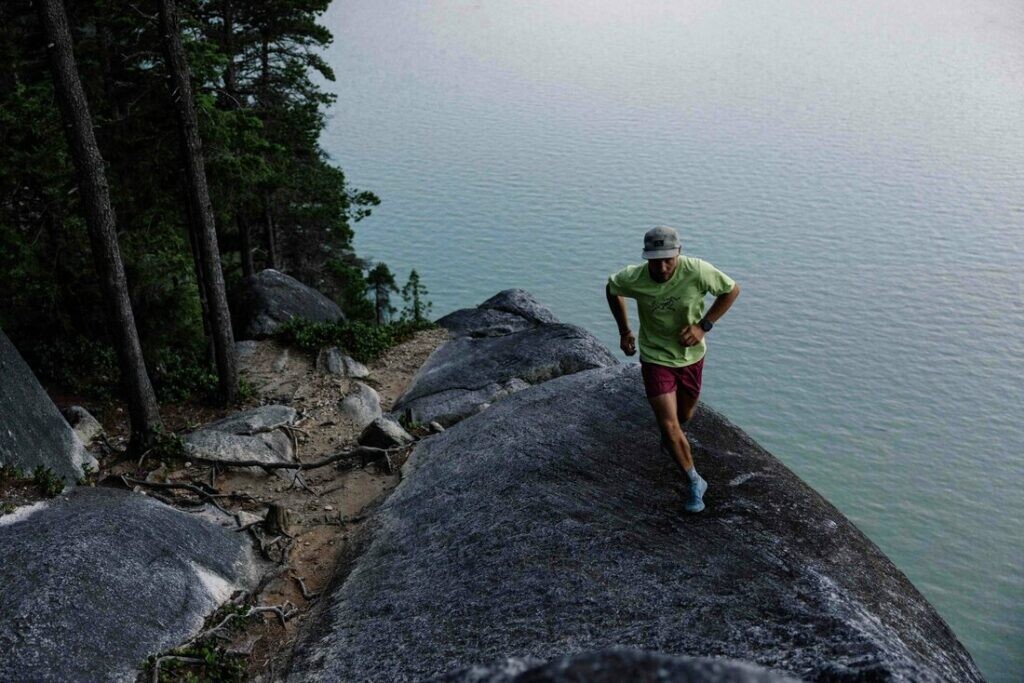
Campbell notes it’s amazing how quickly we can lose sight of our original race plans, attitude and mind frame when we find ourselves in a position to succeed. He suggests thinking these situations through ahead of time.
“We often visualize a process, i.e., getting nutrition, what our pace should be, or how we want to handle certain sections of a course, but we don’t think about the emotional state we want to be in when we are achieving our desired outcome,” he explains.
Instead of rising to the occasion, when we find ourselves nailing our goal, we’re often flooded with “don’t screw up” thoughts, he says. These are draining–and Campbell suggests the more emotional steadiness we can maintain in a race, the more our energy can be channeled toward moving fast.

“Try to think about how it might feel being on pace or just ahead of it [in a race] while training,” Campbell says.”Think about what happens and what you’re going to tell yourself when you are nailing your game plan, so that when you suddenly find yourself there, it’s not a surprise, and you aren’t as nervous.”
Recognize the stress you’re feeling, and disarm it
Campbell notes that we put a lot of pressure on ourselves when we aim for certain times or positions in a race. While this pressure can be positive, getting us training and propelling effort into pushing our limits, the same pressure can backfire and end up causing a blow-up in a race.
“To some degree, it’s a stress response, a form of self-protection from a perceived threat, in this case, self-imposed pressure,” says Campbell. Recognizing the stress and acknowledging why it is appearing can help disarm it.
“I have even heard of people giving a name to the stress, like ‘John’ and when those ‘don’t mess up’ thoughts show up, you can thank John for appearing and trying to protect you, but also tell him that you don’t need his help right now and politely ask him to leave,” Campbell shares.
If that seems too abstract, Campbell suggests giving yourself specific tasks to focus on, from keeping your form dialed in or focusing on nutrition in long races, to help you stay present and negate some of that potential anxiety.
Practice emotional self-regulation in training
Campbell emphasizes self-talk and practicing emotional regulation as essential components of training.
“I create stories and narratives for myself, visualizing different race scenarios during training sessions,” he adds. “This kinesthetic imagery, or visualization, can be used to help you establish positive responses to negative situations that may arise in races.”
Avoid self-sabotage–look at your patterns
“If you consistently find yourself making decisions mid-race, or even making decisions going into races, that self-sabotage your desired results, do an honest debrief about everything you did going into and during the race,” suggests Campbell.
“Analyze your behavior and recognize your patterns–name them. When you start to find yourself second-guessing what you are doing, have a conversation with the doubter in you and ask them to kindly move on.”
Campbell points out that in a long race, if you find yourself in an extended bad patch or low point, slowing down to eat and reframe your mental state can make a world of difference. “It is amazing how much our emotional state can vary, just because we are underfuled in those long efforts,” he says.
Revisit your goals
Campbell says we often don’t talk about the very important need to revisit our goals: “Are the factors you are focusing on something you can actually control or are they external factors?” He suggests keeping your focus on the process of executing the best race you can on the given day.
(11/15/2022) ⚡AMPby Running Magazine
Dublin cop banned for life after taking public transit to finish last month’s race
An Irish runner, who works as a police officer, has been barred for life from the Dublin Marathon after he was allegedly caught taking public transit to finish last month’s race.
Race organizers began investigating the police officer’s result when they found that he negative-split his marathon by 50 minutes.

The officer averaged six-minute kilometers through halfway and increased his pace to a staggering 3:45 per kilometer in the final 21 kilometers.
He was allegedly seen boarding Dublin’s streetcar system, the Luas, which he used to get closer to the finish line.
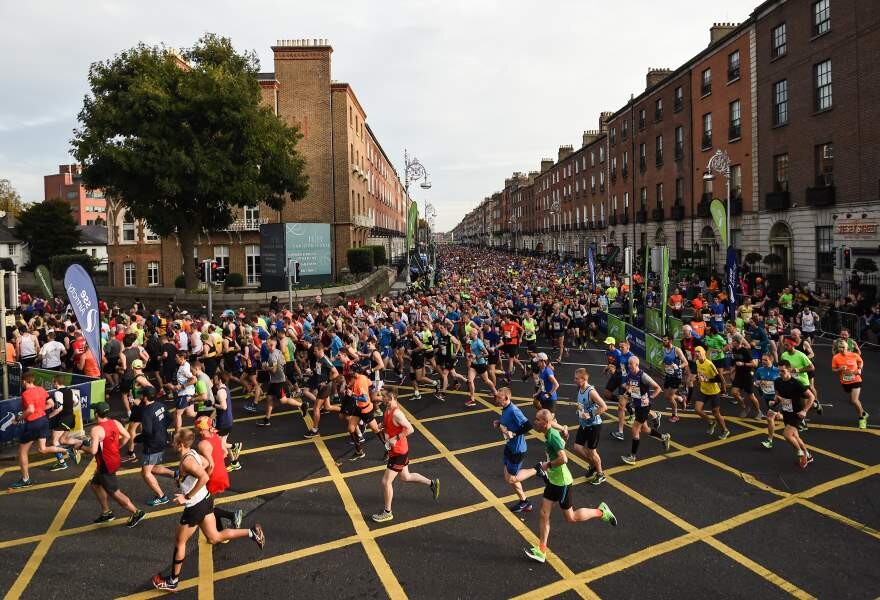
The officer finished in the top six per cent of all runners, but has since been disqualified and forced to apologize, returning his medal and T-shirt. His result was removed from the Dublin Marathon results.
Race organizers told the Irish Mirror they have finished their investigation and said the individual (who was not named) will be banned from all future events at the Dublin Marathon.
Coincidentally, the man caught cheating works for the anti-corruption unit of the Dublin Police and is tasked with investigating wrongdoing within the force. According to the Irish Independent, the police force is also conducting a fact-finding review.
An estimated 25,000 runners took part in the race around Dublin on October 30. The marathon route was one lap around the city and was won by Taoufik Allam of Morocco in 2:11:30 and Nigist Muluneh of Ethiopia in 2:28:31.
(11/14/2022) ⚡AMPby Marley Dickinson
KBC Dublin Marathon
The KBC Dublin Marathon, which is run through the historic Georgian streets of Dublin, Ireland's largest and capital city.The course is largely flat and is a single lap, starting and finishing close to the City Centre. Conditions formarathon running are ideal....
more...Meet the 91-Year-Old Greek Marathon Runner
Marathon runner Stelios Prassas, at 91 years old, is likely the oldest athlete that participated in the 2022 Athens Marathon.
Prassas, who prides himself in maintaining not only the physical fitness of a teenager, but also the spirit of one, was born in 1931.
The incredible athlete has won eight national awards, and tested out his skills for one more time at the Athens Marathon, that took place on November 12-13.
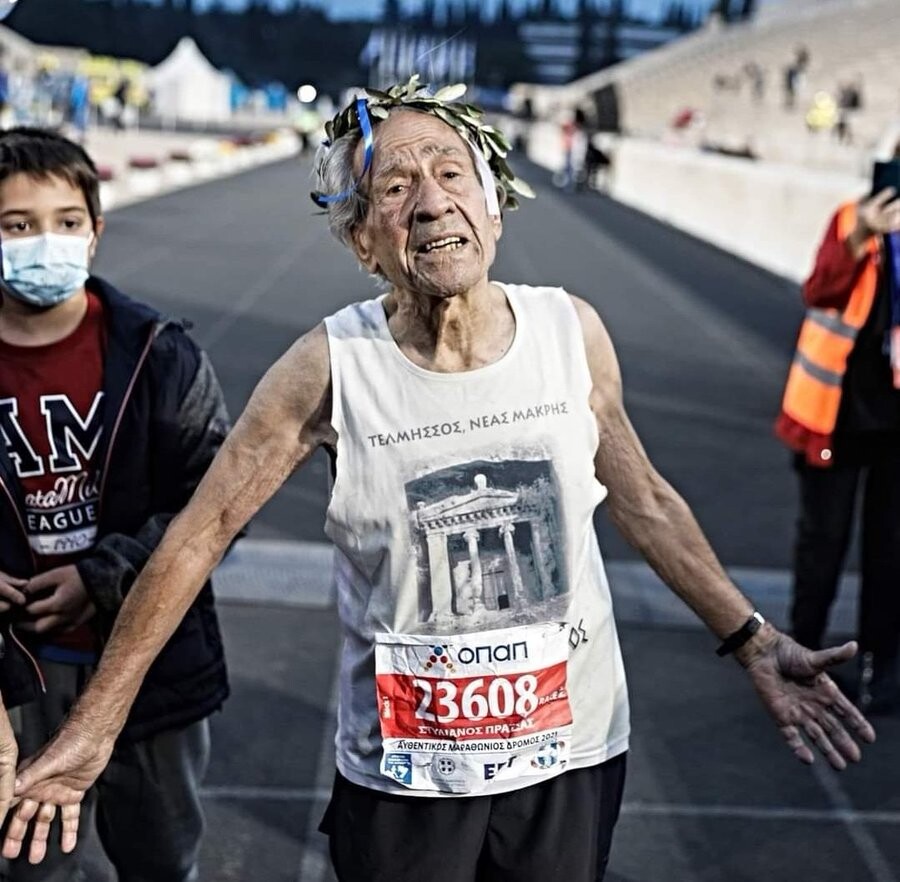
He is likely the oldest out of all 45,000 runners that participated in the Marathon, which follows the same route taken by Pheidippides when he ran from Marathon to Athens during the Persian Wars.
In a historic moment that made him the most lauded runner in history, the military courier ran from the battlefield at Marathon, northeast of the Greek capital, to Athens, and then collapsed and died afterward. He was sent to deliver the urgent message that the Greeks had defeated the Persians in 490 BC.
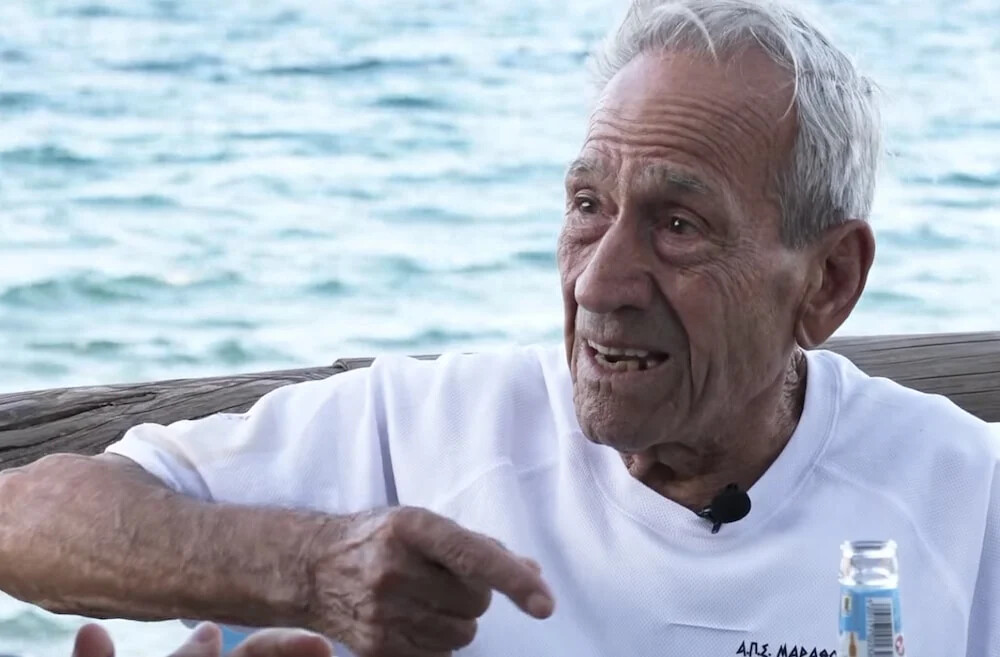
Prassas, speaking with Marathon Greece, reflected on following that iconic route, and finishing the Marathon in front of the Panathanaic Stadium, stating:
“The most moving moment is always when I finish the Marathon. It’s an indescribable moment! I love it when I enter the stadium, above all when I enter the one in Greece, the Panathenaic Stadium.”
“It’s a temple, all athletes need to kneel there. There are no stadiums with that kind of marble in the world. In other countries, we run to skyscrapers and apartment buildings,” the 90-year-old Greek marathon runner noted.
91-year-old Greek Marathon runner Stelios Prassas loves life
Prassas has a holistic philosophy to health and fitness. In terms of his diet, he mainly eats legumes and vegetables, and very little meat.
He has always been an active person, and he has never exercised with a trainer, rather he listens to “what my body and my heart tell me. My body gives me the ability to be in the stadium and run eight to 10 km (five to six miles) every day at 90” Prassas stated in a 2021 interview.
“A person must do what he does because he loves it very much,” the athlete stressed.
“The moment I go to the stadium to work out, I feel great love that fills my heart. I feel so much happiness when I am inside the stadium,” he continued.
Prassas, who owns a store in the Athenian neighborhood of Vyronas and is the head of his family, began running as an adult after a friend asked him to come along with him for a run.
“I like what I do very much. I started running marathons at 59,” Prassas stated. His love affair with running has never burnt out.
Yet his love for his wife is even stronger. “My wife’s love is indescribable. She is a heroine of Greece.”
The athlete does not think about the end of his life, rather, he prefers to enjoy each day he is on this earth.
“I have never been afraid of death, I have never thought of it, and it has never passed through my mind.”
“I want all young people to be happy and to enjoy their lives because we are all impermanent, no one will stay here forever,” Prassas stressed.
(11/14/2022) ⚡AMPby Anna Wichmann
Athens Marathon
The Athens Classic (authentic) Marathon is an annual marathon road race held in Athens, Greece, normally in early November. The race attracted 43.000 competitors in 2015 of which 16.000 were for the 42.195 km course, both numbers being an all-time record for the event. The rest of the runners competed in the concurrent 5 and 10 kilometers road races and...
more...Molly Seidel returns to racing at BAA Half Marathon
Olympic bronze-medal marathoner and fan favorite Molly Seidel is back. Seidel jumped into the Boston Athletic Association’s (BAA) Half Marathon on Saturday, and in a post-race press interview shared that her 1:16:22 finish (16th woman) was “right in line with what I expected it to be.”
While Seidel said it was frustrating not to have been able to build the fitness she had wanted for the race, her priority had been making sure her health, both mental and physical, was strong enough to compete.

“Lots of nerves, but honestly just pumped to be back on the line in my favorite city,” she shared pre-race on social media, where the athlete has been a compelling force around mental health and eating disorder awareness for legions of fans.
With only two full weeks of running training before the race, Seidel said that while she knows she still has a long way to go, it’s nice to have a foundation of health to build on right now.
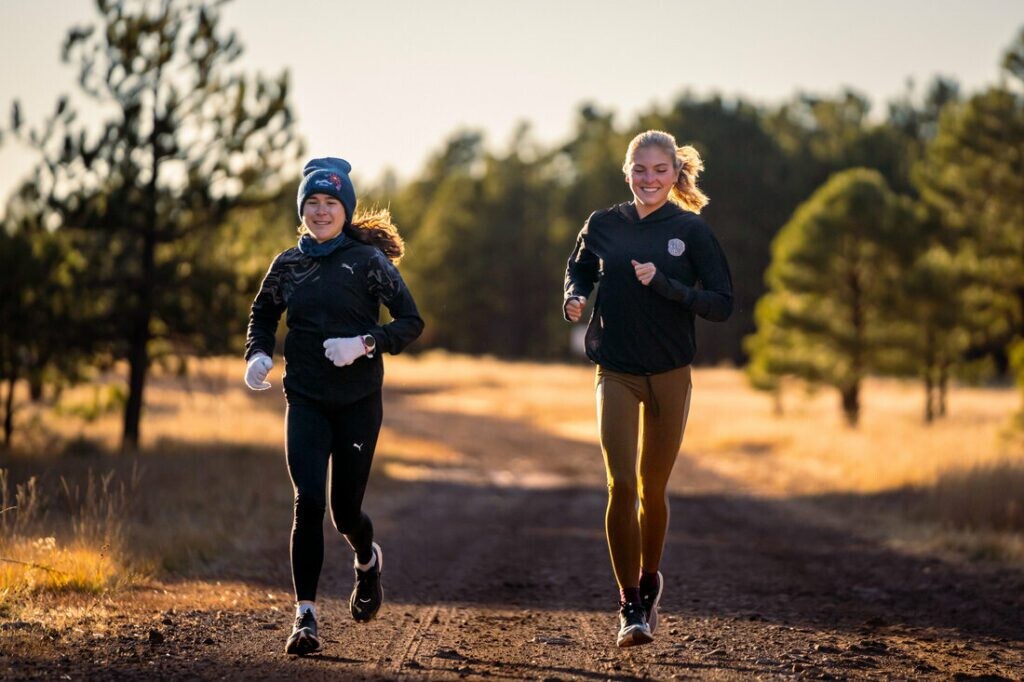
After pressing pause on competition pre-World championships in July due to a sacral stress reaction (later diagnosed as a full fracture), Seidel has courageously and candidly shared the ongoing mental health challenges she has been facing, discussing her eating disorder recovery on social media and stressing the importance of reaching out for help.
In February, the athlete was diagnosed with attention-deficit hyperactivity disorder (ADHD), and after having found some relief from the medication Adderall, dropped out of the NYC 10K Mini while waiting for a therapeutic use exemption (TUE) for the medication.
In October, Seidel went into further detail about the hurdles she was facing in an interview for Runner’s World, explaining that she had been dealing with a sense of shame after struggling throughout the summer with bulimia, a disease that she had first sought treatment for post-university and that she describes as “coming in waves.”
While Seidel felt pressure to be ‘cured’, eating disorder recovery is far from linear, and the athlete described an intense struggle after the 2022 Boston Marathon (where she was forced to drop out due to hip pain).
Seidel has also openly discussed her choices to step back from Strava and Instagram in the past year, and in sharing bravely about tough topics that are often hidden from view has undoubtedly given hope and courage to others facing similar personal challenges.
While the athlete hasn’t announced plans for her next event, fans and fellow athletes alike will be thrilled to see Seidel back in the racing game, looking healthy and happy.
(11/14/2022) ⚡AMPby Keeley Milne
B.A.A. Half Marathon
Dana-Farber and the Jimmy Fund have partnered with the B.A.A. in the Half Marathon for 13 years as the race’s presenting sponsor. Through this relationship, team members have collectively raised more than $5 million to support groundbreaking cancer research, and enabled Dana-Farber scientists and clinicians to positively impact the lives of cancer patients around the world. Dana-Farber runners often participate...
more...Kenyans dominate at 2022 Kuala Lumpur Standard Chartered marathon
Kenyan runners were clearly in a class of their own as they dominated the men’s and women’s open full marathon categories (42.195 km) of the 2022 Kuala Lumpur Standard Chartered Marathon (KLSCM) today.
In the event, which started and ended at Dataran Merdeka here, Moses Kiptoo Kurgat, who was making his debut, won the men’s category after clocking 2 hours 11 minutes and 6 seconds.

He defeated compatriots Kiprop Tonui and Ngare Joseph Mwangi, who finished second and third respectively with times of 2’15:23s and 2’16:06s.
Kurgat said he could have recorded a better time if not for the humid weather but was still satisfied with his performance.

In the women’s category, Shelmith Nyawira Muriuki won the race in 2’44:16s, beating compatriots Sheila Jepkosgei Chesang (2’45:15s) and Eunice Nyawira Muchiri (2’49:00s) into second and third places respectively.
“I was not expecting to win because there were so many strong opponents. God was the one that helped me today.
“It also feels good to win with my compatriots. When you win, your flag is flying high for the country,” Muriuki told reporters after the medal ceremony.
S. Poo Vasanthan emerged as the champion in the Malaysian men’s full marathon after recording 2’37:56s, while Noor Amelia Musa took home the title in the women’s category with a time of 3’13:59s.
Meanwhile, KLSCM project director Rainer Biemans said he was glad that the event went smoothly as planned, especially when it had been cancelled for two years due to Covid-19.
“It’s good to be back but we still hope to improve next year as there’s always a chance for us to improve. Maybe add a few more registrations for next year,” he told Bernama.
(11/14/2022) ⚡AMPKuala Lumpur Marathon
Standard Chartered Bank has been the title sponsor of the KL marathon since its inception in 2009 and we are honoured that our partnership will continue and as always, our aim is to make the Marathon bigger and better", said Rainer Biemans, Director of Dirigo Events and Project Director of the Standard Chartered KL Marathon 2018. The Standard Chartered KL...
more...The 2022 B.A.A. Half Marathon returned to Franklin Park this morning as more than 6,300 athletes completed the 13.1-mile challenging course
At the front of the field, Kenyans Geoffrey Koech and Viola Chepngeno prevailed as men’s and women’s open division champions.
Despite sporadic rain throughout the morning, participants covered the challenging course through Boston and Brookline with smiles and enthusiasm.

With a ferocious sprint into White Stadium, Chepngeno claimed the women’s open win in 1:10:40, just three seconds in front of Ethiopia’s Bosena Mulatie. Chepngeno, Mulatie and Hiwot Gebrekidan (Ethiopia) ran a majority of the race together, but it was ultimately the B.A.A. Half Marathon debutant in Chepngeno having the best finish of all.
“I’m happy. So, so happy,” said a smiling Chepngeno. “The rain was cold. But I am happy so much!”
Gebrekidan was third in 1:11:09, with B.A.A. High Performance Team member Erika Kemp finishing as the top American, seventh in 1:12:13. Team USA Olympians Molly Huddle and Molly Seidel placed 12th (1:13:29) and 16th (1:16:22), respectively.
As a pack of a dozen runners led the men’s race through 10K, it was Koech taking the reigns at mile 9. While Tsegay Kidanu (Ethiopia), Zouhair Talbi (Marocco), and Teshome Mekonen (USA) did their best to keep close, it was Koech who stormed out of Franklin Park Zoo in front and wound up winning in 1:02:02. Kidanu and Talbi rounded out the podium in 1:02:10 and 1:02:15, while Mekonen placed fourth in 1:02:28 as the top American finisher. This was Mekonen’s first race as an American citizen.
“The race was good, I am happy in Boston,” noted Koech, who said he came into the race briming with confidence. When did he know he had victory sealed? “The last 5K, all of the twisting [turns before the finish].”
(From Let's Run) Teshome Mekonen was born and raised in the Tigray region of Ethiopia but has been based in the US since 2020 and gained his citizenship in August (we’ll have more on his story next week on LetsRun.com). Only four Americans have ever run faster than Mekonen’s pb in the half (60:02), and while that time dates from 2018, it’s also worth noting that Mekonen raced Conner Mantz at the NYC Half in March of this year and beat Mantz by a minute.
He’s clearly one to watch for the 2024 Olympic Marathon Trials, though his two marathons so far haven’t gone very well (2:22 in New York last year, 2:13 in Ottawa this year). His performance today was solid — though 62:28 is over two minutes off his pb, the hills and rain slowed most of the field. For reference, men’s winner Geoffrey Koech ran 62:02 today but 60:01 at the Cardiff Half in October.
After crossing the finish line in Boston today, Mekonen crossed his arms above his head in a similar gesture to the one made by Feyisa Lilesa at the 2016 Olympic marathon. Mekonen said his gesture was to bring attention to his home region of Tigray, which has been at the center of a civil war between Tigray and the Ethiopian federal government over the last two years. While there was positive news last week with leaders from each side agreeing to a truce, getting humanitarian aid to the area has still been a problem and Mekonen has been unable to communicate with his family and friends in the region.

“In Tigray, still everything is no food, no medicine, no bank, no electricity,” Mekonen said.
Mekonen said right now he’s already started training for his next marathon, which will come on January 15 in Houston.
“My [training] program, everything is marathon [right now],” Mekonen said. “This [race] is like time trial.”
Mekonen said he’s hoping to run 2:08 in Houston and finish in the top three.
Quick Take: Molly Seidel — “I’m just in such a drastically better place than I have been for a long time”
Molly Seidel’s time today of 76:22 was, by her standards, poor — at her best, she can easily maintain that pace for a full marathon. But Seidel was still in good spirits. For the first time in a long time, she feels she is in a good place with her body and her mental health. Today’s race was a chance to lay down a marker of where she’s at right now, but she expects to get a lot faster in the coming months.
“While it’s frustrating to come out and not be anywhere near the front pack, it’s nice knowing that I’m just in such a drastically better place than I have been for a long time,” Seidel said.
It has been a rough year for Seidel. After the high of a bronze medal at the Olympics and American course record in the New York City Marathon last year, Seidel has faced a number of challenges in 2022. She dropped out of the Boston Marathon with a hip injury that wound up as a sacral stress fracture. She has also struggled with disordered eating and was forced to withdraw from the New York Mini 10K earlier this year because she was waiting to receive a TUE for Adderall, which she had been taking to manage her ADHD (she no longer takes the drug). But, thanks to the help of her family, her coach Jon Green, and the rest of her support team, Seidel said she is feeling the best — mentally and physically — that she has for a long time.
The stress fracture sidelined Seidel until October, and even once she resumed training, it was mostly cross-training due to an ankle issue that flared up. But she is back to full training now and says she has hit 110 miles the last couple of weeks.
“I’m like one of those steaks that’s raw and you throw it on the grill and fast-sear it,” Seidel joked.
Quick Take: Molly Huddle’s comeback continues — though it’s different racing now as a mom
Molly Huddle had already raced twice since giving birth to daughter Josephine in April, both at 10 kilometers (33:59 at the Lone Gull 10K on September 25 and 33:32 at the Boston 10K for Women on October 8). Today was another step forward on her comeback and the longest race she’s done so far.
Huddle said her time of 73:29 was slower than she hoped but knew it would be tough after 10 miles — which is exactly what happened. Huddle already has another half lined up in Houston in January and hopes that with two more months of training under her belt, she will be able to feel stronger in that race.
“This [race today] will bring me along, for sure,” Huddle said. “I think the next half will be a lot faster.”
Huddle also thinks she’ll feel stronger once she stops breastfeeding Josephine — she had to pump milk today 20 minutes before her warmup.
Huddle is returning to a faster marathon scene in the United States than the one she left when she took her maternity break. The American record has been broken twice this year and now stands at 2:18:29 to Huddle’s occasional training partner Emily Sisson.
“It’s crazy,” Huddle said. “The women are running so fast and it’s so deep up front. From the 2:18 to 2:22 range, we have a lot of women. I’m just hoping to PR. Mine is 2:26 the last time I ran. That was pre-supershoe era.”
Huddle will be 39 by the time of the 2024 Olympic Marathon Trials and right now would not be among the favorites to make the team — even in her prime, Huddle was always better at the shorter distances on the roads. She admitted she’d need to catch some breaks to have a shot at the Olympic team in 2024 but isn’t completely counting herself out.
“Marathons have a lot of variables, so I’d need a few to go in my favor and against somebody else,” Huddle said. “But you never know. The marathon, I think I have a shot.”
(11/13/2022) ⚡AMPB.A.A. Half Marathon
Dana-Farber and the Jimmy Fund have partnered with the B.A.A. in the Half Marathon for 13 years as the race’s presenting sponsor. Through this relationship, team members have collectively raised more than $5 million to support groundbreaking cancer research, and enabled Dana-Farber scientists and clinicians to positively impact the lives of cancer patients around the world. Dana-Farber runners often participate...
more...The Difference Between Zero-Sugar and Electrolyte Sports Drinks
When to Choose Electrolyte Sports Drinks
Reach for electrolyte sports drinks in situations where you need to replenish nutrients, like after intense exercise."I would never want a marathon runner to choose a sugar-free sports drink when they are in the middle of a marathon because they need those simple carbohydrates contained in the regular sport drink to give them energy and fuel for their race," Ehsani says.

However, strenuous exercise isn't the only way your body loses electrolytes. If you're sick and throwing up a lot, for example, it's best to rehydrate with a drink that will replenish what you've lost. The same goes for illnesses that cause dehydration. In addition to rehydrating, electrolyte drinks will also help restore any depleted fluids.
When to Choose Zero-Sugar Sports Drinks
If you simply need to quench your thirst or cool down, a sugar-free sports drink may be the better option. "If an athlete is in their off season and just doing very light workouts a few times a week, they likely don't need additional calories and can use a zero sugar option, which will give them the electrolyte they need to replace from sweating," Ehsani says.
Artificial sugars in these drinks aren't harmful, as long as they aren't consumed in large doses, which can cause gastrointestinal issues such as bloating, diarrhea, nausea, and an upset stomach.
What's the Best Way to Recover After Exercising?
Sports drinks are an easy solution to post-workout energy and fluid loss, but even they aren't the most optimal option. First, rehydrate with water. Ehsani also recommends eating something with a 3:1 ratio of carbs to protein within 60 minutes of finishing your workout: a smoothie made with a variety of fruits and soy milk, a greek yogurt parfait topped with fruit and granola, or pretzels and peanut butter. To replace lost electrolytes, eat foods rich in sodium, chloride, potassium, magnesium, and calcium, which are all lost through sweat, she adds.
Whether you've just finished a strenuous hike or have been working in the heat all day, you're probably reaching for a sports drink to rehydrate. There are two prominent varieties of the drink: electrolyte sports drinks and sugar-free sports drinks. Here's what electrolyte sports drinks and sugar-free sports drinks are made of, their differences, and which is best in a given situation.
What's the Difference?
"When strictly comparing, you may just notice a difference in overall calories, carbohydrates, and sugar amounts," says Roxana Ehsani, MS, RD, CSSD, LDN, Board Certified Sports Dietitian. Electrolyte sports drinks contain electrolytes as well as simple carbohydrates that provide energy to the user. "These options are much higher in carbohydrates and calories than the zero sugar sports drinks," Ehsani says.
Sugar-free sports drinks are made with artificial sweeteners, such as sucralose, and are generally lower in calories and carbohydrates than regular sports drinks. However, this doesn't mean they're completely void of electrolytes. "Zero-sugar sports drinks are often intended for individuals who need added sodium, such as in humid weather where sweating is increased, but may not need additional calories," says Mary Wirtz, BCDC. These drinks also have added potassium.
(11/13/2022) ⚡AMPby Trail Runner Magazine
Apple Fitness+ Aims to Make Yoga More Approachable for Runners
Think you don’t have time to stretch it out? The app routines last just 10 minutes each.If you ever wanted to make yoga a part of your regular routine and then got distracted by the need to chase more miles, cross off to-dos, or maybe spend some much-needed R&R on the couch, you’re certainly not alone. An hour-long yoga class can seem like a big commitment, even if you do want to reap the rewards of the practice, like better recovery and wellbeing.
Research shows that yoga is, indeed, good for runners. It can support heart health, reduce anxiety symptoms, and bolster your bones—not to mention the poses simply feel good for the tight hips and calves many marathoners tend to struggle with thanks to clocking many miles.
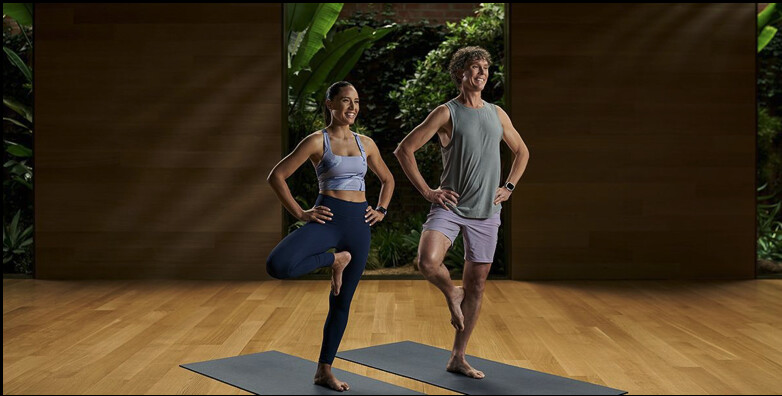
With this conundrum in mind—runners wanting to do yoga, but not making the time for long sessions—Apple Fitness+ teamed up with well-known ultrarunner, Scott Jurek, who won the Western States 100-Mile Endurance Run a record seven straight times and once held the fastest known time for completing the Appalachian Trial, and who has also been practicing yoga for about 20 years. They also tapped yoga instructor and Fitness+ trainer, Jessica Skye, and created a six-session series, with classes lasting just 10 minutes each.
Runner’s World sat down with Jurek, Skye, and Jay Blahnik, vice president of fitness technologies at Apple to talk about the yoga program, what it’s all about, and how it aims to open the doors to the mind-body practice for more runners.
What You Can Expect from the Apple Fitness+ Yoga for Runners ProgramBlahnik says that to make the shortened sessions in the program work for runners, they decided to get specific. Each session targets a goal: hip mobility, core strength, glute work, looser legs, stable ankles, and shoulder mobility.
Skye tells Runner’s World that they chose these themes by thinking about what runners need to address—or as Jurek puts it, considering the “problem areas” of runners—starting from the feet and working up through the shoulders. Each pose is meant to address issues runners face in those areas of the body.
During each class, you’ll move from one pose to the next in a sequence, but not in a flow-style (or vinyasa) in which movement is linked to inhales and exhales. Nevertheless, Skye still puts an emphasis on deep breathing throughout each 10-minute sequence.
“This is geared for the person who doesn’t think yoga is for them. And we always have a modifier—in all of our workouts, there’s always someone that’s showing an option that has a smaller range of movement, or they might be using blocks, or something like that, just so wherever you’re at on your yoga journey, even if you’re right at the beginning, you can always do it,” Skye says.
Blahnik adds that the goal of the 10-minute sessions was to make them easy to squeeze in before or after a run or in the morning or evening. This versatility would, therefore, make it more seamless to maintain a regular yoga habit. And it is often true, when you know you only have to commit to 10 minutes, you’re more inclined to press play.
The Mental Side of Yoga for Runners
Jurek says one of the biggest benefits to these sessions, and yoga in general, is allowing you time to tune into your body and recognize the benefits of slowing down. This can pay off on the run when you better notice the way your body is moving ant the beginning of the workouts, Skye encourages you to remember your intention and why you decided to take class or move your body. In a panel at the Apple store after the Runner’s World interview, Jurek talked about this intention-setting practice coming into play on the run—especially during long races in which you’ll likely experience tough mental moments.
“Whether it’s prayer, intention, or having something to look to beyond your own state [of hurt during a marathon]…just having that hope out there and realizing ‘I can get through this, because of A, B, and C,’ I think those are really important things to have,” Jurek says. “Try to cling onto those things that can motivate you and help you get through those dark spots [in a long run], because they happen and they’re normal.”
Why Apple Fitness+ Wants to Make Yoga Less Intimidating
Some runners feel the need to be super bendy in order to take a yoga class. But the truth is, there’s no being “good” at yoga—you don’t have to be flexible at all in order to do it or gain advantages from it. That’s what Apple aims to convey, simply by having Jurek in the frame and not afraid to wobble throughout class.
“I was the person that had all the blocks and all the props and all the extra help that I could because I was the most inflexible person in the room,” Jurek says about his first experiences in the studio. “And I think that can be intimidating to runners, because running isn’t something [in which] you need mega flexibility. But you want to avoid injuries, develop body awareness, and you want to have the strength. So, for runners, it’s about making [yoga] approachable, and having a setting where they feel like ‘okay, I can be stumbling.’”
While taking the yoga sessions, you’ll hear Skye suggest body placement for certain poses and Jurek almost always mentions that it’s okay if you can’t get there—that shortening your stance, or using props, or looking different than Skye in the pose is perfectly acceptable.
The message: Instead of focusing on how good you are at yoga (or running, for that matter), focus on consistency, being in the moment, and enjoying it. “It’s just like running—there is one day where you decide, I’m going to put one foot in front the other,” Jurek says. The same goes for yoga. To make it a part of your routine, you simply need to take it one breath, one pose, one session at a time—even if it’s just 10 minutes.
(11/13/2022) ⚡AMPby Runner’s World
Chepngeno, Tanui lead star-studded field for Boston Half Marathon
Vicoty Chepngeno and Josphat Tanui head the line-up for the elite field for the Boston Half Marathon set for November 13.
Chepngeno, who is the 2022 Aramco Houston Half Marathon champion, heads the list of fastest female athletes with a personal best time of 1:05:03.

Chepngeno has competed in a couple of half marathons since the year began including Istanbul in March, where she placed fourth in 1:06:58.
Ethiopia’s Bosena Mulatie lines up as the second fastest in the field with a PB of 1:05:46 posted at the Ras Al Khaimah Half Marathon in February, where he wound up fifth.
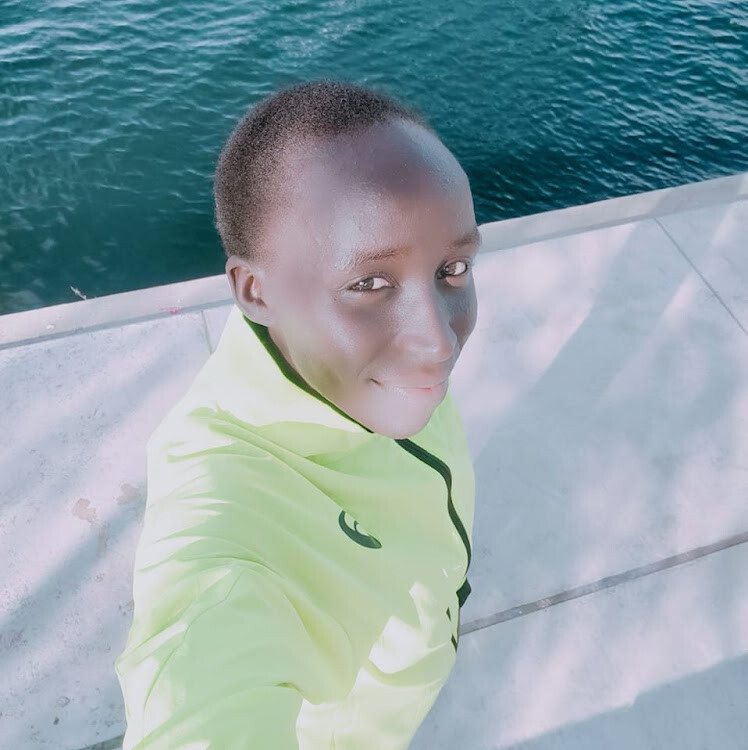
Also to watch will be another Ethiopian, Hiwot Gebrekidan, who placed fifth in 2:19:10 at the recent Tokyo Marathon. Gebrekidan also finished fourth at the Great North Run in 1:07:22.
Great Britain’s Jess Piasecki and USA’s Molly Huddle are among the top 10 fastest women and will be competing for top honours.
Piasecki and Molly have personal best times of 1:07:20 and 1:07:25 respectively. Other Kenyan women in the race include Cynthia Jerotich (1:06:04), Viola Chepngeno (1:06:48), Vivian Chepkirui (1:08:02) and Mary Munanu (1:11:56).
In the men’s category, Tanui heads the field with a personal best of 59:22, which he posted at the 2017 Ústi nad Lábem Half Marathon top place second.
Another Kenyan, Shadrack Kimining is the second fastest with a time of 59:27. Kimining placed second (1:00:34) at this year’s Rimi Riga Half Marathon back in May.
The Ethiopian duo of Lelisa Desisa and Tsegay Kidanu will also be in the race with the aim of spoiling the Kenyans’ party.
Desisa, the 2019 World Marathon champion, is the third fastest in the field with a PB time of 59:30. On the other hand, Kidanu has a PB of 59:52. Mexico’s Jose Santana with a personal best of 1:01:11 will also be in contention.
Other Kenyans in the field include Geoffrey Koech (59:36), James Ngandu (1:01:28), Dennis Kipkosgei (1:03:23) and debutant Vincent Kiprop.
(11/12/2022) ⚡AMPby Abigael Wuafula
B.A.A. Half Marathon
Dana-Farber and the Jimmy Fund have partnered with the B.A.A. in the Half Marathon for 13 years as the race’s presenting sponsor. Through this relationship, team members have collectively raised more than $5 million to support groundbreaking cancer research, and enabled Dana-Farber scientists and clinicians to positively impact the lives of cancer patients around the world. Dana-Farber runners often participate...
more...Kenyan 10,000m champion Renju earns five-year doping ban
Keneth Kiprop Renju, who won the national 10,000m title in April, has become the latest Kenyan middle distance runner to be banned for doping.
Renju has been sanctioned for five years following three positive tests this year for banned steroid methasterone, the Athletics Integrity Unit has reported.
The 26-year-old returned adverse analytical findings in competitions between March and May this year.
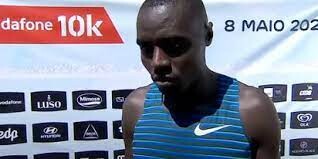
The first test occurred at the 10km de Lille race in France on March 20.
The second took place at the Prague Half Marathon on April 2, and the athlete was given notification of a provisional suspension on April 13.
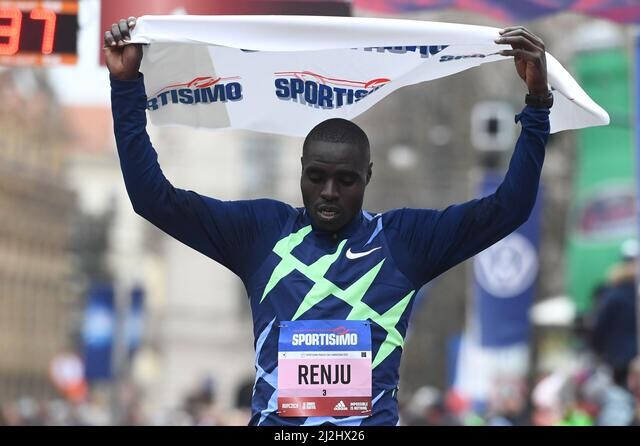
On May 8 the athlete provided another positive in-competition urine sample at the Lisbon Marathon.
Renju was notified regarding his provisional ban on May 13 and sent the testing agency medical documents from the Uasin Gishu County Hospital to explain his first adverse finding.
"The medical documents submitted contained no information that assisted the Athlete to explain how the metabolite of Methasterone had been detected in the First Sample," the AIU said.
Renju was initially given a six-year ban based on the application of Aggravating Circumstances, but that was reduced by a year after he responded with a signed admission.
His results since March 20 2022 have all been disqualified with any titles, awards, medals, points prizes and appearance money gained.
Renju joins a list of Kenyan long-distance runners to be either provisionally suspended or outright banned recently.
Boston Marathon winner Diana Kipyokei tested positive for triamcinolone and has also been charged with tampering for allegedly "obstructing or delaying the AIU's investigation through the provision of false information or documentation".
She won the women's race in America on October 11 last year but failed a test immediately after.
Meanwhile, Philemon Kacheran Lokedi has been banned for three years after testing positive for testoerone and its metabolites "with exogenous origin".
Felix Kipchumba Korir - the winner of the 2018 Nanjing Marathon - and Emmanuel Saina have also both received three-year bans after testing positive for norandrosterone.
(11/12/2022) ⚡AMPby Mike Rowbottom
After Much Anticipation, Orlando Announced as Host of the Olympic Marathon Trials
The race will take place on February 3, 2024.
USA Track & Field (USATF) has named a host city for the 2024 Olympic Marathon Trials, and it’s Orlando, Florida.
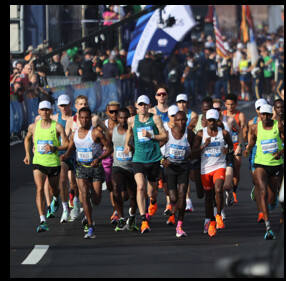
The Trials will take place on February 3, 2024, giving the local organizing committee on the ground only 15 months to prepare for the high-profile event.
The top three finishers in the men’s and women’s races will represent Team USA at the 2024 Olympic Games in Paris (provided they have met the ever-evolving standards set by World Athletics, the sport’s worldwide governing body, to run at the Games).
USATF was slow in naming a host city for the event. By contrast, when the Atlanta Track Club hosted the 2020 Olympic Trials, those organizers had 22 months to put together a race for about 700 men and women.
The fields for the race in Orlando will likely be smaller, however, because the qualifying standards to get into the Trials are tougher than they were to get into the 2020 race. In December 2021, USATF announced that women had to run a marathon faster than 2:37 in order to qualify. (For the 2020 Trials, that time was 2:45.) Or, they need to run a half marathon faster than 1:12.
Following Sunday’s NYC Marathon, only 60 women have run a marathon qualifying time. The window for half marathon qualifying opens on January 1, 2023. Men wanting to qualify for the 2024 Trials have to run 2:18 or faster (last time, the standard was 2:19) or 1:03 in the half marathon. As of mid-October, which was the last time USATF updated its list, 68 men had qualified for the Trials.
The California International Marathon, to be run this year on December 4, typically yields several Trials qualifiers.
Orlando is the first Florida city to be awarded the event.
The 2020 Olympic Marathon Trials were one of the last elite races held before the COVID pandemic shut down the world for more than a year and postponed the Olympics. At the 2021 Olympic marathon, held in Sapporo, Japan, American Molly Seidel won a bronze medal. The 2024 Olympic marathons in Paris will be held in August of that year.
(11/12/2022) ⚡AMPTommy Rivers Puzey ran the New York City Marathon, reminds us to celebrate life
Endurance athlete, iFit trainer, and Instagram poet Tommy Rivers Puzey joined the masses at the 2022 NYC Marathon on Sunday, once again reminding the world of the power of the spirit. “This one wrecked me, but it’s such a beautiful thing to feel my legs in absolute tatters,” he shared on social media post-race, and fans the world over celebrated.
Puzey, or ‘Rivs’ (as fans and friends call him), has for years been an inspiring force to the endurance world and regular runners alike. Once known for being an elite marathoner, ultrarunner and triathlete, Puzey told Sports Illustrated that this year’s marathon wasn’t about running fast. Rather, it was about celebrating his incredible recovery from a rare type of lung cancer. Puzey finished the marathon in 6:13:54, more than three hours faster than last year’s time–a time fans were astounded to see was possible from a man who had been close to dying.
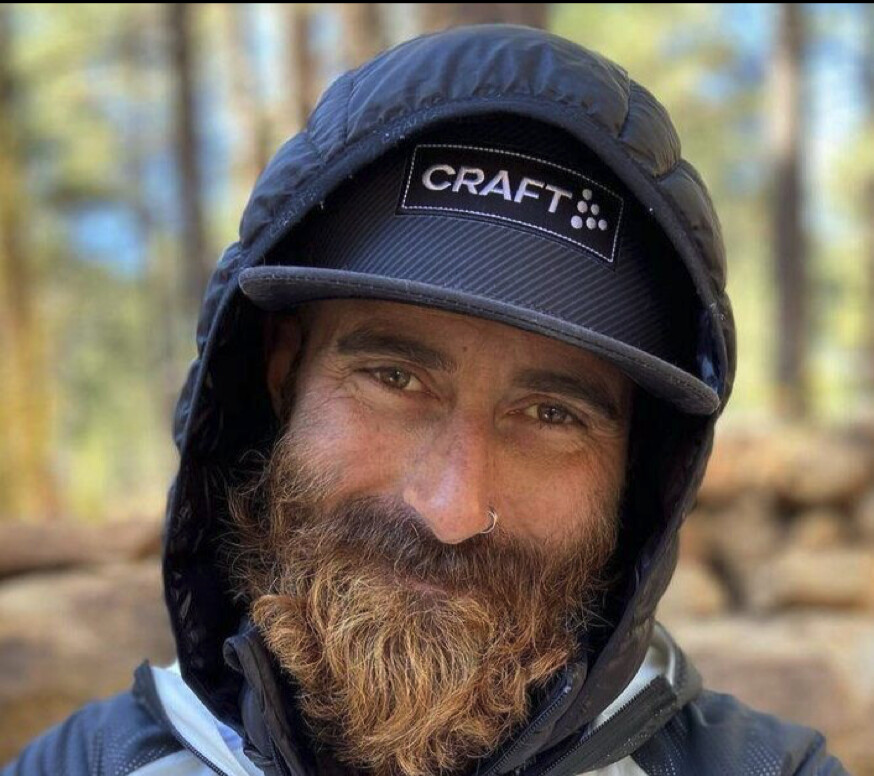
Heading into Sunday’s race, Puzey shared: “To everyone lining up tomorrow–embrace this moment. Don’t miss it. Don’t defer this joy. It’s all happening right now. There is cause to celebrate. Seize it while you can.” His words remind us all that forward is a pace, that gratitude matters, and that being present is the best part of a marathon.
“This could be as good as it will ever get. And that is good enough,” he added.
In July 2020, the running community was shocked to find out that Puzey had been diagnosed with primary pulmonary NK/T-cell lymphoma, a rare and aggressive cancer. For a time, Puzey’s social media, known for his eloquently worded posts that touched on everything from children to love to athleticism, went silent.
The global running community rallied in an astounding way at a strange and devastating time–COVID-19 was disrupting and impacting lives worldwide–contributing to fundraisers, sharing their #teamrivstuesday runs, and sending messages of encouragement as his family posted updates of Puzey’s progress.
Last year, fans were shocked to see Puzey’s post before the 2021 edition of the NYC Marathon. Less than a year after taking his first steps after treatment, the beloved athlete completed the New York City Marathon in 9:18:57.
The runner, easily recognizable with his beard, signature black skull-and-crossbones hat and ever-present kind smile, slowly made his way through the city’s five boroughs, high-fiving spectators as he went. Once an aspiring U.S. Olympic trials marathoner, he called completing the 2021 marathon “the single most difficult athletic achievement” he’d ever accomplished.
This year’s race was different. Puzey told SI that his focus now is on “building enough mass and endurance and building enough strength and fortitude so that, if and when I do get sick again, I have enough meat on my bones to give the doctors something to work with.” In the last year, followers of Puzey have watched as he gained strength, cheered on friends and teammates, and celebrated life with his family.
His ever-present gratitude is a reminder in almost everything Puzey shares. “It’s rare to find a more distilled, purified version of that beautiful humanity than in a place like NYC on the morning of the marathon. Look for it. You’ll find it. I promise,” he told his legions of followers on Instagram pre-race.
Puzey’s three daughters and wife Steph Catudal often feature in his social media posts, and Catudel accompanied him during last year’s marathon, a slow walk. This year Puzey ran solo–but with legions of fans on the race course spectating and following along.
“I was carried by the incredible humanity on display over every single mile of this brutal course,” Puzey wrote on Instagram. “I’m so grateful that we all get to do life here together at the same time.”
We feel the same way, Rivs.
(11/12/2022) ⚡AMPSharon Lokedi's New York City Marathon won a "major" victory for Under Armour
One thing Sharon Lokedi of Kenya and her sponsor, Under Armour, have in common is they both came into the 2022 New York City Marathon as underdogs. Lokedi, a standout collegiate athlete in the NCAA at the University of Kansas, was making her marathon debut in NYC, but since turning pro in 2019, she did not have a breakthrough performance on her resume. And every major marathon since Des Linden at the Boston Marathon with Brooks in 2018 has been won by an athlete wearing either Nike, Adidas or Asics.On Sunday, the two made history together. Lokedi became only the second woman to win NYC in her marathon debut, following in the footsteps of her Kenyan compatriot Tegla Loroupe, who won in 1994. Lokedi was the first athlete to win an Abbott World Marathon Major wearing a pair of Under Armour shoes.The shoes she wore were a World Athletics-approved prototype of the new iterations of the Flow Velociti Elite—a shoe designed for 10K and half marathon distances to help you move forward with speed and efficiency.Designed as a contender to rival the top competitors in the market, the Flow Velociti Elite is for runners who need a balance of flexibility and cushioning in their racing shoes. Every stride with the Velociti Elite is amplified by a full-length carbon-fibre plate sandwiched in a soft midsole foam, which compresses and springs back for added lift and energy return, delivering an explosive lift-off.
The UA Flow Velociti Elite comes in at 212 grams and has an 8 mm offset.When Lokedi signed with Under Armour after winning the 10,000m at the 2019 NCAA Championships, they promised her top-of-the-line footwear development and innovation, to set her up for success.
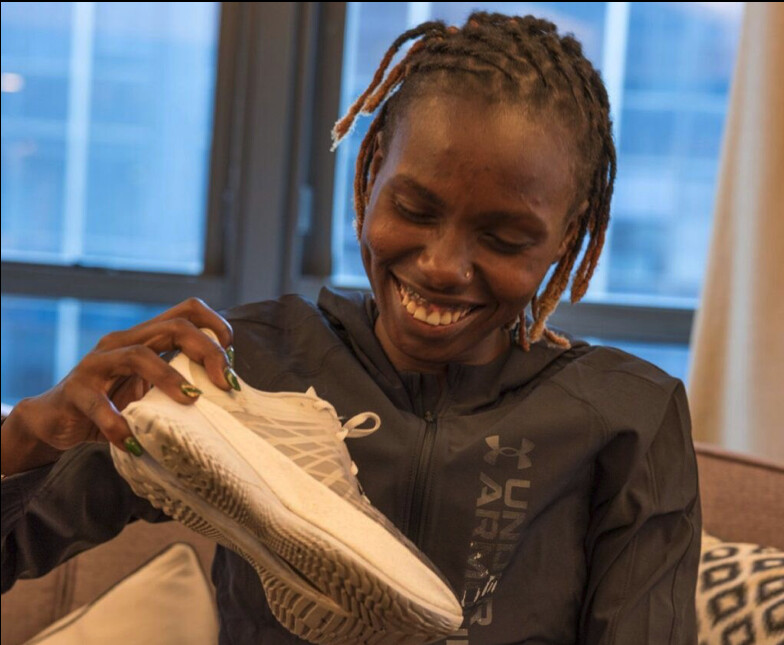
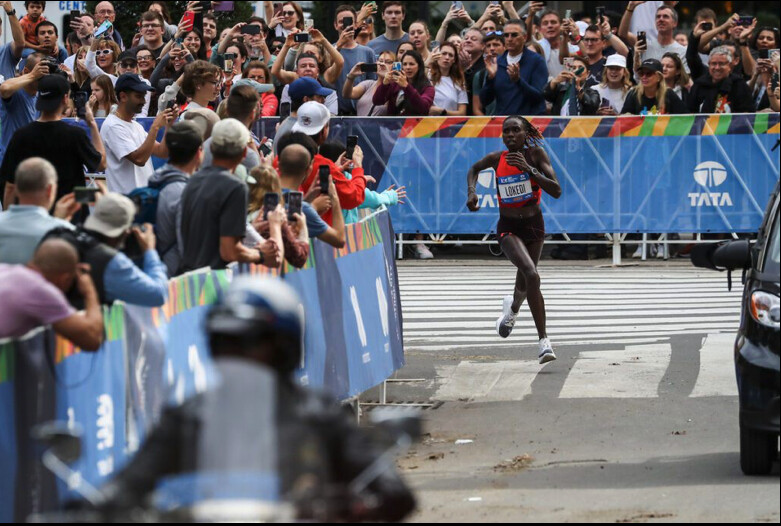
“It’s an honour to be the first Under Armour athlete to win a major marathon,” said Lokedi. “I am so grateful to be a part of a brand that builds and supports their athletes to be the best they can be.”
She currently trains in Flagstaff, Ariz., under the direction of coach Stephen Haas and Pat Casey with the UA Misson Run Dark Sky Distance Project.In 2020, when the group was founded, Haas and Casey worked with Under Armour to build a team of athletes who could train with Lokedi. Although she has resided in the U.S. since 2014, she holds Kenyan citizenship and competed at Kenyan Olympic Trials in 2021 (finishing seventh in the 10,000m).
The new variation of the UA Flow Velociti Elite will hit the Canadian market with limited availability on UA.com in the spring of 2023.
(11/12/2022) ⚡AMPby Running Magazine
Three tips to help you plan your next racing season
Races are fewer and farther between in the winter months, and it’s the perfect time to sit down and plan your next running season. There are so many options and types of races or running adventures to jump into, and it can be tempting to hop into every available race when you’re feeling fit. Here’s how you can set yourself up for a solid season, and maybe even a few PBs.
1.- Reflect and assess

Recognizing where you are at and looking at how your past season went is essential. Whether you felt like you ran the best season of your life or you faced some serious setbacks, accept where you are as the perfect place to begin. Making a list of things that went well for you (be as specific as possible) and things that challenged you.
Give yourself credit for small successes–did you master some technical trails but DNF due to fuelling issues? Both of those are important things to recognize to help you learn where your skills lie and what you need to work on for next season.

2.- Pick 1–2 key races (with a few shorter races as training)
We know, it’s really hard to limit yourself to only a couple of big events. Make sure there’s adequate time in between races for you to fit in a full training block, including recovery, a build, and a taper–and make sure to ask for support and advice from veterans of the sport (or a coach) if you are jumping into new-to-you distance or terrain.
I’ll aim to run a fast (for me) marathon in the spring, and have my peak ultra-distance race toward the end of summer, leaving lots of time for recovery, training, and smaller races.
Shorter races where you plan to jump in and run for fun, rather than race intensely, can be a great way to learn and expand your skill set. Have a healthy awareness of what your intentions are heading into the race and avoid getting caught up in the competition. Short, local events are a great way to participate in your community and can be used as fun training sessions.
3.- Factor in your off-season and build-up
Allow time in your season to rest, both mentally and physically, and then a period of base building. Despite most runners’ inclination to immediately get back to training hard, some time off will help you stay injury-free and motivated. Use the time (ideally two weeks minimum) to rest and recover.
If you feel like you have to stay moving, try something new–head to a local spin class, go skating or learn how to play pickleball. Yes, pickleball. You might find an activity you really enjoy, and when you start running again you’ll feel refreshed and ready to focus on your new goals.
(11/11/2022) ⚡AMPby Running Magazine
How people respond when you tell them you’re a runner
You know that moment when you meet someone and tell them you’re a runner. You’ve probably had to answer at least a few of these several times.
We love that others are curious about our sport. We know the sport so well but others are in awe when we explain just the basics. When you tell someone you’re a runner, here are some of the most common questions you have to answer.
1. What is the longest distance you’ve ever run?
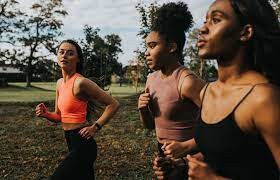
When someone asks this, you often have to pause and think. Maybe it’s just over 10K maybe it’s 30 or 40. Do stage races count? Whatever your answer is, it feels unimpressive until you see the look on their face.
2. I hate running.

This is a common one. You basically say something like “Once you get into it, it gets easier,” but you can tell you’re not converting this person any time soon so you drop it.
3. Don’t you find it boring?
That moment when someone calls yours hobby boring… You know what they mean, many find the sport boring. You get it. You just respond by telling them no you don’t find it boring and bite your tongue before adding that you obviously wouldn’t be keeping it up if you did.
4.Can you run 5K?
You say yes realizing that this is a given and something that you take for granted.
5. Can you run 10K?
Admit that it kind of feels good when the other person finds this impressive. To you, this is likely a distance you could do any day.
6. How many marathons have you done?
This is fun to talk about if you’ve done several marathons. If not, it can be frustrating explaining that you haven’t graduated to the marathon but that you’ve really chopped down your 5K and 10K PBs. You can tell they are unimpressed.
7. Do you run in winter?
When you say yes, they often look alarmed. And maybe a little bit worried. You assure them that it’s fine.
8. Wait, you get up at 5:00 a.m.?
Explaining this one never gets easy.
9. But you’re already skinny.
It’s hard to hide your sheer annoyance at this comment. Your running is about so much more than achieving a particular body size but somehow, people never seem to believe you.
10. I can only run ___.
This is what someone says before you convince them that it’s not true. To you, this is the opener to a motivational pep talk.
11. I couldn’t give up my favorite foods for health foods.
When you let them in on the little secret that you actually don’t eat just health food, their mind is blown. Job well done.
12. Do you do any sports though?
If you stared blankly at this person and then went on to explain (slightly snarky) that running is a sport, we’re OK with this response.
13. Want to train me for the race I entered?
Depending on how often you’ve been asked this question, you either love it or you hate it. On one hand, you’re pumped to have a new running friend. On the other, you’re worried that they will quit on you.
(11/11/2022) ⚡AMPby Sinead Mulhern
Valencia Marathon elite line-up has ambitious goals for 2022
The Valencia Marathon Trinidad Alfonso elite line-up for its 42nd edition on 4 December, when some of the best athletes on the international scene will take to the streets of Valencia Ciudad del Running with the aim of improving the course record (2:03:00) and seeking the best women’s debut in the history of the event.
Tamirat Tola (2:03:39), the reigning World Marathon champion, heads the men’s line-up alongside his Ethiopian compatriots Getaneh Molla (2:03:34) and Dawit Wolde (2:04:27) in a preliminary list with up to seven athletes with fastest times under 2:05 over the Marathon distance. Kenya, a world power in the marathon, will be well represented not only by Jonathan Korir (2:04:32), but also by a trio of important debutants over the distance: Alexander Mutiso, Philemon Kiplimo and Kelvin Kiptum. Attention will also be focused on another athlete who will be initiated at 42,195 metres: the Ethiopian Milkesa Menghesa, the winner of the Copenhagen Half Marathon.
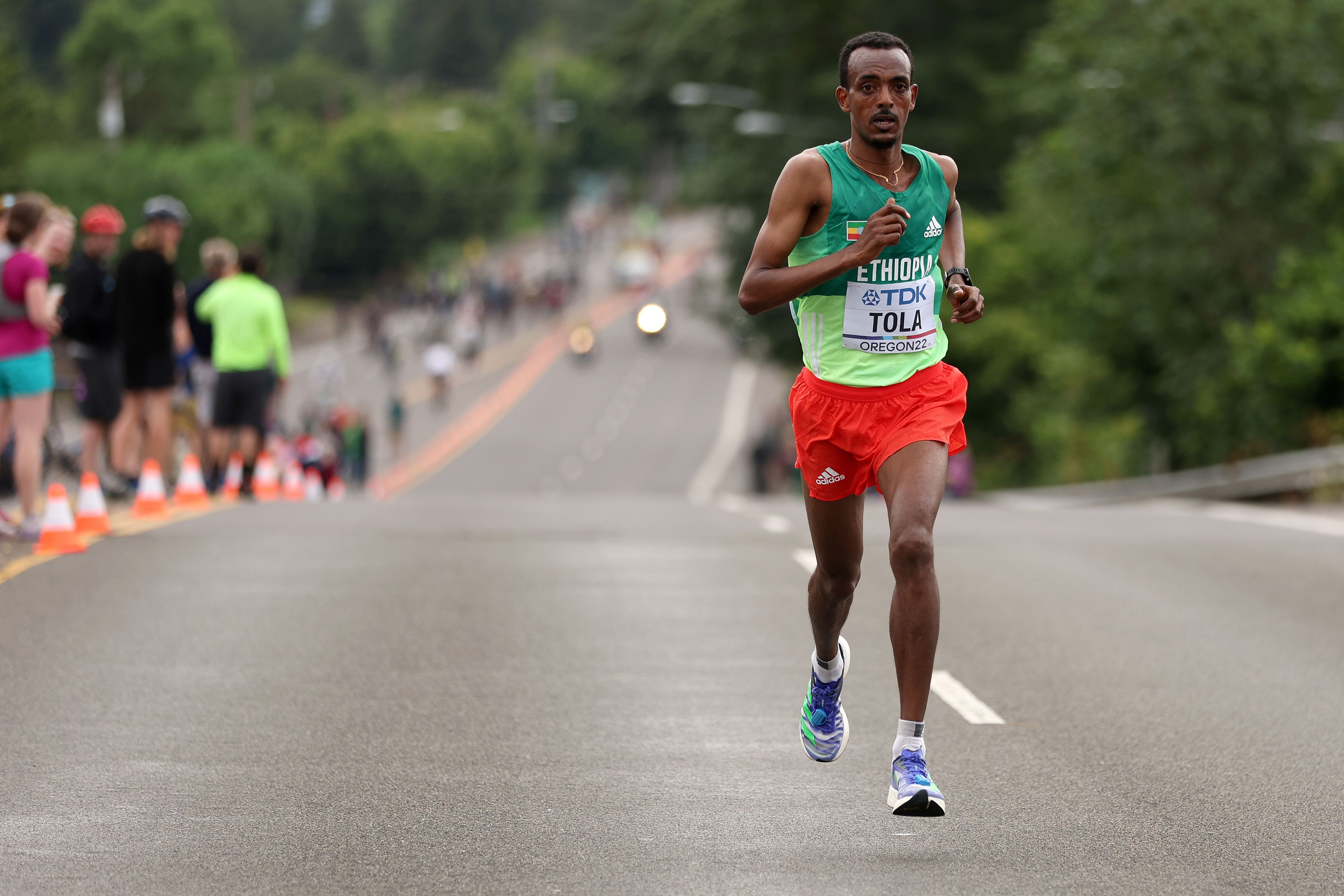
Valencia will also witness an interesting European battle between Germany’s Petros, Sweden’s Tsegayand the Swiss runner Wanders. Overall, the final line-up includes over 150 runners with accredited times under 2:20:00 for the marathon or 1:06:00 for the half marathon.
Gidey: the most eagerly awaited debut
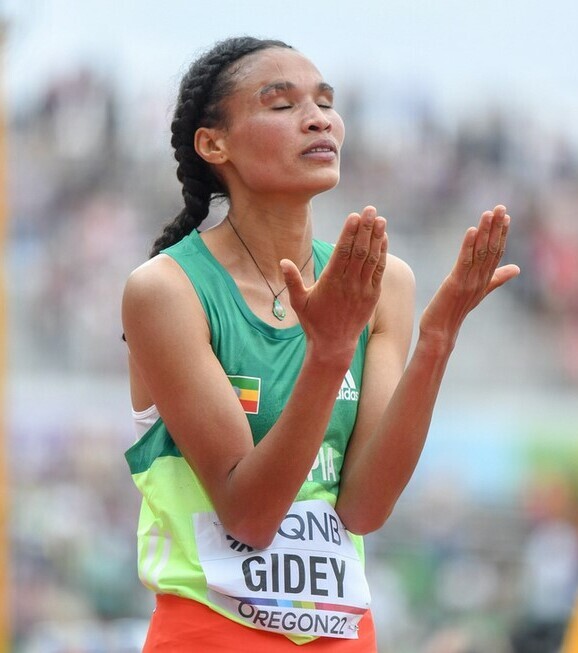
In the women’s category, the spotlight will be on the long-awaited debut of Ethiopia’s Letesenbet Gidey(currently world record holder in the 5000, 10000, 15K and half marathon, two of which were achieved in Valencia), who will make an eye-catching debut in a marathon on 4 December with the realistic ambition of beating the time of 2:17:23 (world record for a debutant), but also of getting as close as possible to the women’s world record of 2:14:04 (Brigid Kosgei, Chicago).
The Kenyan Sheila Chepkirui, also a debutant, could become the other female star of the Valencia Marathon in 2022, without forgetting some of the other runners included in this line-up with excellent times: Sutume Kebede (2:18:12) and Etagegne Woldu (2:20:16), who achieved second place last year in this marathon.
Overall, the final line-up contains over 80 athletes who have run sub 2h45:00 in the marathon or sub 1:17:30 in the half marathon.
(11/11/2022) ⚡AMPVALENCIA TRINIDAD ALFONSO
The Trinidad Alfonso EDP Valencia Marathon is held annually in the historic city of Valencia which, with its entirely flat circuit and perfect November temperature, averaging between 12-17 degrees, represents the ideal setting for hosting such a long-distance sporting challenge. This, coupled with the most incomparable of settings, makes the Valencia Marathon, Valencia, one of the most important events in...
more...Kenyan Sheila Chepkirui to make marathon debut at Valencia Marathon
The Commonwealth Games 10,000m bronze medalist Sheila Chepkirui has expressed her excitement about making her full marathon debut at the Valencia Marathon on December 4.
Chepkirui has had a successful career on track and the half marathon and thinks it was time for her to try the 42km distance.
“I am happy to be making my debut in Valencia…I just think it’s time for me to try this new journey. I have had some great moments on the track and I am hoping I will be able to register the same in the marathon,” Chepkirui said, adding that she is praying for good health on the race day.

Chepkirui said she looks up to 2018 London Marathon champion Vivian Cheruiyot because of her hard work and remarkable races both on track and roads. She said her body is responding well to training so far and her goal is to finish the race.
“After the Commonwealth Games, I had a slight injury but it got better. The training has been going on well and I am happy my body is responding well,” she said.

Meanwhile, the race has attracted 11 elite Kenyan athletes with Jonathan Korir being the fastest among his male compatriots with a PB of 2:04:32 posted last year in Amsterdam, where he placed fourth.
Korir participated in the Commonwealth Games in Birmingham in August and placed fifth in the marathon in 2:14:06. He was a distance 12th in Tokyo Marathon in 2:08:04 back in March.
The 2017 World marathon champion Geoffrey Kirui will also be in the mix. Kirui has a personal best time of 2:06:27. He placed fourth in 2:19:28 at this year’s Juarez International Marathon.
Others in the field are 2020 Santa Pola Half Marathon champion Alexander Mutiso, 2021 Bahrain Night Half Marathon champion Philemon Kiplimo and Kelvin Kiptum. Mutiso, Kiplimo and Kiptum will be making their debut in the 42km event.
Bethwell Kipkemboi will be returning to Valencia with the hope of improving on his 17th-place finish during last year’s edition. He has a personal best time of 2:07:41. Others in the race will be Ronald Korir (PB 2:07:29) and Simon Kipkosgei (PB 2:07:07).
This will be Korir’s third race of the season after winning the BP Castellón Marathon in February and a fifth-place finish at the Volkswagen Prague Marathon.
Other Kenyan women in the field will be Monica Ngige who has a PB of 2:22:13 posted in Boston in April and Fancy Chemutai (PB 2:24:27).
(11/11/2022) ⚡AMPby Abigael Wuafula
VALENCIA TRINIDAD ALFONSO
The Trinidad Alfonso EDP Valencia Marathon is held annually in the historic city of Valencia which, with its entirely flat circuit and perfect November temperature, averaging between 12-17 degrees, represents the ideal setting for hosting such a long-distance sporting challenge. This, coupled with the most incomparable of settings, makes the Valencia Marathon, Valencia, one of the most important events in...
more...Five things to remember before jumping up to the marathon
Naturally, runners who have finished their first half-marathon are eager for that what’s next. Whether you want to run a marathon or not, the half-marathon can give you a brief idea of what to expect and what to work on before you move up in distance.
Although moving up from a half-marathon to a marathon makes sense, that doesn’t mean it’ll be easy. Here are five things to remember when moving up to the marathon.

1.- Find the right race
Find a destination that means a lot to you or that will help motivate you to train. Don’t just sign up for the next marathon on the race calendar. There are several things you should take into account before signing up, such as race date, field size, location and course elevation. If you are trying to chase a Boston qualifier or fast time you may want to lean toward a marathon with a flatter course, but for some, a marathon with rolling hills can help the mental miles go by faster.
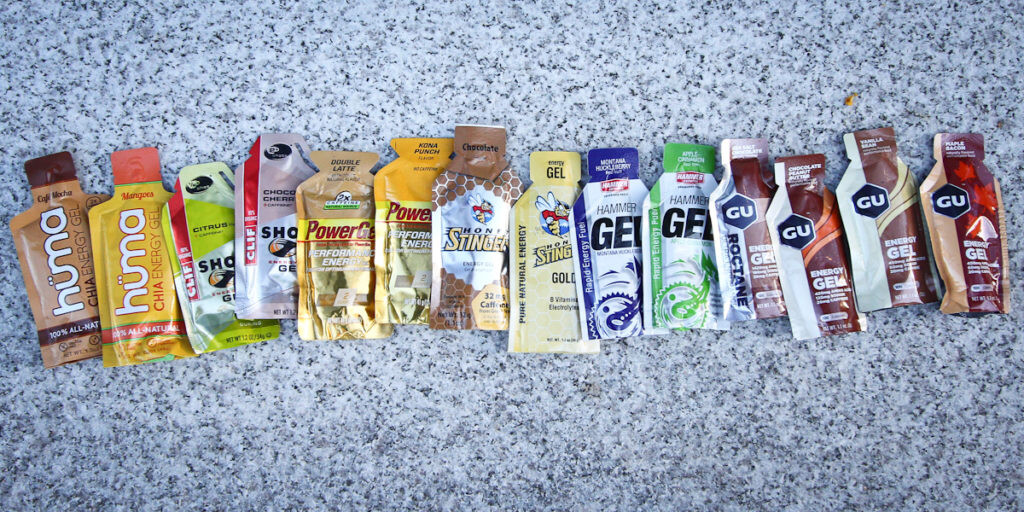
2.- Plan. Plan. Plan
Planning is essential, and maybe the most important thing when moving up in distance. You’ll need enough time to find or develop a training plan and build a base before you dive head first into training. Increasing your mileage will take time, and there is nothing more discouraging than trying to quickly increase your mileage because you are in over your head. Plan your training in advance or month-by-month to set yourself up for success. Most runners will begin training 16 to 20 weeks out from their marathon, whereas in the half, 10 to 12 weeks is standard.
If you are going straight from a half to the marathon, be sure to space out the dates by at least four to six weeks to allow your body to recover and increase mileage. The last thing you want to do is run your first marathon on tired legs.
3.- Prioritize distance
If it is your first marathon, you should focus on increasing your distance instead of your speed. Prioritize the mileage, and let the speed come naturally.
Don’t feel discouraged if it feels like you are losing speed–it is a natural occurrence when training for the marathon. Running longer distances increases the stress on your muscles and joints, so don’t be too concerned if your 5K to 10K paces slow down as a result. It’s temporary. Take your time on the long runs and do what you need to to finish strong, rather than pushing yourself to potential injury.
4.- Practice fueling
Some runners can get through a half-marathon without energy gels or bars, but for a marathon, you need to find a fueling strategy that will work for you. After 75 minutes of exercise, the body’s glycogen stores are depleted and you need to take on carbohydrates.
There are tons of great products out there for marathon runners, but you’ll want to experiment with them during training to find the ones that work for you. Practice and tweak your fueling and hydration techniques early in your training to ensure you have enough time to settle on the right one. Once you find a fueling strategy, it will help you feel more confident and comfortable come race day.
5.- Be modest with your expectations
Although preparation is important for your first marathon, the race itself will provide you with the most wisdom. Anything can and will happen during your first marathon, and most of the time it’s beyond your control. Buckle up and enjoy the ride.
(11/11/2022) ⚡AMPby Marley Dickinson
Here’s how curiosity will make you a better runner
Listen to enough podcast interviews with elite athletes and you’ll start to notice a commonality–many cite the importance of curiosity. Whether it’s wondering how far or fast they can go, or how deep they can dig, masters of the sport are curious. Bringing an element of curiosity into your own running can help you learn, overcome fear, and have more fun.
“I’ve heard athlete after athlete talk about being driven by a curiosity to see ‘what if?’,” sports psychologist and ultrarunner Addie Bracy shares in her book Mental Training for Ultrarunning.
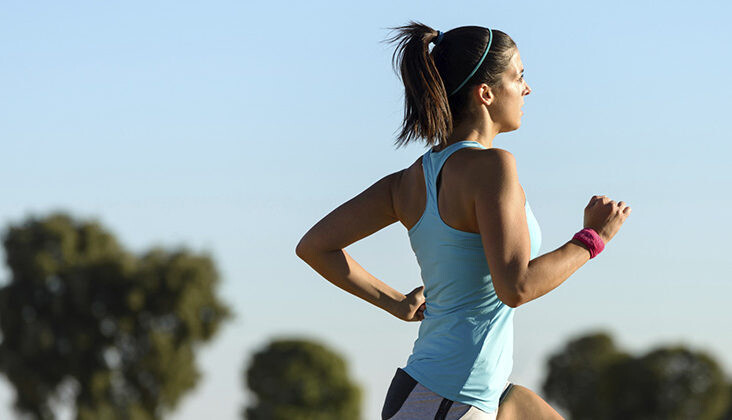
Bracy adds: “Not only does approaching a hard task with curiosity help to create a healthy relationship with vulnerability (something that is required for doing hard things), the performance-enhancing qualities of this mental skill go even further.”
Open-mindedness

Bracy says that an open mind is one that wants to learn, gain new information, and even challenge currently-held beliefs. Constant growth is crucial for success in any domain, from running trails, dominating the track, or being a CEO at a top-performing business.
Even if you feel like you’re skilled at what you do, choosing to operate from curiosity is an option.”When you do, creativity is expanded and you learn more ways of doing things,” says Bracy.
Stepping past fear
Being curious means overcoming fear and apprehension to take risks. This can be intimidating, but Bracy says that’s normal. “You can override and rewire those reactions,” she explains. “One of the most powerful benefits of an open and curious mind is the freedom to respond to the things you encounter rather than making fear-driven assumptions about the challenges you’ll face,” Bracy adds.
This takes practice, but navigating fear and reframing things with a curious mind is a valuable skill. Instead of assuming you know what will happen, taking a “beginner’s mind” approach and staying open to any possibility is a great jumping-off point.
More joy (who doesn’t want more of that?!)
Children are often perfect examples of curiosity. Eager to learn about the world and with less-rigid worldviews than adults, they ask constant questions and are willing to test boundaries–and have fun doing it. Bracy says that neurological studies suggest curiosity makes learning more pleasurable and rewarding.
While we might not always categorize our running training as learning, in essence, that’s what it is, for both our bodies and minds. Approaching each training or running experience with curiosity can help us enjoy the process while maximizing the knowledge we’re able to take away and apply to our next challenge.
(11/10/2022) ⚡AMPby Keeley Milne
Two-time European 800m champion Selina Rutz-Büche retires from running, citing long COVID
Two-time European 800m champion and Swiss 800m record holder Selina Rutz-Büchel announced her retirement on social media Wednesday, citing long COVID.
Rutz-Büchel is a two-time European indoor champion in the 800m, winning titles in 2015 and 2017. During her 12-year career, she held a personal best of 1:57.95 for the two-lap event, which she set at the Paris Diamond League in 2015. She represented Switzerland at the 2016 Olympic Games and the 2017 and 2019 World Athletics Championships.

According to Swiss Athletics, she was infected with the the coronavirus in April 2021, but since then has not been able to return to her training routine. Initially, the symptoms were severe, and in the last year and a half, she has not been able to make the progress she had hoped.
In April 2022, Rutz-Büchel, 31, gave birth to her daughter, but her state of health post-coronavirus “overtaxed her body and did not allow her to train,” she explained to Swiss Athletics.
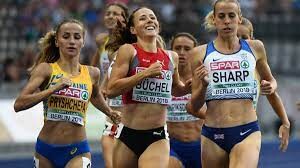
“Due to ongoing health issues (long Covid), I have decided to retire from elite sports,” Rutz-Büchel wrote on her Instagram. “I am grateful to look back on a wonderful time when I was allowed to put sport at the center of my life. A heartfelt thank you to all the lovely people who accompanied and supported me on my way.”
Rutz-Büchel is not the only professional runner who has shared their struggles with the virus. Earlier this year, Australian Olympic 1,500m finalist Stewart McSweyn was forced to withdraw from the World Indoor Championships in Belgrade, Serbia, after a long bout with COVID-19. It took McSweyn, 27, several months to get over the respiratory effects of the virus. He returned to form at July’s World Athletics Championships in Eugene, Ore., where he placed ninth in the 1,500m final.
Canadian record holder and Olympic 200m champion Andre De Grasse also struggled to make a comeback post-virus. He came down with the illness before the 2022 Canadian Track and Field Championships in June and was not able to fully regain his fitness in time for the World Athletics Championships in July; he dropped out of the 200m, citing shortness of breath. However, De Grasse came back to run the anchor leg for the 4x100m relay team, helping Canada earn their first world championship gold in the event since 1997.
One major question runners ask post-Covid is how long it will take to get back their fitness and feel normal again. Dr. Mark Wurfel, a pulmonologist at the University of Washington Chest Clinic, says the answer is “frustratingly vague”: “It’s important to recognize up front that it will take some time for your body to recover. Your time back to fitness will depend on how long you were out of training, the severity of your illness, and what lingering symptoms you have.”
Rutz-Büchel wrote that she hopes to stay in the sport as a coach and trainer, but is looking forward to spending more time with her family.
(11/10/2022) ⚡AMPby Marley Dickinson
2022 B.A.A. Half Marathon Returns to Franklin Park on Sunday
The 2022 B.A.A. Half Marathon, presented by Dana-Farber Cancer Institute and the Jimmy Fund, will be held this Sunday, November 13, starting and finishing within Franklin Park. The event returns to an in-person format for the first time since 2019 and features a star-studded professional field leading the charge for 9,000 entrants from the Greater Boston area and beyond.
To support your coverage of this year’s event, please find event storylines and race information below. Media interested in covering the 2022 B.A.A. Half Marathon can submit credential requests here or email media@baa.org for more information. Credential pick-up will occur at the Media Tent within White Stadium on Sunday, beginning at 6:45 a.m. Additional details will be sent in the coming days to those who’ve requested credentials.
The B.A.A. Half Marathon will start at 8:00 a.m. this Sunday, November 13, from Franklin Park. The 13.1-mile course runs along the picturesque Emerald Necklace Park System, past area landmarks such as the Arnold Arboretum and Franklin Park Zoo, before finishing at White Stadium in Franklin Park. A detailed course map can be found here.
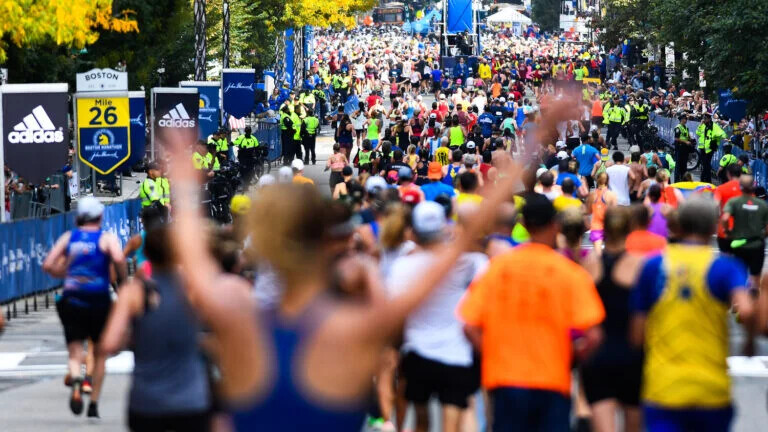
- Dana-Farber Cancer Institute and the Jimmy Fund has partnered with the B.A.A. Half Marathon since 2003 as the race’s presenting sponsor and exclusive charity team. Through this relationship, Dana-Farber runners have collectively raised more than $8 million to support groundbreaking cancer research, and enabled Dana-Farber scientists and clinicians to positively impact the lives of cancer patients around the world. A team of 400 athletes will be part of the Dana-Farber Cancer Institute and Jimmy Fund team for this year’s event, having already raised nearly $350,000 to defy cancer.
- At the front of the field, Olympic and Paralympic medalists, Boston Marathon champions, and top international contenders will square off in pursuit of finishing atop the podium. Among the notable professional athletes entered are Olympic marathon bronze medalist and former Boston resident Molly Seidel, two-time Boston Marathon champions Lelisa Desisa and Daniel Romanchuk, and USA Olympian and former American half marathon record holder Molly Huddle.
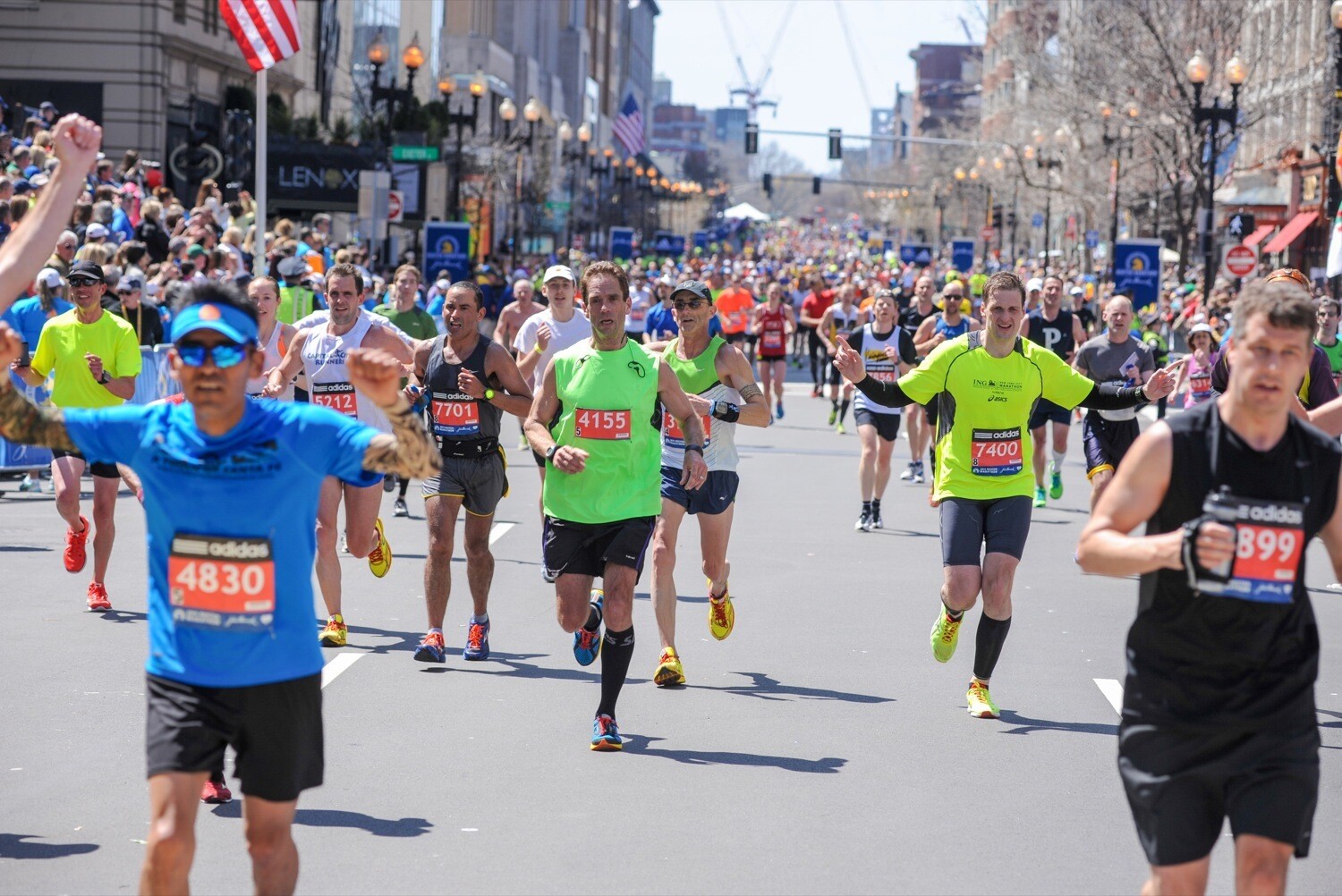
Seven women who’ve run under 1:08:30 and nine men with lifetime bests under 1:01:30 will compete on the roads of Boston. Desisa is also a two-time B.A.A. Half Marathon champion and the event record holder (1:00:34). Romanchuk aims to become the first athlete in history to podium at each of the B.A.A.’s four signature events (B.A.A. 5K, B.A.A. 10K, B.A.A. Half Marathon, and Boston Marathon). On Sunday he finished second at the TCS New York City Marathon in 1:27:38.
- For the first time, the B.A.A. Half Marathon will feature a Para Athletics Division showcasing athletes with lower-limb, upper-limb, and visual impairments. Competitors include Jacky Hunt-Broersma (T64, lower-limb impairment), who finished a Guinness World Record 104 marathons in 104 days this year; Marko Cheseto Lemtukei (T62, lower-limb impairment), who won the Para Athletics Division at the 2021 and 2022 Boston Marathons (timing 2:37:01 in April) and Brian Reynolds (T62, lower-limb impairment), who has run a world best 1:17 for the half marathon. The B.A.A. Half Marathon course is World Para Athletics record eligible, signaling that national or world records may be in jeopardy of falling on race day for wheelchair and Para athletes.
- Among the field of nearly 9,000 participants are 257 athletes also entered in April’s 127th Boston Marathon. Participants in this year’s B.A.A. Half Marathon are from 46 U.S. states (plus Washington, DC) and 95 countries.
- 1,418 participants are aiming to complete the 2022 B.A.A. Distance Medley, a three-race series which includes April’s B.A.A. 5K, June’s B.A.A. 10K, and November’s B.A.A. Half Marathon. The B.A.A. Distance Medley series provides athletes a year-long way to experience training and racing at three different distances, with the aim of improving fitness throughout the calendar year.
- The B.A.A. Half Marathon is a family-friendly event for athletes and spectators of all ages. Free youth events will be offered on race morning within Franklin Park, including races and medals for all. Youth track races will begin on the White Stadium track at 8:20 a.m. Registration will open at 7:00 a.m. on Sunday.
- Spectators and runners are encouraged to download the B.A.A. Racing App powered by TCS for live race day tracking, leaderboards, results, custom selfie stations, course maps, information, and more. The B.A.A. Racing App is available for free within Apple iOS and Android.
- On display for viewing at the 2022 B.A.A. Half Marathon will be an Indigenous Peoples' Day Banner, created by Boston Art Institute alum Yatika Fields (Osage/Cherokee/Creek) which honors the Boston Marathon's Indigenous runners, past and present. Following the Awards Ceremony on race day, the banner will be blessed as it is sent from Boston to its home with Wings of America in Albuquerque, New Mexico, where it will inspire young Native runners.
The blessing will be given by Hiawatha Brown (Narragansett), the longest serving Tribal Councilman, a Veteran of the United States Navy, and the nephew of two-time Boston Marathon Champion, Ellison 'Tarzan' Brown. Words will be offered from Robert Peters, a Mashpee Wampanoag artist who contributed his talent to the mural, on behalf of himself, Yatika Fields, and Wings of America Executive Director, Dustin Martin (Dine). Also in attendance will be Jordan Marie Daniel (Kul Wicasa Lakota) who is participating in the 2022 B.A.A. Half Marathon and is featured on the banner.
- A prize purse of $96,200 is available for professional athletes in the open, wheelchair, masters, and Para Athletics Divisions.
- Course records for the B.A.A. Half Marathon are:
Open Men: 1:00:34, Lelisa Desisa (Ethiopia), 2013 (Lelisa Desisa is competing in this year’s race, aiming to win his third B.A.A. Half Marathon title)
Open Women: 1:07:40, Brillian Kipkoech (Kenya), 2019
Wheelchair Men: 53:07, Tony Nogueira (New Jersey), 2008 and 2004
Wheelchair Women: 1:00:43, Katrina Gerhard (Massachusetts), 2019.
(11/10/2022) ⚡AMPB.A.A. Half Marathon
Dana-Farber and the Jimmy Fund have partnered with the B.A.A. in the Half Marathon for 13 years as the race’s presenting sponsor. Through this relationship, team members have collectively raised more than $5 million to support groundbreaking cancer research, and enabled Dana-Farber scientists and clinicians to positively impact the lives of cancer patients around the world. Dana-Farber runners often participate...
more...Korir says hot conditions slowed him at New York Marathon
lbert Korir has cited unfavorable weather conditions as the reason behind his 'poor' display at the 2022 New York Marathon.
Korir, the defending champion heading into Sunday's race, finished a distant seventh in 2:13:27 in a race won by compatriot Evans Chebet — the Boston Marathon champion — in 2:08:41.
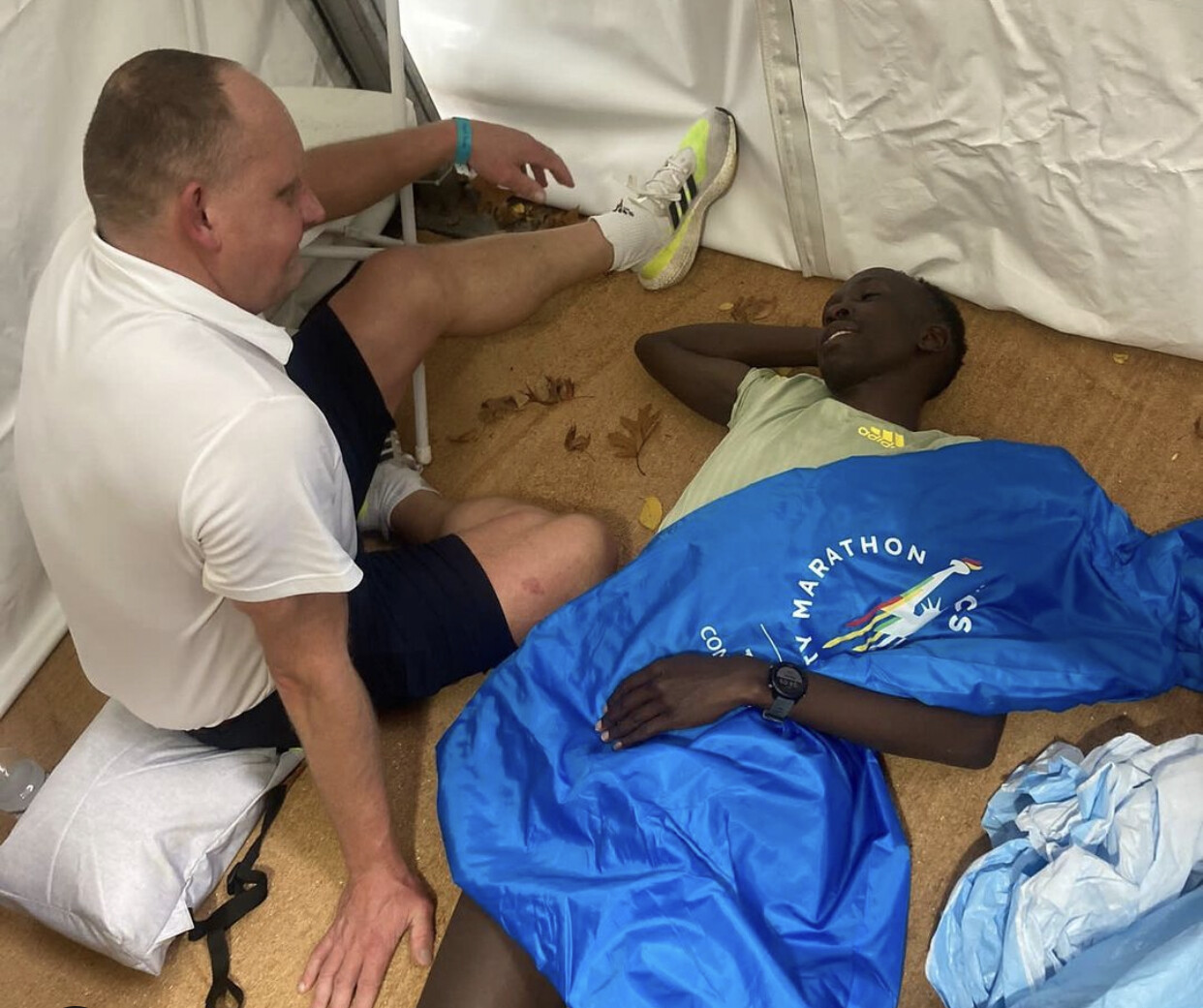
In a post on his Instagram page, Korir said he was in great shape heading to New York, having trained adequately for the race but could not master the strength on d-day.
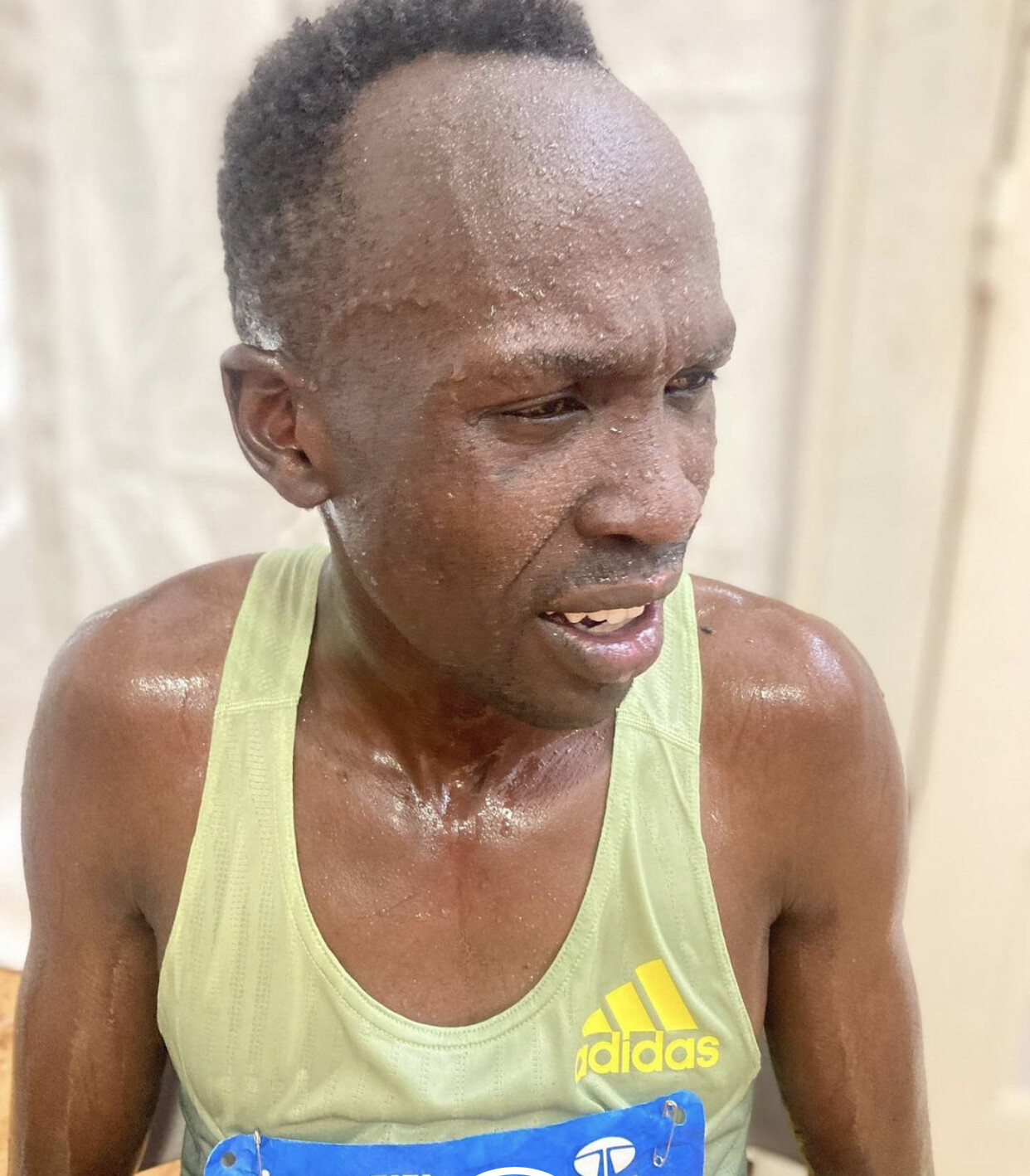
“I had gone there win one target — to win the race again. I felt great and I had prepared well. During the race, my legs felt great, my body was good and fit,” Korir wrote.
However, things took a wrong turn at the 31.2km mark when he started feeling the heat.
“At the Willis Avenue Bridge, I felt the heat of the day. The power in my body slowly disappeared, nevertheless the mental power remained unchanged,” the post read.
Korir said he struggled all the way to the finish line at the same time wishing the temperatures would have been lower.
“I battled through to the finish. I wished the temperatures would change because I am way better in colder circumstances,” Korir said.
However, he said he has since recovered from the rigours and will take a deserved rest before embarking on his next assignement.
(11/10/2022) ⚡AMP
by Abigael Wuafula
TCS New York City Marathon
The first New York City Marathon, organized in 1970 by Fred Lebow and Vince Chiappetta, was held entirely in Central Park. Of 127 entrants, only 55 men finished; the sole female entrant dropped out due to illness. Winners were given inexpensive wristwatches and recycled baseball and bowling trophies. The entry fee was $1 and the total event budget...
more...Orlando will host US Olympic Marathon Trials for Paris 2024
Orlando will host the United States Olympic Marathon Trials for Paris 2024, USA Track & Field (USATF) and the United States Olympic and Paralympic Committee (USOPC) have announced.
The top three men and women at the event, due to be held on February 3 in 2024, will be chosen to represent the US in the French capital, providing they have achieved the necessary qualifying criteria.
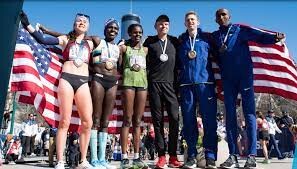
Chattanooga in Tennessee was the only other city known to be interested in bidding for the event.
"We look forward to a fantastic marathon on the streets of Orlando in selecting USATF’s first six 2024 Olympians," said USATF chief executive Max Siegel.

"The competition is the culmination of months of preparation on their journeys to gold and we’re excited to see great competition and fast times."
Orlando, home to more than a dozen theme parks, including Walt Disney World, is the first Florida city to be awarded the event.
This will mark the 15th time the men's marathon trials have been held, with the first at Alamosa in Colorado for Mexico 1968.
It will be the 11th time the women's marathon team has been selected in a Trials event.
The inaugural women's marathon trials were held at Olympia in Washington to select the team for Los Angeles 1984.
The winner of those trials, Joan Benoit, went on to be crowned the first women's Olympic marathon champion.
The trials for the last Olympics in Tokyo were held in February 2020, less than a month before the Games were postponed by a year because of the coronavirus pandemic.
The men’s race was won by Galen Rapp of the US and the women’s by compatriot Aliphine Tuliamuk.
The race is set to be organised by Track Shack, a race management company led by Jon and Betsy Hughes that stages a number of events in the Orlando area.
The Olympic marathons at Paris 2024 are scheduled to be held on August 10 and 11.
"On behalf of the U.S. Olympic & Paralympic Committee, I offer congratulations to the city of Orlando for being selected to host the 2024 U.S. Olympic Trials - Marathon and look forward to celebrating this great event on the road to Paris 2024 with the athletes, fans, and our partners at USATF," said USOPC chief executive Sarah Hirshland.
"As the pathway for making Team USA, the US Olympic Team Trials stand out as remarkable sporting events, and we have no doubt Orlando will welcome our elite runners and put on a world-class event."
(11/09/2022) ⚡AMP
by Duncan Mackay
Paris 2024 Olympic Games
For this historic event, the City of Light is thinking big! Visitors will be able to watch events at top sporting venues in Paris and the Paris region, as well as at emblematic monuments in the capital visited by several millions of tourists each year. The promise of exceptional moments to experience in an exceptional setting! A great way to...
more...Ramp up speed through any weather with these fartlek sessions
Unpredictable weather through fall and winter can make speed sessions a challenge for even the most experienced athlete–if you train outside, slippery leaves, snow, and ice can make those hard sessions almost impossible, and sometimes dangerous. Fartlek (a Swedish term that translates to “speed play”) sessions are perfect when the weather derails your fast training. Here’s why, and how to add them to your repertoire.
Fartlek training is a traditionally unstructured form of speedwork, with varied paces from sprints to very easy running. Because fartlek training can be done anywhere, it’s ideal when you want to fit in speedwork but know you can’t run by specific paces due to unpredictable terrain. Try one of these simple sessions per week, and adjust accordingly–if you want more of a challenge, add repeats or reduce the recovery time between fast sections.
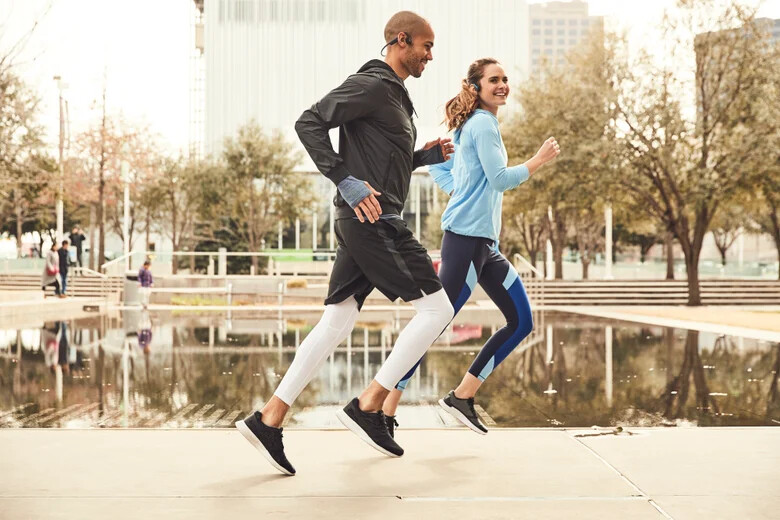
The time-based fartlek
Your watch is your guide for this one, and you can run it on any terrain. Don’t worry about pace, focus on effort.
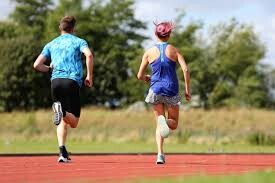
Warm up with 10–15 minutes easy running.
Run faster segments of one, two, or three minutes, with equal amounts of easy running for recovery. Start with three to five faster sections, and add one or two per week as you feel stronger.
Finish off your run with 10 minutes easy running.
The hill-based fartlek
Adding hills to your fartlek session will give you an added strength benefit. If you don’t have a hill nearby that is runnable, think outside the box–overpasses, inclines in parking garages, and stairs that you can run safely are all perfect substitutes.
Warm up with 10–15 minutes easy running.
Run up your hill of choice (smaller hills are great for this) gradually increasing turnover and speed.
Recover by running easily back down. Start with two or three incline repeats, increasing up to eight (or more) as you gain strength.
Cool down with 10 minutes easy running.
The goal-based fartlek
This session uses landmarks to split up your speedy segments, and the workout will fly by as you focus on your surroundings and your effort.
Warm up with 10–15 minutes easy running.
Pick an object in the distance: a telephone pole, tree, or building works.
Run faster until you reach that landmark, then pick another object ahead to run easily toward. Start with three to five fartlek segments, adding one or two per week or as you want more challenge.
Finish off your run with 10 minutes easy running.
These workouts are great at helping you learn to run by feel instead of having to glance at your watch constantly, and getting outdoors to run, no matter the weather, has brain-boosting benefits. Remember to follow a speed session or harder workout with an easy running or recovery day.
(11/09/2022) ⚡AMPby Running Magazine
Will Stretching Help To Improve Your Running Performance?
It may surprise you to hear a physio say that whether or not you need to stretch is up to the individual. Some people seem to benefit a lot from stretching, while others seem to be able to run injury-free with no stretching at all.
There are numerous scientific studies that both prove and dispute the benefits of stretching. Our practical experience working at The Body Mechanic treating runners and cyclists every day, is that the majority of people will benefit from using some body management strategies, including stretching.
In general, runners tend to be tighter or stiffer than the general untrained population. This is because they load their muscles and tendons a lot more than sedentary people, and they move their joints repetitively through a relatively small range of movement. This repetitive loading tends to make muscles stronger, but also tighter.

If you are one of these typically tight runners, and you are currently running to a volume and standard that you are happy with, AND you are not getting any injuries – then you should keep doing whatever it is you are doing already. If your normal routine involves regular stretching, then keep it up. If your normal routine involves throwing on your shoes and heading out the door with no time set aside for stretching, then you probably don’t need to be stretching. In fact, for these rare individuals, starting to stretch could potentially increase the chance of getting injured.
If we make a comparison with someone who is at the other end of the flexibility spectrum, it will help you to understand more thoroughly how our bodies work. I have worked with yoga instructors who can put both feet behind their ears, or bend forward to touch their toes and put their head on their knees in the process. These people have bucket-loads of flexibility, yet some of them can’t run more than 2km without sustaining an injury. This is because they don’t have the appropriate level of strength and stability required to control their joints when running.

Like most things in life, there is a happy medium, which most people will benefit from. If you can gradually steer your body towards being in this “happy medium zone” then you should benefit from sustaining less injuries. Less injuries means more consistent training which means more enjoyable running and improved performance, so it is definitely a good thing to strive for.
Being the worlds most flexible or least flexible person is unlikely to help your running. Having hips, knees, ankles and a lower back with a good amount of flexibility, and an appropriate amount of strength and stability to match, will make a huge difference to your chances of running without injury.
Modern lifestyles, where the majority of the day is spent sitting in a chair (working, commuting, relaxing and socialising) is known to create some muscle imbalance in our bodies. This is even true for runners. Think about the number of hours involved. Our bodies are amazingly good at adapting to the stress that we place on them. If you run a lot (1 – 2 hours each day), but you sit at work for 6 – 8 hours each day, then unfortunately your body is going to adapt more to sitting than it is to running. The muscle imbalances created by sitting can contribute towards the likelihood of developing running injuries.
According to evolutionary scientists, our bodies are still primarily designed to be hunter-gatherers. For 2 million years we have evolved as hunter-gatherers to spend our days migrating (walking), foraging for food, hunting animals (running) or lying down to recover. Any time spent socialising was generally spent in a squatting position. This full range deep squatting position promotes a good range of movement in the lower back, hips, knees and ankles.
Look at any pre-school child here in Australia. If they are playing with their toys on the ground, they will squat in a comfortable and perfectly balanced manner. Yet ask a 10-year-old to squat and the majority of them will already find it uncomfortable having sat in a chair at school for too many hours a week.
So back to the initial question:
Will Stretching Help To Improve Your Running Performance?
It depends on the individual. If you suffer from injuries or niggles regularly then yes it could help. If you have reached a plateau in your performance and can’t get faster then yes it could also help. If you are completely satisfied with where you are at, then you probably don’t need to be doing anything different.
So What Stretches Should You Be Doing?
Again, this will depend on the individual. In another article coming very soon I will outline a number of stretches that we regularly prescribe at The Body Mechanic to help our clients keep their bodies in good running shape.
For now though, watch the video where I will demonstrate the “Hunter-Gatherer” Squat – if you haven’t manoeuvred yourself into this position for a long time, then be patient, just like training it could take many months for your body to gradually adapt to and fully benefit from the changes. Ultimately though it will help to improve the mobility in your lower back, hips, knees and ankles, which will help with your chance of becoming an injury-free runner.
(11/09/2022) ⚡AMPby The Body Mechanic
Shalane Flanagan's peanut sauce is the perfect topping for pretty much everything
American two-time Olympic marathoner and coach Shalane Flanagan just ran the 2022 New York City Marathon, and we’re guessing she doubled down on a batch of her own peanut sauce post-race.
This recipe, from Flanagan and former teammate Elyse Kopecki’s cookbook Run Fast Eat Slow, is so delicious that I always make at least triple batch (you can freeze leftovers). We use it to top rice and veggies, as a dressing for a big salad, or to dip carrots and broccoli in. Some household members have even, ahem, eaten spoonfuls of it.
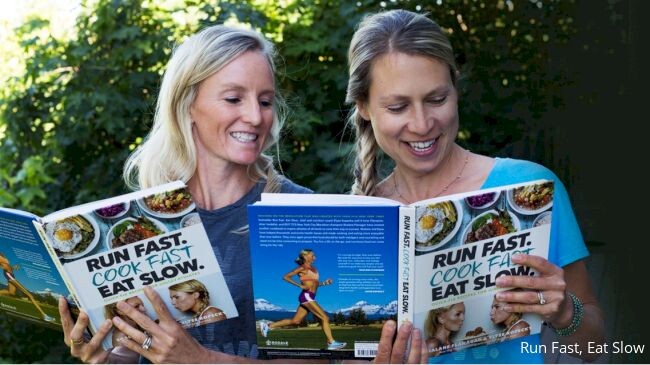
Shalane Flanagan’s Runner’s High Peanut Sauce
Ingredients

1 Tbsp coconut oil or extra-virgin olive oil
1 yellow onion, diced
1/2 teaspoon fine sea salt
3 cloves garlic, minced
1 can (13 1/2 ounces) unsweetened coconut milk (preferably full-fat)
1/2 cup unsalted creamy peanut butter
1 Tbsp soy sauce
1 Tbsp coconut sugar (other granulated sugar is fine)
1/2 to 1 tsp red pepper flakes, depending on spice preference
1 Tbsp lime juice
1/4 cup chopped peanuts
Directions
In a medium saucepan over medium-high heat, warm the oil. Add the onion and salt and cook, stirring occasionally, until soft but not brown, about 5 minutes. Add the garlic and cook, stirring frequently, for one minute.
Add coconut milk, peanut butter, soy sauce, sugar, and pepper flakes. Bring to a simmer and whisk until the peanut butter melts. Reduce the heat to low and simmer, uncovered, stirring occasionally, until the sauce thickens and the flavours meld, about 10 minutes. Remove pan from heat and stir in the lime juice.
Using an immersion (stick) blender, if you have one, blend the sauce until smooth. Alternatively, transfer the sauce to a blender and process until the sauce is smooth. (In my household we have cut out the blending step entirely on occasion and the sauce still tastes like bliss).
To serve, fill a bowl with soba noodles or cooked brown rice, add your favourite sautéed veggies, top generously with the sauce, and garnish with the peanuts.
(11/09/2022) ⚡AMPby Keeley Milne
Setting running goals
Why did that race not go as planned? I have had that thought several times in my running career. Is the race not going as planned, or is it more that I did not begin my training by setting proper race goals?
Setting proper race goals begins with the training plan. As I look back over races where I achieved my dreams, my training plans were built around realistic expectations and training specificity.

The principle of specificity states that sports training should be relevant and appropriate to the sport for which the individual is training in order to produce the desired effect. … Essentially, specificity training means that you must perform the skill in order to get better at it. When it comes to running, this means…race is on hills = train on hills, race is in the heat = train in the heat. (Defined on verywellfit.com)
When I achieved my goals, my training plans were founded on establishing proper training paces and allowing for a small amount of natural progression in my ability as the training weeks unfolded. In training leading up to not-so-successful races, I lacked focus on training paces. Instead, my main goal was purely to achieve higher weekly mileage. This training approach is entirely acceptable if the goal is to cross the finish line. However, as these race dates approached, I began to formulate unrealistic time goals that had no connection to the results of my training plan. In other words, I got caught up in the excitement of the upcoming race and how I would like to finish but was not capable of at that moment.
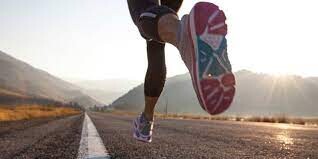
Set Goals Before the Season
Before beginning any training plan or racing season, I write down my planned races. I not only set goals for each race but set progression goals for the entire season. My loftier goals either come at the end of a training cycle or the racing season. It can be easy to get excited about an upcoming season or training plan, but if I don’t think through my schedule and goals first, I find that I never quite reach what I set out to achieve. Dreaming grand accomplishments in my mind is great, but putting them on paper and building my training plan around these goals creates both accountability and opportunity for reflection during and after the season.
What are Your A, B, C Goals?
I set several goals for every training cycle and almost every race. For example, my recent training and racing goals for the Canyons 100k were sub-12 hour finish (goal A), sub-15 hour finish (B), and finish for my Western States 100 qualifier (C).
As I progressed through training toward this race, I kept these goals in mind. I set up training paces based on what would allow me to achieve Goal A. However, when I could not take as much time as desired to train my ability to climb, I knew this goal would be a stretch to achieve in races like Canyons 100k. The race features 16,000 feet of elevation gain, and without training specificity, the course would present as more of a challenge to me. Before the race started, I settled with Goal A being out of reach and focusing on achieving either Goal B or C.
My result of Canyons 100k was 14:44:44, just under my B goal of sub-15 hours. The development of the race was much more than just the time goal, though. With the proper time to set goals initially, track my progress toward the goals throughout training, and adjust my plans accordingly, the result was a 100k race where I truly enjoyed the journey from start to finish.
Set Goals That Are Not Time Specific
There are other achievable goals than running a specific time in an upcoming race. And, it may come as a shock, but there are other goals you can set besides just those related to pounding the pavement or trails! What might those goals be?
(1) Overall Fitness
In the middle of planning our race calendar and training plan, are we considering our overall fitness? As runners, we often neglect the importance of strength training, cross-training, and other activities that may complement our running. Maintaining our overall fitness does require spending time on other activities besides running. When we complete these complementary activities, we are improving both our bodies and minds, the latter being very critical to a long and successful race season. To re-kindle the interest in a sport from your past, join a recreational soccer or softball league, or plan to attend a weekly yoga or spinning class at your local gym. Mix it up, have fun, and watch your overall fitness soar!
(2) Improve Nutrition
We run to eat or drink! I’m sure you have heard or used this line many times before, but have you stopped to consider how your eating habits could be impacting your performance and ability to reach your running goals. It’s not to say that we should not enjoy mixing both eating and running. However, we should be mindful of what we are eating and how much. I know in the weeks that I have a few fewer drinks and bowls of ice cream, I feel better and perform more to my expectations. Plan ahead and prep your nutrition just like you plan your run training.
(3) Impact Your Community
It’s easy to get so focused on our training plan and running goals that we forget about all those that support the running community and us. Take time to welcome new runners into your group runs, volunteer for a park clean-up, volunteer at races, or say thank you to those who support your crazy running habit and dreams!
(4) Becoming a Smarter Runner
Just like reading this article on Setting Proper Race Goals, invest in your running performance by taking time to educate yourself. Make it a goal to read a new book, watch an inspirational documentary, or attend a running or fitness clinic/camp. We will never become so experienced as runners that we can not learn something new. The sport is still evolving, technologies are changing, and our bodies are constantly changing as well.
(11/08/2022) ⚡AMPby Sunrise Running Company
Five-minute kitchen workout for runners: get strong while you cook supper
If there’s one thing most of us can relate to, it’s feeling short on time. Many runners want to add some strength training to their schedule, but an hour or two at the gym can seem impossible to fit in. A five-minute bodyweight strength workout is perfect for any busy runner to slide into their day, and it can be done while you are cooking supper.
British physician and podcast host Dr. Rangan Chatterjee often shares his five-minute routine. Chatterjee notes that the kitchen can be a very productive way to fit in bursts of exercise–while waiting for a kettle to boil or the oven to heat up, opt for this strength routine instead of scrolling your phone.
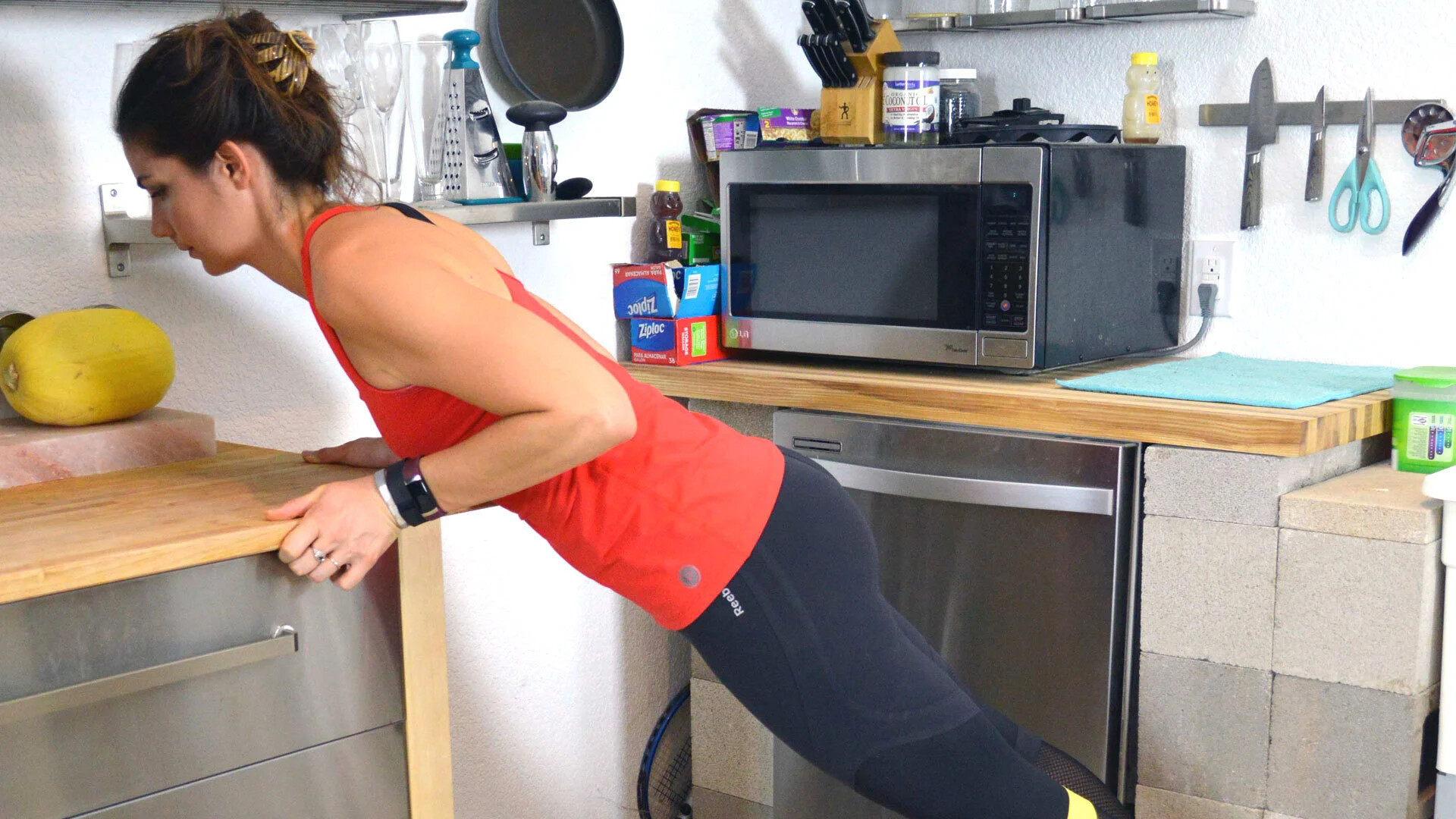
Five-minute kitchen workout
5–10 bodyweight squats

Stand with your feet slightly wider than your hips, toes pointed slightly out. Keep your back straight and squat down as far as you feel comfortable. Aim to do about 5–10 each time, and add more as you get stronger.
5–10 calf raises
Find the edge of a step for this one, although you can do it on the kitchen floor if you’re step-less. Lift as high as you can onto your toes, and then lower your heels down as much as your ankles will allow. Push evenly through the entire width of your foot–Chatterjee suggests holding onto the wall if you’re having trouble balancing. If you have stairs in your house, you could add ten step-ups on each leg at the base of your stairs.
5–10 press-ups
Press-ups (or pushups) work your chest and arm muscles. Place your hands roughly shoulder width apart, and lower your chest down between them before pushing back up again. If you’re new to these, start by doing them against a wall. Eventually, graduate to the floor, and know that you can always modify by dropping your knees to the ground.
5–10 tricep dips
Tricep dips tone the backs of your arms and can be done against the kitchen counter or a stable kitchen chair. Hands should be shoulder-width apart on your chair or kitchen counter behind you–move your bottom off the bench, extending your legs in front of you. Lower your body as far down as you can go and then push back up until your arms are close to straight (try to keep a small bend in the elbows).
5–10 bodyweight lunges on each leg
These work your glutes, quads, hamstrings and core muscles. Aim to keep your back straight throughout the entire movement, and hold on to a countertop for support if needed. Chatterjee suggests adding in a side rotation or lifting bottles of olive oil above your head as you gain strength.
BONUS: Watch Chatterjee guide you through the exercises once, and you’ll have them memorized in no time.
(11/08/2022) ⚡AMPby Running Magazine
Faith Kipyegon has the marathon in mind
In the new issue of AW, the Olympic and world 1500m champion reveals that close friend Eliud Kipchoge has inspired her to tackle the 26.2-mile event in future
Many view already her as a true athletics great, but Faith Kipyegon doesn’t quite see it that way. Yet. Despite being a two-time Olympic and world champion over 1500m, the Kenyan believes she has more work to do before any such tag can be justified.
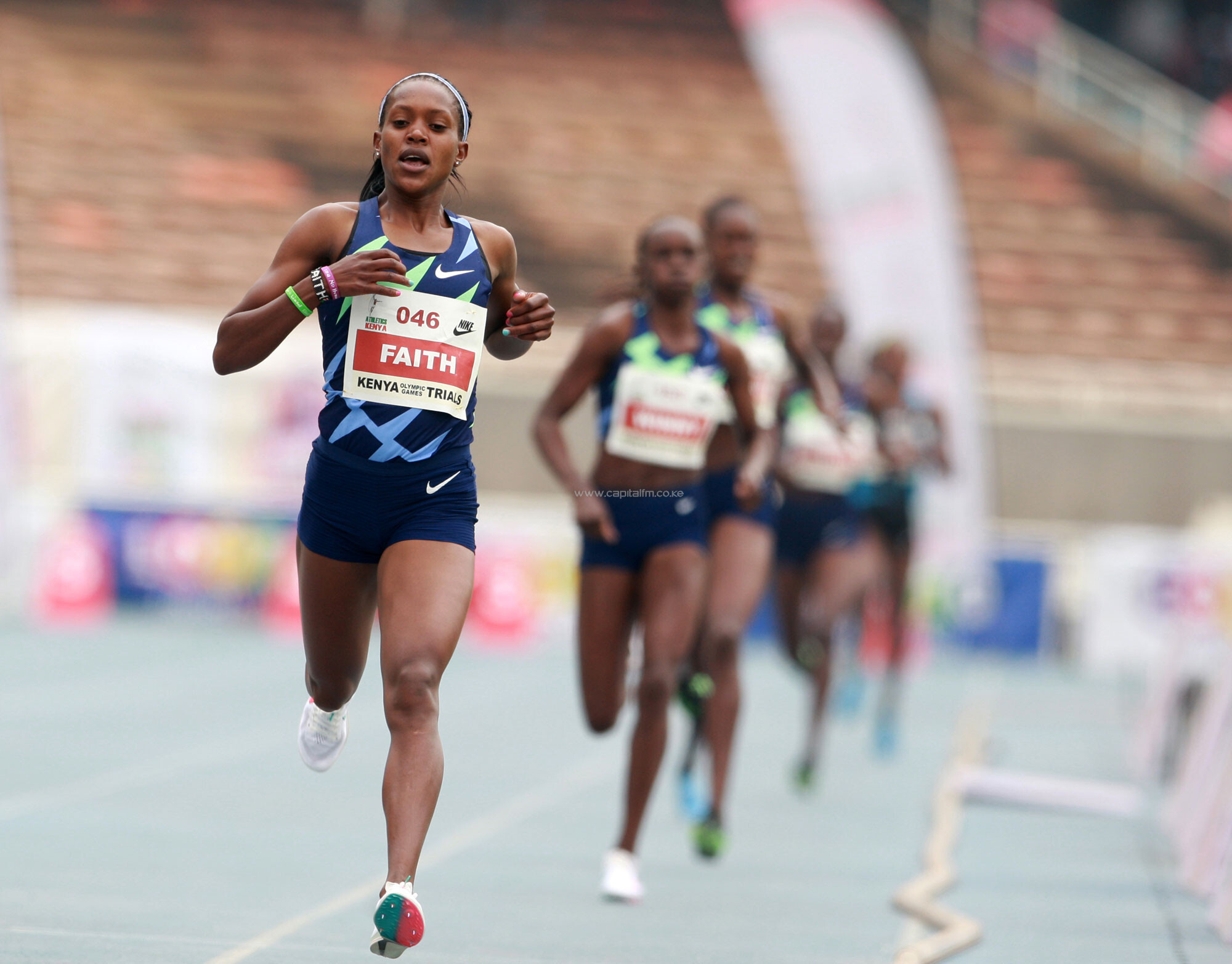
In a wide-ranging exclusive interview with Euan Crumley in the latest issue of AW, which is on sale from November 10, among other things the Kenyan discusses how she wants to leave a legacy, as well as outlining what she believes needs to happen in the fight against doping in her home country.
The 28-year-old still has more ambitions to fulfil on the track, too, but admits that the future will see her heading down a road which she hopes will lead to even more success.

Kipyegon trains at the camp in Kaptagat from which her close friend Eliud Kipchoge hones his mastery of the marathon, and admits that seeing the world record-holder at work has inspired her to tackle the 26.2-mile event in the future.
“I don’t see myself as a great, yet,” says Kipyegon who, like Kipchoge, is also coached by Patrick Sang. “I need to achieve more towards the marathon and I’m really looking forward to following in Eliud’s footsteps.
“He has already shown us the way and, training with him, I see what he does every day.
“I will work my way up towards the marathon in future and I will be the greatest.
“When you stay with marathon runners, you don’t see yourself as a 1500m athlete any more – you see yourself as a marathoner. You follow them on long runs, you follow them on fartleks and you see every day what they do. [It makes you feel like] ‘I need to do this’.
“That’s motivation from Eliud, from the whole group in Kaptagat that has really inspired me to see myself in the marathon in future.
“[When I will run one] is something I can’t predict, but I want to build myself and build my commitment towards marathon and just go step by step [through the distances] towards it.”
Kipyegon is one of the nominees in this year’s AW Readers’ Choice Awards, which launch this week in the magazine and online. This is your chance to pick which individuals, across a range of categories, you think have excelled in 2022.
Elsewhere in the issue, we take a deep dive into the state of play when it comes to officials. What does the future hold for those who make athletics tick? Paul Halford finds out, plus we feature a brilliant extract from new book Unsung, in which Alan Bell takes us into the world of the starter.
As we come to the end of the major road racing events season for the autumn, a trend of lower event entry levels is becoming all too evident. Tim Adams asks where all the runners who were expected to provide a boom for mass participation races post Covid have gone, while author Damian Hall examines the environmental impact of events and outlines what runners can do to make a difference in the climate crisis.
Elsewhere in the issue, there is also an exclusive interview with international marathon runner Callum Hawkins, who continues his recovery from injury, while our packed performance section features plyometric tips from coach John Shepherd, training insight from Amelia Quirk and running shoe guru Paul Freary tests out the best gear for off-road adventure this winter.
With coach and commentator Geoff Wightman the focus of this month’s Ask The Athlete, Richard Whitehead recalling his greatest race and columnist Katharine Merry looking at the huge impact felt when the rules are broken, there are plenty of reasons to pick up your copy.
(11/08/2022) ⚡AMPby Athletics Weekly
Here are six exercises that will help you run faster
How to run faster? As a runner you might think that the only way you can get better at your runs is through running daily. Not only is running daily not good for your health – you need to allow your body some time to recover – but also counterproductive as it will leave you feeling tired. So how do you really get faster and better? There are two things that you must focus on:
1. Giving your body a break from running daily2. Strength training

How exactly does strength training help runners? Isn’t the point of strength training to build muscles and tone the body? We understand that this thought would cross your mind. Contrary to popular belief, going to the gym makes a runner stronger. Strength training focuses on muscles that support running, and aims at building better balance, flexibility and endurance. Strength training is responsible for correcting posture, conditioning and strengthening the core, and improving overall performance. A few weeks at the gym, and you’ll notice the difference in your runs.
What are the exercises that you should be focusing on if you wish to be a faster runner? Bookmark this list that shows you the six best exercises that will transform your running performance.
1.- Bulgarian Split Squat
This helps improve balance, and focuses on the glutes, hamstrings, quadriceps as well as the core. All these muscles are essential to a runner, and improving strength in the legs will ultimately help be a better runner. This is a unilateral movement – similar to a run where you’re always on one foot.
a. Stand in front of a knee-high platform. Extend your right leg behind you, with the toes on the platform. You’ll find yourself in a lunge position, with one leg on the platform.b. Lower until your left knee is almost on the floor. Keep your torso upright.c. Don’t push your knee beyond your foot. Keep your core engaged.d. Drive through your front heel back up to the starting position.
2.- Renegade Rows
This exercise works on your core as well as back muscles, and even trains the stability muscles. Training the back and core is important as a runner, especially because it will help you improve your running posture.

a. With two dumbbells, get into a press-up position with the dumbbells on the floor. Maintain your body in a plank positionb. Lift one dumbbell up towards your body so that your elbow rises behind you. Make sure the elbow is tucked by your side as you’re lifting the dumbbellc. Lower the weight and repeat with the other armd. Ensure that you maintain a neutral spine throughout without losing balance and shifting your body to the sides
3.- Reverse Fly
This exercise works on the mid-back, posterior shoulder, and rhomboid muscles. All these muscles are involved in maintaining a good running form. This is also one of the few exercises that targets the mid-back, a part of our back that is usually ignored during training.
a. Stand with your feet shoulder width apart, and hold dumbbells in each handb. Hinge at the hips, with your back nearly parallel to the floor, with a slight bend in your kneesc. Let the dumbbells hang straight down, palms facing each otherd. Keeping back flat and torso still, lift your arms straight out to the sides until they’re in line with the shoulderse. Return to starting position then repeat
4.- Deadlift
A deadlift is the king of all lifts, and makes for a full body workout that is great for the hamstrings, glutes, back, and core muscles. All these muscles help stabilise the running form, and strengthening them enables better performance as a runner.
a. Stand with your feet a little wider than shoulder-width, with a slight bend in your kneeb. Grab dumbbells/ a barbell and hinge at the hipsc. Brace your core and lift the weights, squeezing the glutes when you rise upd. Focus on hinging at the hips, not squatting
5.- Box Jumps
An explosive box jump will work on your leg and core muscles, and purely aim at improving stability and balance in the long run.
a. Stand in front of a box with feet about hip-width apartb. Hinge at the hips and squat down to jump up onto the boxc. Aim at landing with both feet on the boxd. Step back down, repeat
6.- Sled Push
This move focuses on power, and improves core stability as well as technique. Plus it makes for a good leg workout too.
a. Load up your sled with weightsb. Lean into it with your arms fully extended, and push it across the floor as fast as you can.
(11/08/2022) ⚡AMPby Protima Tiwary
Aliphine Tuliamuk says the weather at the NYC marathon was not as bad as she expected as she finished first American in 7th place
It did not take long for Aliphine Tuliamuk to find air conditioning after finishing seventh as the top American in the warmest New York City Marathon since 1985.
She picked up her giggling 21-month-old daughter, Zoe, and placed her face directly in front of the cool air.
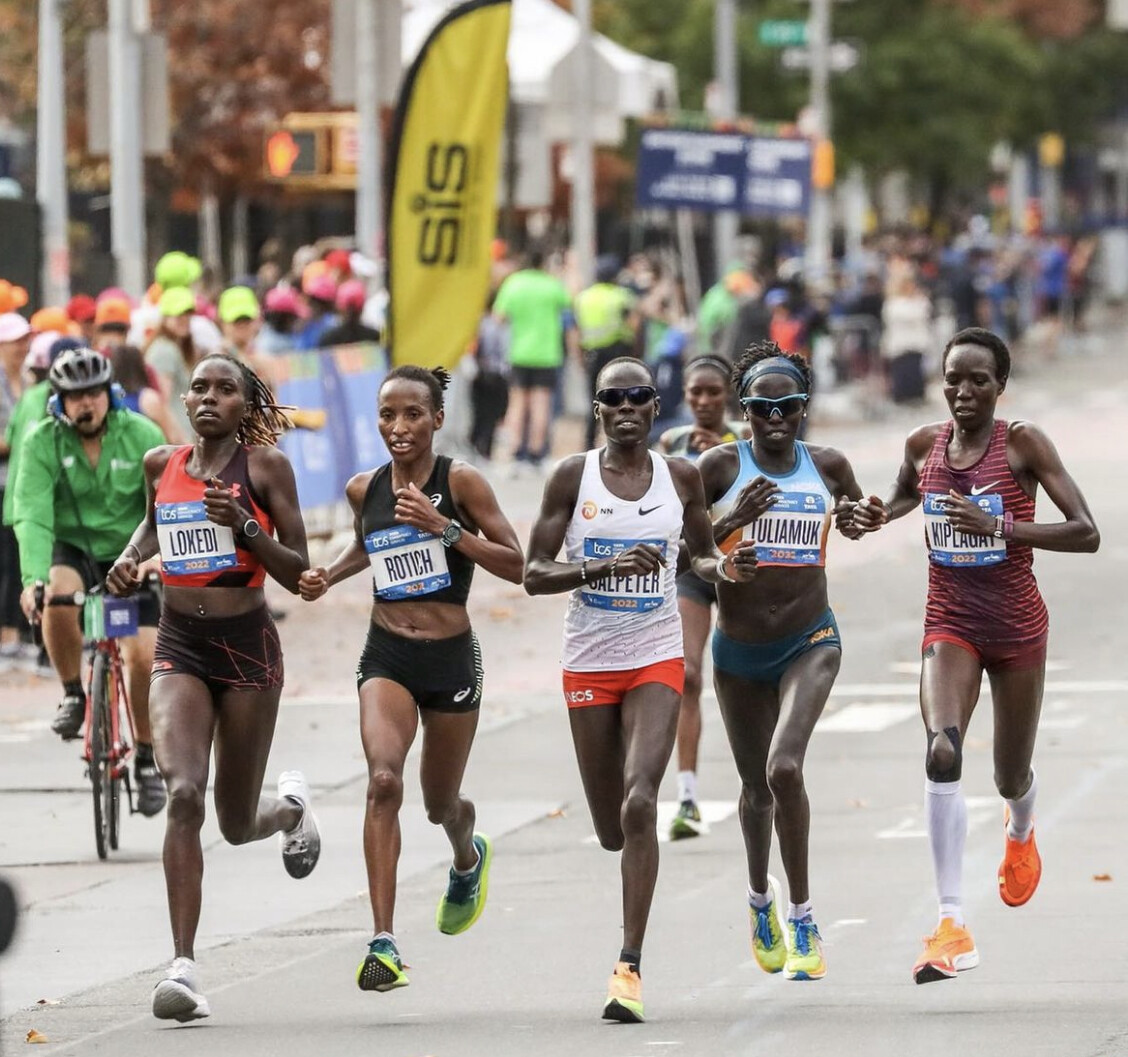
“To be honest with you, I don’t think it was actually as bad as I expected,” Tuliamuk said of the temperature, which reached 73 degrees when she crossed the Central Park finish line. “I was on point with my hydration.”
She clocked a personal-best 2:26:18, despite ankle swelling hampering her build up. She estimated that she only had five weeks of training before taking the last two weeks to taper.
“I excel when the conditions are not perfect,” she said. “I rise to the occasion, and I believe that today that was the case.”
Seventh was the lowest placing for the top American woman in New York City since 2015, when Laura Thweatt also finished seventh.
“I remember going into the race thinking, if I could get top seven, that would be really good,” Tuliamuk said. “I obviously wanted more.”

Tuliamuk is beginning to turn her attention to the Olympic Trials in the first quarter of 2024 at a to-be-announced site.
She plans on running a spring 2023 marathon, which could be her final marathon before trials, where the top three are expected to make up the team for the Paris Games.
“Once the [trials] schedule is out,” she said, “we’ll work backwards from that.
“I think that next Olympic team is going to be really, really hard to make.”
Tuliamuk identified Emma Bates, Keira D’Amato, Molly Seidel and Emily Sisson as her toughest competition. Sisson broke the American record at October’s Chicago Marathon, clocking 2:18:29 to lower D’Amato’s record from Jan. 16 by 43 seconds. Seidel claimed the bronze medal at the Tokyo Olympics.
“There’s so many Americans right now that are doing amazing,” Tuliamuk said. “It’s like you just have to have a perfect day.”
Tuliamuk made her Olympic debut at the Tokyo Games. She did not finish the race, seven months after she gave birth.
“I really want to make the next Olympic team,” she said. “The last one, the pandemic and having a child, I never really got to represent my country the way I wanted it.”
Tuliamuk will be 35 in 2024. The U.S. Olympic women’s marathon team included a 35-year-old at three of the last four Games.
“I really want a medal for my country,” she said. “I think that I have a lot of running in me. I have a lot of speed.”
Bates, 30, finished 35 seconds behind Tuliamuk for eighth place on Sunday.
“Those hills were a lot harder than I imagined,” said Bates, who revealed that she did not look at the course map before the race.
Bates wore a matching snake ring and earrings as she made her New York City debut, one year after placing second at the Chicago Marathon.
“I think I’m going to take some more risks next time,” she said. “Hopefully I’ll do better next time. I want to be top five.”
It was a big 48 hours for Bates, who was inducted into the Boise State Hall of Fame on Friday. She planned on celebrating with a Modelo beer.
Tuliamuk envisioned a tamer celebration, including showing Zoe around Central Park and other tourist attractions.
“I’m really grateful that I’m able to do all of it,” she said. “I’m able to run at the very highest level of our sport and be a mom at the same time.”
(11/07/2022) ⚡AMPTCS New York City Marathon
The first New York City Marathon, organized in 1970 by Fred Lebow and Vince Chiappetta, was held entirely in Central Park. Of 127 entrants, only 55 men finished; the sole female entrant dropped out due to illness. Winners were given inexpensive wristwatches and recycled baseball and bowling trophies. The entry fee was $1 and the total event budget...
more...How to get running with your dog
Running with your favorite four-legged friend is a great way to stay healthy while creating a special bond. However, no matter what level you're currently at, it's always important for both you and your pooch to ease into running and build up fitness over time. Our vets are here to help with an easy to follow running plan!
Should I go running with my dog?
First and foremost, before you start running with your dog, it’s important to consider whether it’s the right way to exercise your pooch. Not all dogs are suited to running – it all depends on their general health, breed, age and personality. Here’s some things to consider to help you decide whether your dog is suited to being your running partner.

General health and breed
When considering introducing running as part of your doggy’s routine, it’s important to remember that some dogs, such as those with medical issues and breeds with flat faces, are likely to struggle when running. If this is the case, leave them at home for your run and find alternative exercises for them.

It's best to have your pooch checked by your vet before you plan to run, so they can advise you on your dog's current fitness levels, and suggest how much running they will be able to manage. They’ll also be able to check whether your dog is the ideal shape and examine for any underlying medical problems that might affect their ability to run.
Age
If you have a puppy, you should always wait until they’re fully grown before taking them out on a run. It can be harmful to your pup if they run before their little body has matured, but there’s plenty of other puppy exercises that you can try in the meantime!
Personality
When deciding whether running is right for your pooch, you’ll need to think about whether it suits their personality – even a healthy pooch can be unwilling to take a sprint!
Bear in mind that while many doggies will keep up when you run, it doesn’t always mean that they’re enjoying it. Some dogs may run with you in a state of panic, because they’re worried they’re going to get left behind!
A good way of getting to know whether your dog is likely to enjoy running, is it look at their body language when you’re out for walks or exercising off lead. If they seem stressed when you walk away, or if they’re not keen to pick up the pace when exercising, running may not be suitable for your pooch. Remember that the aim of running is for you and your dog to enjoy spending time together, so you need to make sure they’re running because they want to. If your pooch isn’t keen to run, or they prefer a more leisurely pace, it’s best to stick to other exercises such as walking or a slow paced jog to ensure it’s enjoyable for them, too.
Getting started
Once you’ve decided that running is suitable for your pooch, you’ll need to think about how much exercise your dog needs. Remember that running shouldn’t be your dog’s only exercise – you’ll need to factor in time for playtime and walkies, too. Sniffing and exploring is just as important for doggies, so make sure that your dog is still getting a chance to explore the world with their nose!
Create a plan
When you taking your first running steps, it’s crucial to train slowly with a plan in place. To help you out, we’ve created a step-by-step schedule to follow. You’ll be able to take your route further as your dog gets fitter, but just remember to always work at your pooch’s pace throughout – and if your dog starts to struggle, or stops enjoying themselves, it's time to reassess your plan!
Step 1: Route planning
Carefully planning your route in advance is essential when it comes to running with your dog. You’ll need to think about how far you want to go and what kind of paths you’d like to follow – this will depend on your pooch’s breed, age, enthusiasm and current fitness level.You can get a rough idea of how long you and your dog can comfortably run by thinking about your current walks. Try making your runs shorter than your walks to start with, and build up slowly as you both get fitter – to begin with, you could aim for a run that’s around half the length of your usual walk, so you know you can get back home comfortably.
Stay safe by avoiding roads and busy areas as much as possible – and remember to think about hills or inclines. It takes a lot more energy to go uphill so you might want to avoid steep climbs until you’re both fit enough. Wide tracks with an even surface are ideal for running as you can keep a steady place, reducing the risk of trips or injuries – but remember that these paths can be popular with other runners and cyclists, so you’ll need to keep your dog close by, or consider quieter running times.
Step 2: Prepare!
From your dog’s running gear to checking the weather, you’ll need to make sure you’re prepared for your journey with a pre-run checklist – once they’re all ticked off, you’re ready to head out!
Check your dog’s harness: When running with your doggy, it’s really important to use a secure, safe harness that fits your dog perfectly. Make sure you try it on your dog ahead of your run to check that it fits comfortably and won’t rub. They’ll need to be able to run without the harness moving and becoming uncomfortable when out on their adventure!
Take a water bottle and bowl: Running is hard work, so it’s important to make sure you have water for your pooch, so you can stop for a drink when they need one.
Plan their dinner time: Exercising on a full stomach can be very uncomfortable for your dog and can cause them to be sick. It can also put some dogs more at risk of a life-threatening twisted stomach (GDV), so it’s important that you don’t exercise your dog too close to their meal time!
Have your vet’s phone number to hand: It’s always useful to have your vet’s number saved in your phone before you go, just in case anything goes wrong while you’re running.
Pack your bag: Don’t forget to take a small first aid kit and plenty of poop bags on any excursion with your pooch!
Check the weather: Always check the weather before you set off for a run, and never attempt to run in the heat. It’s best to exercise early in the morning or late in the evening during warm weather, but you might have to avoid running altogether if it gets really hot! If your dog shows any signs that they’re struggling with the heat, stop running immediately, seek shade and offer your dog some water.
Step 3: Walk it
You’ve planned your route and your bag is packed – the next step is to walk it with your four-legged friend! Taking it slowly and building yourself up by making sure you can walk your route first, is really important – and don’t forget to take breaks if either of you gets tired!
Once you’re both able to comfortably walk your chosen route without stopping, you’re ready for the next step.
Step 4: Jog it
Once you can comfortably walk your route, you’re ready to build your speed! It’s best to do this slowly by walking for five minutes, then jogging for two, walking for five minutes and so on. Once your dog gets used to jogging, you can start to reduce the time you are walking – keep doing this until you can both comfortably jog the full route.
Step 5: The big run!
So you’ve walked and jogged, now it’s time to run! Just like jogging, it’s important to build up slowly. As before, start by repeatedly running for a few minutes, followed by jogging for a few minutes, slowly increasing the time that you are running, until you’re both able to run the whole route. Don’t forget to keep an eye on your four-legged friend to make sure they’re not getting too tired!
Once you’ve achieved this, you and your four-legged friend can officially count yourselves as runners! Now you know the distance you are both able to manage, you can start to vary your route and prepare for new running new adventures!
Where it’s safe, many doggies may prefer to be off their lead when running, as this gives them plenty of opportunities to sniff and explore at their own pace, without slowing you down. However, running off the lead isn’t suitable for all dogs and locations, so you’ll need to ensure that they have a suitable harness and lead. Some harnesses can restrict your dog’s movement, so remember to do your research before deciding on your pooch’s perfect running gear! You’ll need to make sure it fits comfortably and doesn’t rub.
(11/07/2022) ⚡AMPby PDSA
Ashton Kutcher ran well in his New York City Marathon debut
The 2022 NYC Marathon champion, Kenya’s Sharon Lokedi, wasn’t the only runner who had a successful marathon debut in New York City; Hollywood actor Ashton Kutcher led the way for celebrities, smashing his goal of sub-four while raising over a million dollars for his charity, Team Thorn.
The That 70s Show actor, 44, joined 50,000 other athletes to run in the prestigious marathon through the streets of the Big Apple, finishing in 3:54:01. He mentioned to the media before the race that his A goal was to finish and raise one million dollars for Thorn, and his B goal was to break the four-hour barrier.

His charity, Thorn, is a non-profit tech company that helps prevent the sexual exploitation of children online.
Kutcher reached the halfway mark in 1:51:19, and in rookie fashion, positively split the second half in 2:02:42. He also relied on some stylish purple and pink Nike Alphafly’s to help his performance.

The former star of The Bachelor, Matt James, was the top celebrity finisher in 3:46:45, smashing his previous personal best. James was paced by 2017 NYC champion Shalane Flanagan as the pair went through the halfway mark in 1:29-high and rode the pain train over the final 13 miles.
Meghan Duggan was the only other celebrity to break the four-hour barrier, crossing the finish line in 3:52:06. Duggan is an Olympian who played hockey for Team USA at the 2010, 2014 and 2018 winter Olympics, winning two silvers and a gold. Duggan is currently the director of player development for the New Jersey Devils.
The former first daughter, Chelsea Clinton, returned to the NYC Marathon after making her debut in 2021. Clinton finished the race 20 minutes shy of her previous time, in 4:20:34. Her parents, President Bill Clinton and former Secretary of State Hillary Clinton, were on hand at the finish line to cheer her on as she finished. She ran the race on behalf of a food non-profit charity called City Harvest, which helps the city of New York with food insecurity.
New York Giants former running back Tiki Barber, 47, continued his streak, running his eighth consecutive New York City Marathon. He finished in 5:26:51.
(11/07/2022) ⚡AMPby Marley Dickinson
TCS New York City Marathon
The first New York City Marathon, organized in 1970 by Fred Lebow and Vince Chiappetta, was held entirely in Central Park. Of 127 entrants, only 55 men finished; the sole female entrant dropped out due to illness. Winners were given inexpensive wristwatches and recycled baseball and bowling trophies. The entry fee was $1 and the total event budget...
more...Weird weather? Here’s how to stay fit when you’re stuck inside
Unexpected weather provided training challenges for athletes from coast to coast in North America this weekend. In the west, blizzarding snow and icy winds plunged runners into winter, while the east experienced a last flush of summer with hot temperatures and soaring humidity. Wherever you live and train, it can be handy to have some fool-proof backup workouts ready to pull out on a day you just don’t want to head outside. Here are some ways to keep your fitness rolling when you can’t get out to run.
Remember that it’s OK to switch it up
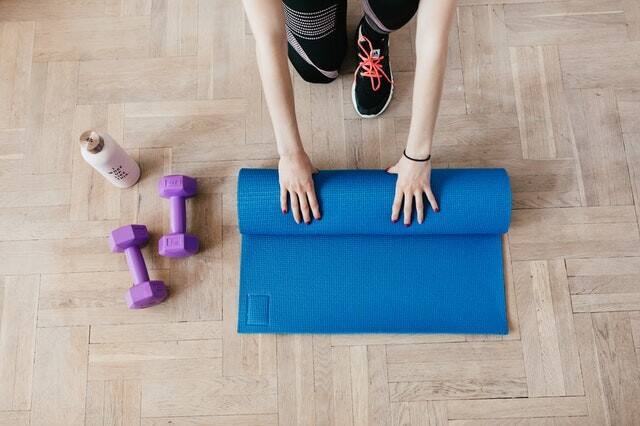
Sure, a snowstorm can make even the most dedicated runner want to curl up inside with a blanket and a good movie. It’s certainly ok to take an extra rest day–but if you are itching to get a workout in, know that cross-training can give you a mental and physical break from running while still letting you reap those aerobic and happy-brain rewards.
Not only will whatever workout you choose to target different muscles and training effects than your regular running routine–you’ll stay excited to lace up your shoes when you can next head outside. A HIIT (high-intensity interval training) workout can be an easy option to get your sweat on without leaving your house and doesn’t require any fancy equipment.

Simple and efficient HIIT workout
High knees for 60 seconds, rest for 15 seconds
Pushups for 60 seconds, rest for 15 seconds
Bicycle kicks for 60 seconds, rest for 15 seconds
Squats for 60 seconds, rest for 60 seconds, and repeat
Embrace the elliptical
Recent studies have shown that similar benefits to running can be achieved using the elliptical. Renowned coach and author David Roche shared in Trail Runner Mag that after noticing Canadian marathon record holder Natasha Wodak had been using the elliptical leading up to her speedy performance at the 2022 Berlin Marathon, he dug deeper, and purchased an elliptical himself.
“The elliptical seems like a wonderful way to add aerobic volume and intensity without the injury risk of running,” Roche explains. “It’s likely better than the bike on a 1:1 basis because it involves greater activation of the hips and hamstrings, due to the posture on the machine, while also allowing for arm-swing".
(11/07/2022) ⚡AMPby Running Magazine
Robert Kipkemboi takes honors at N Kolay Istanbul Marathon
Robert Kipkemboi obliterated a strong field to win the men’s N Kolay Istanbul Marathon in 2:10:18, missing out on the course record by 34 seconds.
In the highly contested race, Kipkemboi and Bahrain’s Marius Kimutai managed to break away from the pack of seven athletes at the 37km mark.

The two athletes seemed comfortable until the 40km mark when Kipkemboi increased the pace and never looked back.
Kimutai settled for second in 2:10:27 as another Kenyan, Sila Kiptoo placed third in 2:11:42.
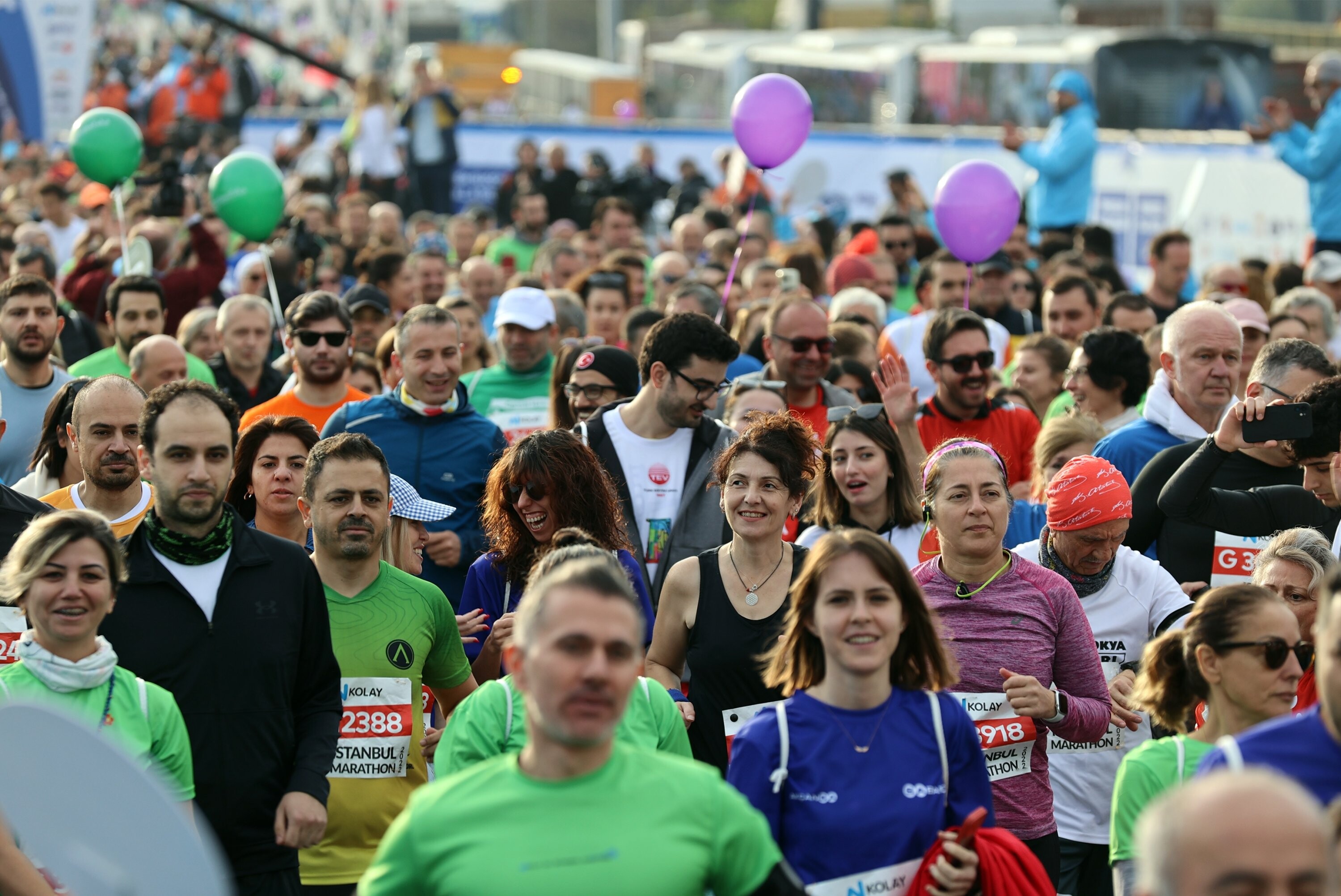
Other Kenyans in the race were Moses Kemei (fourth in 2:11:55), Hillary Kipchumba (sixth in 2:12:02), Benard Sang (seventh in 2:12:10), Samuel Kiplimo (ninth in 2:12:16) and Francis Cheruiyot (13th in 2:16:57).
In the women’s race, Kenyans faltered as Ethiopian trio of Sechale Dalasa, Melesech Tsegaye and Ethlemahu Sintayehu took the first three positions in respective times of 2:25:54, 2:29:01 and 2:31:38.
The best-placed Kenyan was Stacy Ndiwa, who finished fourth in 2:31:53 ahead of compatriot Judith Jerubet (2:32:29).
Mercy Kwambai settled for seventh in 2:39:17.
(11/07/2022) ⚡AMPby Abigael Wuafula
N Kolay Istanbul Marathon
At the beginning, the main intention was simply to organise a marathon event. Being a unique city in terms of history and geography, Istanbul deserved a unique marathon. Despite the financial and logistical problems, an initial project was set up for the Eurasia Marathon. In 1978, the officials were informed that a group of German tourists would visit Istanbul the...
more...The Kenyan duo won the elite races in 2:23:23 and 2:08:41 at the NYC Marathon having to make up significant ground on the long-time leaders
Sharon Lokedi displayed remarkable discipline to win the TCS New York City Marathon on her debut at the distance, while Evans Chebet’s patience paid off to win the men’s contest at the World Athletics Elite Platinum Label road race on Sunday March 6.
Lokedi flew under the radar heading into the women’s race as most of the focus was on world champion Gotytom Gebreslase, two-time world 5000m champion Hellen Obiri, who was making her marathon debut, and world bronze medallist Lonah Chemtai Salpeter.
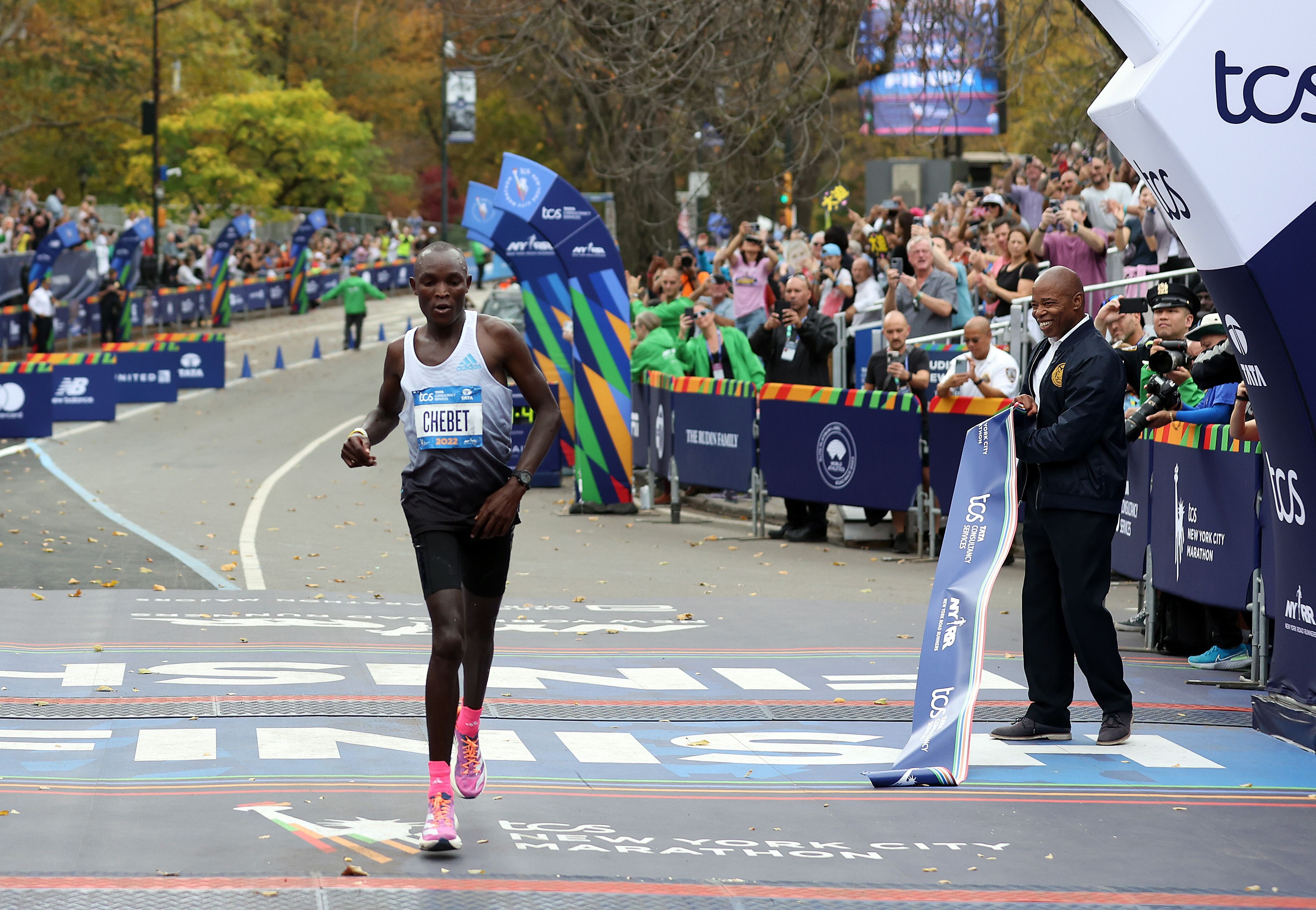
All four women featured in the large lead pack for the first half of the race as they passed through 10km in a conservative 34:24 before reaching the half-way point in 1:12:17. A few kilometres later, the pack had been whittled down to eight women, with two-time world champion Edna Kiplagat among them.
By 30km, however, three women had broken away from the rest of the field as Gebreslase, Obiri and Kenya’s Viola Cheptoo reached that checkpoint 1:42:27. At that point, Salpeter, Lokedi and Kiplagat were in a five-woman chase pack about 11 seconds adrift.
A few kilometres later, Salpeter and Lokedi caught the lead trio, then Cheptoo began to fade. It left Obiri, Gebreslase, Lokedi and Salpeter as the only four women in contention as they raced through Central Park in the closing stages.
Of those four, Obiri was the first to fall back, but she was far enough into the race to know that her debut marathon would not be a bad one. Somewhat surprisingly, Gebreslase was the next to slip out of contention, the world champion resigning herself to the third step on the podium.
It then left Salpeter and Lokedi to duel for the victory and for a moment it seemed as though Salpeter was the more comfortable. But with one mile to go, Lokedi dug deep and started to pull away from the Israeli runner.
Lokedi reached the finish line in 2:23:23 to win by seven seconds from Salpeter. Gebreslase took third place in 2:23:39 with Kiplagat, nine days shy of her 43rd birthday, coming through to take fourth place in 2:24:16 – more than four minutes quicker than her winning time in this race in 2010.
Cheptoo held on for fifth place in 2:25:34 and Obiri finished sixth in 2:25:49. Olympian Aliphine Tuliamuk was the top US finisher in seventh, 2:26:18.
“It was amazing,” said the US-based Lokedi. “I came in just wanting to be in the thick of the race. I knew I was strong and had really good training, so I wanted to go in and put myself in it and see where I ended up. I expected to run well, but it ended up being an even better outcome than I had hoped for.”
The men’s race played out quite differently, as South American record-holder Daniel Do Nascimento made an early break from the rest of the field.
The Brazilian led by 97 seconds at 10km, reached in 28:42 – just two seconds slower than his 10,000m track PB – and went on to reach half way in 1:01:22, more than two minutes ahead of the rest of the field and well inside course record pace.
A six-man chase pack – which included Chebet, Olympic silver medallist Abdi Nageeye, and 2020 London Marathon champion Shura Kitata – went through the half-way point in a more comfortable 1:03:35.
Do Nascimento continued to lead, although his lead started to wane – especially when he had to briefly take a visit to one of the road-side portable toilets. He passed through 30km in 1:29:09, now just over a minute ahead of Chebet, who had broken away from the rest of the chasers. By 20 miles, Do Nascimento’s lead was down to just 40 seconds. Not long after, and clearly struggling, he stopped running and crashed to the ground.
While medics helped Do Nascimento, Chebet cruised past. The Kenyan, who had won the Boston Marathon earlier this year, found himself with a 30-second lead over a three-man chasing group which included Kitata and Nageeye.
Despite a strong finish from Kitata, Chebet managed to hold on to the lead and crossed the finish line in 2:08:41. Kitata followed 13 seconds later, while Nageeye took third place in 2:10:31.
“The race was hard for me, but I was thankful for my team and have so much gratitude toward my coach,” Chebet said. “My team gave me motivation and I know that after winning Boston I could come to New York and also do well.”
Leading results
Women
1 Sharon Lokedi (KEN) 2:23:232 Lonah Salpeter (ISR) 2:23:303 Gotytom Gebreslase (ETH) 2:23:394 Edna Kiplagat (KEN) 2:24:165 Viola Cheptoo (KEN) 2:25:346 Hellen Obiri (KEN) 2:25:497 Aliphine Tuliamuk (USA) 2:26:188 Emma Bates (USA) 2:26:539 Jessica Stenson (AUS) 2:27:2710 Nell Rojas (USA) 2:28:32
Men
1 Evans Chebet (KEN) 2:08:412 Shura Kitata (ETH) 2:08:543 Abdi Nageeye (NED) 2:10:314 Mohamed El Aaraby (MAR) 2:11:005 Suguru Osako (JPN) 2:11:316 Tetsuya Yoroizaka (JPN) 2:12:127 Albert Korir (KEN) 2:13:278 Daniele Meucci (ITA) 2:13:299 Scott Fauble (USA) 2:13:3510 Reed Fischer 2:15:23
(11/07/2022) ⚡AMPby World Athletics
TCS New York City Marathon
The first New York City Marathon, organized in 1970 by Fred Lebow and Vince Chiappetta, was held entirely in Central Park. Of 127 entrants, only 55 men finished; the sole female entrant dropped out due to illness. Winners were given inexpensive wristwatches and recycled baseball and bowling trophies. The entry fee was $1 and the total event budget...
more...New York City Marathon was a tough race for many because of the heat
3rd place in the 2022 NYC Marathon goes to Gotytom Tekilezeg of Ethiopia with the time of 2:23:29. She was able to handle the challenging weather.
She was hoping for a win since she won the World Championship this year with the time of 2:18:11.
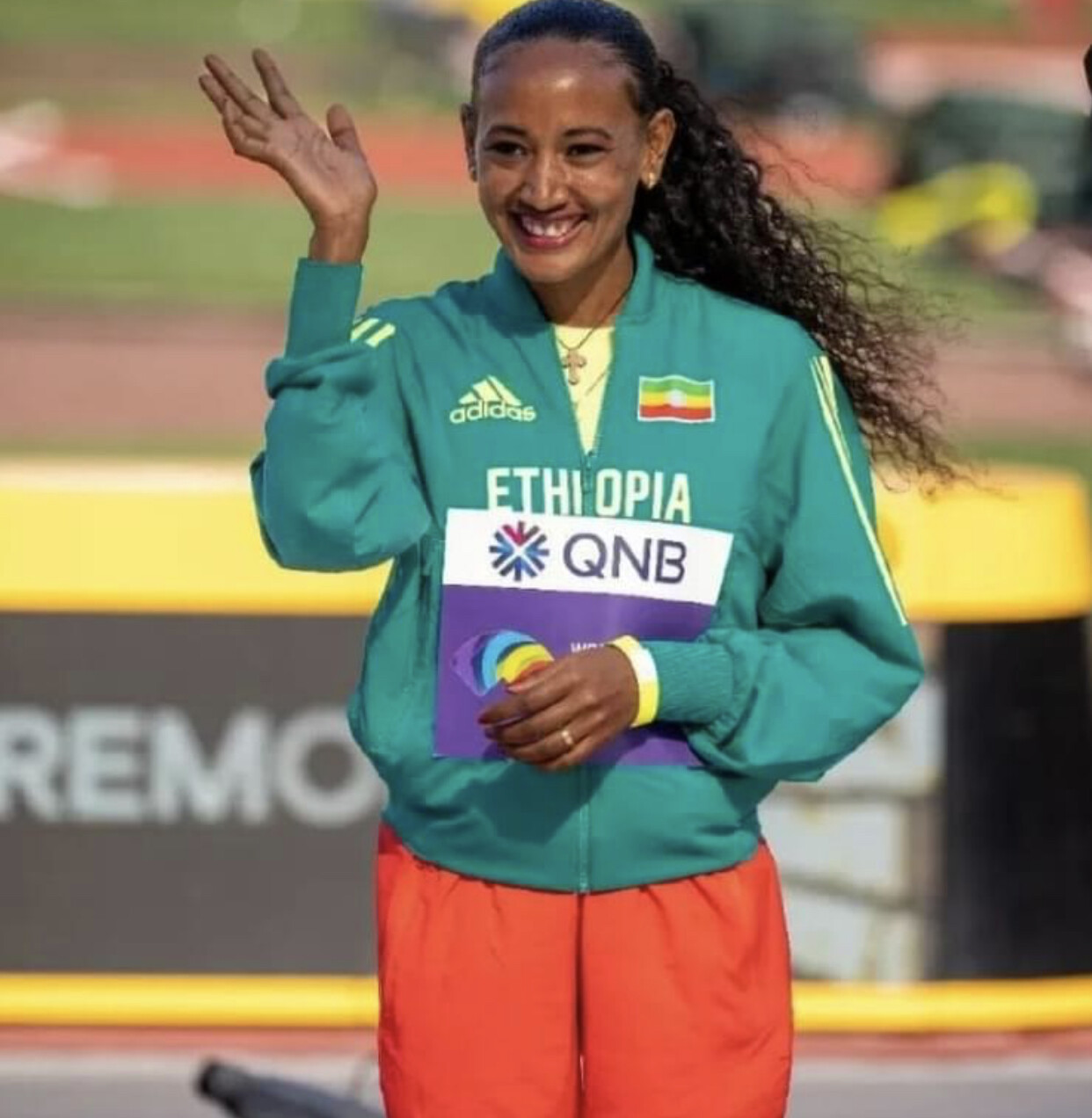
At 16 Gotytom Gebreslase won the gold medal in the girls' 3000 metres at the 2011 World Youth Championships in Athletics held in Lille Métropole, France.
The next year, she earned the bronze medal in the women's 5000 meters event at the 2012 African Championships in Athletics in Porto-Novo, Benin.
In 2013, Gebreslase competed in the junior women's race at the World Cross Country Championships held in Bydgoszcz, Poland.
In 2015, she finished in fourth place in the women's 5000 metres at the African Games in Brazzaville, Congo.
(11/06/2022) ⚡AMPTyler McCandless says surround yourself with great people and find those mentors that make you a better person.
This month marks one decade - 10 years - of working with my coach Steve Jones. Jonesy is a legend in the sport of running - having set the world record in the marathon in 1984.
But, he's so much more than a legend in running, he's a mentor in my running career and my life. Jonesy has a very pure approach to running, it's truly about the love of the game.

In a decade of working together I've improved every single training cycle and at age 36, I'm not only competing the best I ever have, I'm also loving the sport and the practice of mastering the art of racing the marathon more than ever.

Jonesy is an incredible mentor for me, and I'm very thankful for the mentors I've had in my family life, my corporate career, my academic pursuits and in the sport of running. My advice: surround yourself with great people and find those mentors that make you a better person.
(11/06/2022) ⚡AMP2022 New York City Marathon Sharon Lokedi and Evans Chebet Complete a Kenyan Sweep
In record heat for November, Kenyans dominate the New York City Marathon.
Evans Chebet was among the runners who watched as Daniel do Nascimento separated himself from the rest of the men’s field at the New York City Marathon on Sunday. Do Nascimento, a 24-year-old Brazilian who is known for being — what is the word? — assertive, was a blur as he surged into the lead, then a speck off in the distance, and then gone from view entirely.
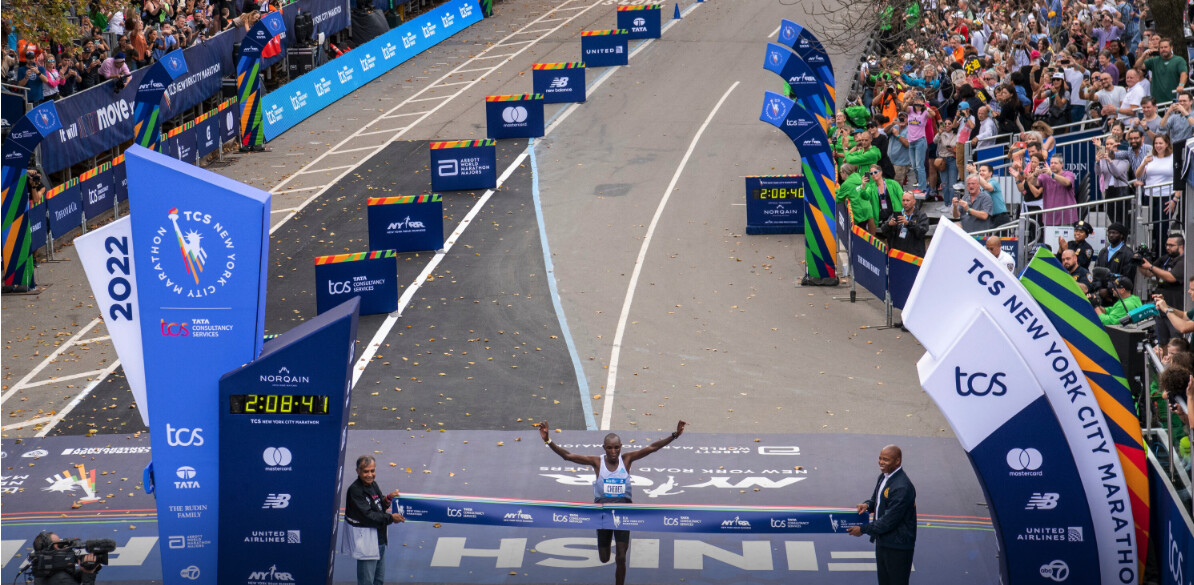

Chebet, a soft-spoken Kenyan who arrived in New York having already won the Boston Marathon this year, opted to exercise patience. Sure enough, as he approached the 21st mile of Sunday’s race, he saw do Nascimento again: face down by the side of the road, being tended to by medical personnel.
“I felt bad for him,” Chebet said in Swahili through a translator, “but I had to continue the race.”
On an unseasonably warm day, Chebet survived both the conditions and the competition, winning in 2 hours 8 minutes 41 seconds to complete a clean sweep for Kenyan men in all six of the world marathon majors this year. Chebet, 33, did his part by winning two of them — and two of the toughest. Of course, considering what Chebet had done in Boston, no one was surprised to see him tackle New York with great composure.
“Boston was actually harder,” said Chebet, who wore his laurel wreath to his news conference.
The women’s finish was much more unexpected. Sharon Lokedi, a Kenyan who raced in college at Kansas, was fearless in her marathon debut, breaking free from a celebrated field to win in 2:23:23.“Perfect weather for me,” said Lokedi, 28, who splits her time between Kenya and Flagstaff, Ariz., where she trains with the Under Armour-sponsored Dark Sky Distance group. “I didn’t expect to win. I expected to run well. But it ended up being a good outcome.”
Lokedi left an all-star cast in her wake. Lonah Chemtai Salpeter, a Kenyan-born Israeli who arrived in New York with the fastest time in the field, finished second. Gotytom Gebreslase of Ethiopia, the reigning world champion, was third. Edna Kiplagat of Kenya, who, at 42, is one of the world’s most decorated marathoners, was fourth. And Viola Cheptoo of Kenya, last year’s runner-up, was fifth.
“It was hot, but I was really prepared,” said Lokedi, who was the N.C.A.A. champion in the 10,000 meters in 2018. “I picked up water at every station to pour on myself.”Do Nascimento, who set a South American record when he finished third in the Seoul Marathon this year in 2:04:51, was the story in New York for much of the morning — until it all began to go poorly for him. Easily recognizable in his lavender tights and space-age sunglasses, he built a two-minute lead more than halfway through the race. But others in the field had seen him try that sort of bold strategy before.In brutal conditions at the Tokyo Olympics last year, do Nascimento was among the leaders when he collapsed in scenes that were vaguely horrifying and was forced to withdraw.
On Sunday, his superhuman pace was beginning to slow when he pulled off the course for an 18-second pit stop at a portable toilet. He emerged with his lead intact, albeit narrower, but it was clear that he was in trouble. About six miles short of the finish, he sank to the pavement and was forced to abandon the race.
“I want to feel sorry for him when I saw him on the ground,” said Abdi Nageeye of the Netherlands, who finished third. “But I was like, ‘Come on, man, this is the second time. You did that in the Olympics.’ ”
A spokesman for the marathon said do Nascimento was recovering at his hotel.
It was not an easy day for anyone. Galen Rupp, a two-time Olympic medalist who was making his long-awaited New York debut, dropped out about 18 miles into the race with a hip injury. And Shura Kitata of Ethiopia, who finished second behind Chebet, lumbered onto the stage for his news conference as if his legs were made of concrete. A race official handed Kitata a giant bag of ice, which he placed on his thighs.“It was very hot,” he said through a translator, “and that made it very tough.”
It was the warmest marathon on record since the race was moved to its traditional early November date in 1986. The temperature in Central Park was 73 degrees Fahrenheit at 11 a.m., shortly before the elite runners began to cross the finish line.
Scott Fauble, 31, was the top American on the men’s side, finishing ninth — a solid result coming the morning after he signed a new sponsorship deal with Nike. Fauble, who was also the top American finisher at the Boston Marathon this year, had been without a sponsor for months.
After agreeing to terms on a contract at dinner on Saturday night, Fauble took an Uber to the Nike store in Manhattan to pick up sneakers. The rest of his racing gear arrived at his hotel later that night.
“It’s quite a rush to get your singlet for the next day at 10 p.m. the night before the race,” he said.
On the women’s side, three Americans finished in the top 10. Aliphine Tuliamuk was seventh, Emma Bates was eighth and Nell Rojas was 10th. Tuliamuk, 33, who won the marathon at the U.S. Olympic trials in 2020 and gave birth to her daughter, Zoe, in January 2021, had not raced in a marathon since she injured herself at the Tokyo Games last year. On Sunday, she finished in a personal-best time of 2:26:18.
“I think that I excel when the conditions are not perfect,” Tuliamuk said. “I rise to the occasion, and I believe that today that was the case.”
Still, she had to overcome some adversity. In early September, she said, she experienced swelling in one of her ankles that forced her to take a couple of weeks off from training.
“In the back of my mind, I wished that I had a few more weeks” to train, she said. “But I also decided to focus on gratitude because I didn’t know that I was going to be here. And the fact that I was able to put in some solid training and had a chance to be competitive, I was just very grateful for that.”Gina Gregorio always watches the race from the corner of Warren Street and Fourth Avenue. This year she held signs that read, “Run to the Polls.”
“I love it when we’re right before the election because we can actually ask people to get out to vote, and it’s like nonpartisan, although I have had partisan signs before because I feel like it’s a great place to have your voice heard,” Gregorio said.
(11/06/2022) ⚡AMP
TCS New York City Marathon
The first New York City Marathon, organized in 1970 by Fred Lebow and Vince Chiappetta, was held entirely in Central Park. Of 127 entrants, only 55 men finished; the sole female entrant dropped out due to illness. Winners were given inexpensive wristwatches and recycled baseball and bowling trophies. The entry fee was $1 and the total event budget...
more...Abdihamid Nur Dominates, Runs Off Course, & Still Wins, Kelati Gets Record
The day before 50,000 runners cross the finish line in Central Park at the 2022 TCS New York City Marathon, some of America’s fastest pros did the same at the USATF 5K Road Championships — though the fastest of them all, men’s champion Abdihamid Nur, almost missed it. Despite a very late wrong turn, Nur, 24, won his first US title in a course record of 13:24 after kicking away from US steeplechase champion Hillary Bor (13:29) in the final mile.
On the women’s side, Weini Kelati rolled to her second straight title in 15:16, gapping the field thanks to a quick first mile and running unchallenged from there to lower her own course record of 15:18. The B.A.A.’s Erika Kemp (15:30) was second, improving on her 2021 finish by one place, while Emily Infeld (15:30) was third in her first race as a member of Team Boss. Both Kelati and Nur claimed $12,000 for the win.
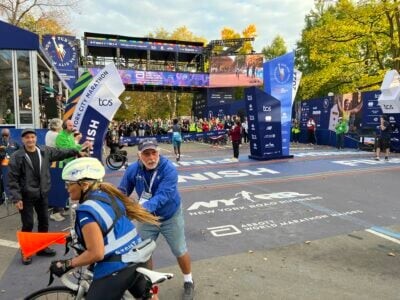
Four thoughts from a beautiful morning for racing in New York.
Abdihamid Nur wins his first national title…but how the heck did he make a wrong turn 15 meters from the finish line?
It’s always tricky knowing who is in shape for this race as most pro runners aren’t in top shape in November. Based on 5k personal best and 2022 form, however, Abdihamid Nur should probably have been the favorite and he looked great throughout the race, hanging onto Hillary Bor early as Bor pushed the pace before making his move in Central Park and opening up a cushion.
That cushion would prove necessary. It’s not uncommon to see an athlete make a wrong turn when the lead vehicle pulls off the course near the finish line, but I can’t ever remember someone doing it as late in the race as Nur. The finish line was in clear sight and only about 15 meters away when Nur veered to the left and tried to follow the lead car. It was a chaotic sight.
"The finish line was right there, but I just knew it,” Nur said. “They told me to follow the car, so I didn’t know that the car wasn’t going to the finish line. I’m glad Hillary wasn’t too close, because it was a mistake I could afford.”
Chalk it up to a rookie mistake — this was Nur’s first road race as a pro.
Nur’s time of 13:24 was very quick considering the undulating New York course. He smashed Paul Chelimo‘s course record of 13:45 and was just four seconds off Ben True‘s American record of 13:20 from the 2017 B.A.A. 5K. Nur’s wrong turn definitely cost him a second or two, but he didn’t know if it cost him the record.
“Maybe, who knows?” Nur said. “But I’m still happy with the win.”
(Note: David Monti points out that Grant Fisher‘s 13:01 at the Diamond League 5k final in September is considered the American road record because it came on an irregular 563-meter track, though that record has yet to be ratified by USATF. As far as LetsRun is concerned, you shouldn’t be able to set a road record on a track so True still has the record.)
The win capped a banner year for Nur, who won a pair of NCAA titles indoors, set the collegiate 5k record, made the Worlds team outdoors, and signed a pro deal with Nike. He’s still based in Flagstaff and even though the NAU men have struggled more than usual this year, he’s predicting a national title for them and his former teammate Nico Young at the NCAA XC champs in Stillwater in two weeks.“Coach Smith’s gonna have them ready for NCAAs,” Nur said. “I think they’re going to win and my boy Nico’s going to take the individual title.”
Weini Kelati is never that far from fitness
If it seems like Weini Kelati is always in shape, that’s because it’s true. She took a month off after the track season, but returned to training in September and quickly found herself in good shape. Today she ran 15:16 to win by 14 seconds and break the course record by two seconds — one set by Kelati in this event last year.
“What’s interesting about my body is it’s just not hard to build,” Kelati said. “I can get in 10 days, 80% of my fitness.”
Kelati, 25, has already found a lot of success on the roads in her young pro career. With her cross country background (Foot Locker and NCAA champ) and front-running style, she seems a natural fit for the half and, eventually, full marathon, but so far she has yet to race beyond 10k. When will we see her in the half?
“I’m not sure how soon,” Kelati said. “But I’m looking forward [to it]?”
Could we see her in a half in 2023?
“Let’s see, I don’t know,” she said with a smile. “Maybe.”
What we know for sure is that Kelati is not done racing on the track. After just missing out on a spot at Worlds in 2022 (she was 4th in the 5,000, 5th in the 10,000 at USAs), Kelati wants to make the team next year.
“I’m really excited to run road races and half marathon and stuff, but I have unfinished business on the track and I want to clear it up first,” Kelati said.
Kelati also said that during her break from running this summer, she got the opportunity to see her mother for the first time since she defected from her native Eritrea in 2014. The two were able to visit Uganda together, where they spent three weeks together.
“We were both in shock,” Kelati said. “For a week, we couldn’t believe [it]. She just [kept] touching me like, I can’t believe this is real. We both cried happy tears in the airport.”
Though Kelati had been able to talk to her mother over the phone since her arrival in the US, their conversations were never very long. In Uganda, they made up for lost time, often staying up until 4 a.m. catching up on all they had missed in each other’s lives the last eight years.
“The first 14 days, we just talked,” Kelati said.
Kelati said she emerged from the trip feeling renewed.
“That makes me feel like it’s a new beginning, a fresh start for me,” Kelati said.
(11/06/2022) ⚡AMP
Dash to the Finish Line
Be a part of the world-famous TCS New York City Marathon excitement, run through the streets of Manhattan, and finish at the famed Marathon finish line in Central Park—without running 26.2 miles! On TCS New York City Marathon Saturday, our NYRR Dash to the Finish Line 5K (3.1 miles) will take place for all runners who want to join in...
more...Kibet and Cheptegei mark triumphant day for Uganda as World Mountain and Trail Running Championships conclude
Ugandan athletes capped a successful week of racing at the inaugural World Mountain and Trail Running Championships in Chiang Mai, Thailand, as Samuel Kibet, Rebecca Cheptegei and Leonard Chemutai won three of the four titles on offer on Sunday (6), the final day of competition.
Kibet and Cheptegei won the senior men’s and women’s up and down mountain races respectively, both held over 11.2km with 475m ascent. Chemutai, meanwhile, took the junior men’s up and down title and Jessica Bailey led a British 1-2 in the junior women’s race, both competing over a 6.4km course with 224m ascent.

Uganda set out their stall early in the senior men’s race as Kibet formed part of a small lead group alongside compatriots Timothy Toroitich, Leonard Chemonges and Eliud Cherop, with Mexico’s Everado Moreno also trying his best to stick with them. The rest of the field was some 30 metres behind, Friday's uphill gold and silver medallists Patrick Kipngeno and Philemon Kiriago of Kenya leading the chase.
Eight kilometres later, Kibet emerged first from the trees, holding a 19-second advantage over Toroitich and Kipngeno who were locked together in second and third. Kipngeno eventually managed to pull away from Toroitich narrowed the gap to the leader, but it wasn't enough.
Kibet swept across the line to take the title, the sixth for a Ugandan senior man in the past eight World Championships. Kipngeno was 10 seconds behind, becoming the first double medallist at the new expanded championship format. Toroitich held on for bronze ahead of teammates Chemonges and Cherop in fourth and fifth. Spain's Andreu Blanes followed four seconds later, placing sixth.
With four athletes in the top five, Uganda was a clear winner of the team competition. Spain took silver with Italy just a single point behind, both teams placing three athletes inside the top 15.
The Ugandan dominance continued in the final race of the championships as Rispa Cherop, Rebecca Cheptegei and Annet Chelangat pushed the pace from the start with only Saturday's uphill world champion Allie McLaughlin of the USA able to hang on.As was the case with the senior and junior men’s races, it soon became a question of which of the Ugandan athletes would take the title. Cheptegei, still looking remarkably smooth, flew into the race's final kilometre with a 20-second gap over her teammate Chelangat and was jubilant as she tore across the finish line, flag in hand, to become the second Ugandan woman to win a mountain running world title.
Chelangat was no less ecstatic in second and the pair had time pose for the cameras before McLaughlin came in to take bronze, the second medal in a remarkable weekend for the US runner.
Romania's Monica Florea, both knees bleeding, came in fourth, just as she did in Friday's uphill race, confirming herself as one of the most consistent performers in mountain running, as did Britain’s Scout Adkin, who finished a minute further back in fifth.
With Cherop – one of the pre-race favourites – unable to finish, it meant Uganda didn’t have enough finishers to contend for the team title, opening the door for another country. Switzerland, with three finishers in the top 15, stepped up to take the team title, adding to the two sets of team medals they earned in the uphill race on Friday. Britain took team silver, while USA capped a strong championships with bronze.
Just as they did with the senior races on Sunday, Uganda dominated the junior men's event, filling the top four places to sweep the individual medals and earn team gold. Leonard Chemutai was a dominant winner ahead of teammates Caleb Tungwet, Denis Kiplangat and Silas Rotich.
Britain’s Finlay Grant was fifth individually but helped his country to secure team bronze, while France took team silver.
The junior women’s up and down mountain race was the only event on Sunday not won by Ugandan athletes. Jessica Bailey led a British 1-2 from teammate Rebecca Flaherty, also picking up gold in the team standings.
Italy's Axelle Vicari was third individually and a comfortable second in the team contest ahead of France.
Next year the championship heads to Europe and the spectacular trails of the Austrian Alps when the 2023 World Mountain and Trail Running Championships will take place in Innsbruck-Stubai, Tyrol from 6-10 June.
(11/06/2022) ⚡AMPby World Athletics
World Mountain and Trail Running Championships
Welcome all athletes, officials, coaches, and families to THE AMAZING THAILAND WORLD MOUNTAIN & TRAIL RUNNING CHAMPIONSHIPS 2021 (WMTRC2021). The event will feature 80km and 40km trail races, classic up and down and uphill only mountain races. It replaces World Championships previously hosted with World Athletics, WMRA (mountain running) and IAU and ITRA (trail). The Amazing Thailand World Mountain and...
more...




